



















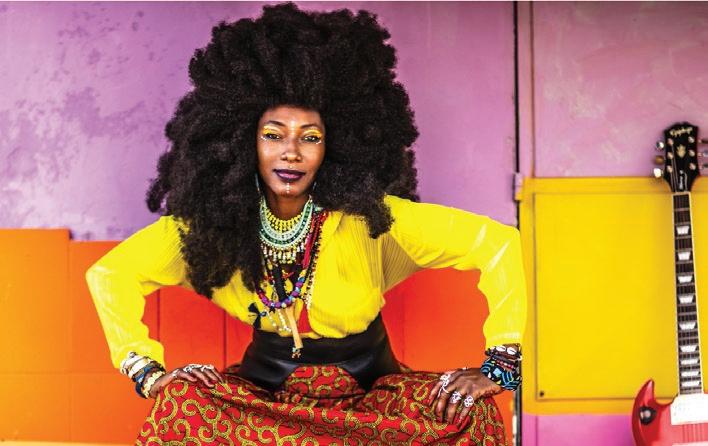


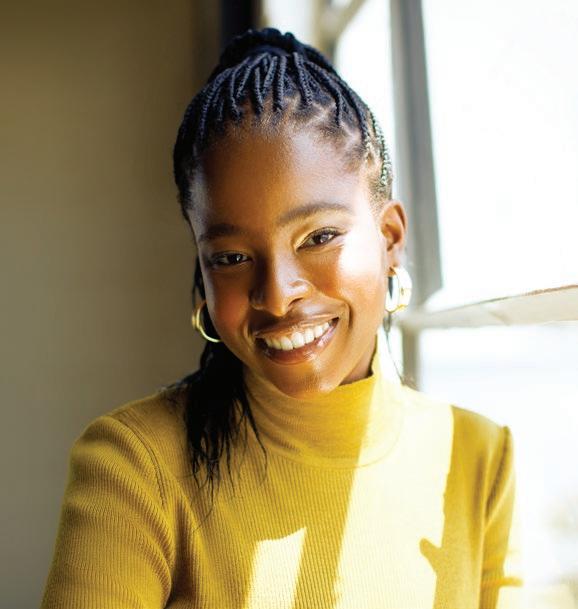



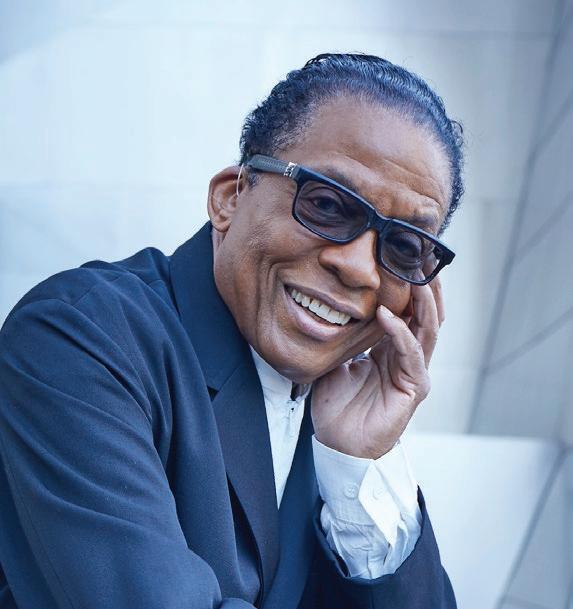





Spring Program 2024




wine country cuisine in the heart of the Historic Arts District


Fresh, local ingredients, prepared with care. Excellent wines that reflect the quality and character of our region and work in concert with the cuisine. Warm, inviting ambience with engaging service at a relaxed, leisurely pace. is is bouchon.
dinner nightly Sunday- ursday 5-9pm | Friday-Saturday 5-10pm






9 west victoria street | 805.730.1160 | bouchonsantabarbara.com bouchon
A Standing Ovation to Jody & John Arnhold
Launched in 2021 by a leadership gift from Jody & John Arnhold, the Arnhold Education Initiative has enabled Arts & Lectures to deepen its signature cross-campus collaborations by connecting world-class artists and thinkers with thousands of UCSB students in the classroom each year.

“The arts stimulate the imagination, so exposing students to those at the top of their craft will enhance the educational experience at UCSB. Students will think bigger, dream bigger, create bigger, and succeed bigger.” – John Arnhold




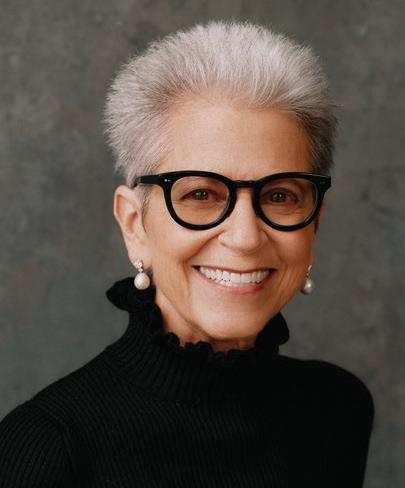

The Arnholds’ commitment to arts education extends far beyond A&L. Scan to learn more about Jody’s passion for dance education and how the Arnholds elevate the cultural landscape in their hometown of New York City.
893-3535 www.ArtsAndLectures.UCSB.edu
(805)
photo: David Bazemore; top inset: Kimberly Citro; bottom inset: Emilio Madrid Tiler Peck teaches a ballet master class for UCSB students
Wynton Marsalis and John Arnhold
Jody Arnhold
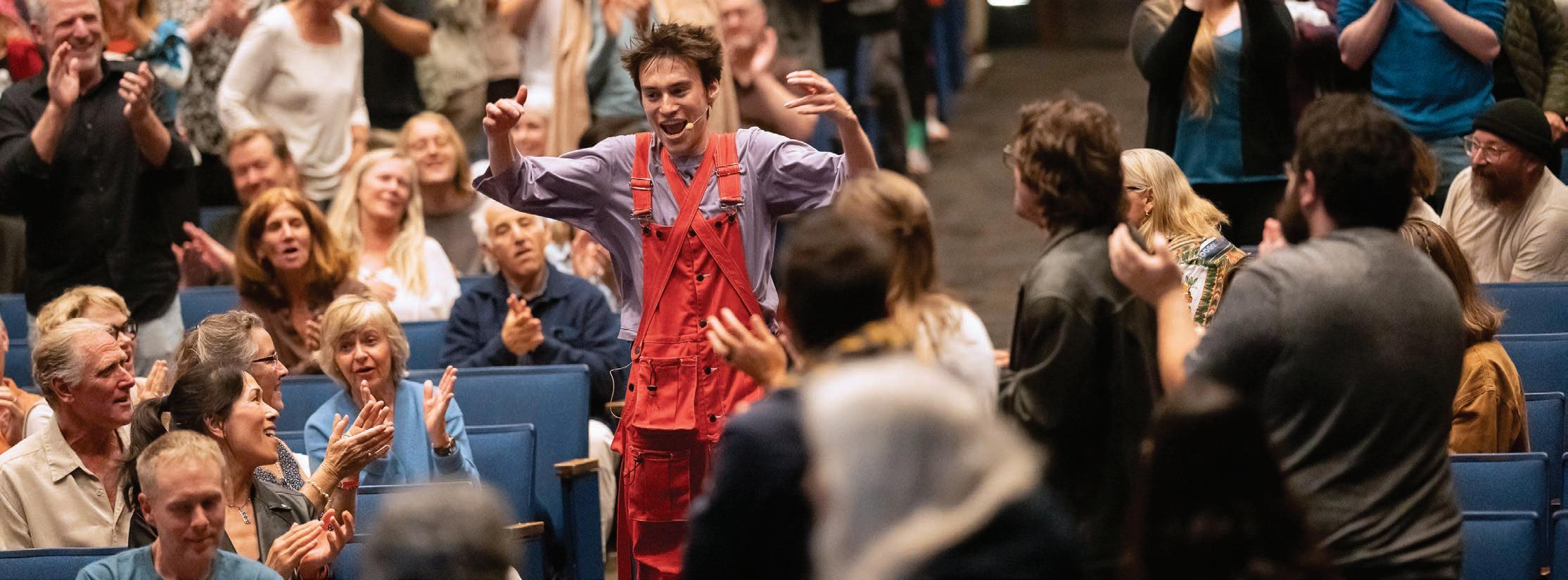
Dear Friends,
A&L’s lineup hits an all-time high this blockbuster spring.
Using the power of food to change the world, Chef José Andrés (Apr 21) serves haute cuisine with a generous helping of humanitarian courage. This just-added conversation will show us how a plate of food can bring hope for tomorrow.
Making a rare public appearance, poet Amanda Gorman (Apr 30) joins Justice for All for an evening of poetry and conversation with Pico Iyer.
Jazz genius Herbie Hancock (Apr 17) brings a stellar lineup of first-call musicians. Don’t miss this night of improvisation at its finest at the Arlington Theatre.
With her singular career melding miles-deep historical roots and contemporary sensibilities, Grammy, Pulitzer Prize and MacArthur “Genius” Award-winner Rhiannon Giddens (Apr 23) is back with her full band and a new album, You’re the One.
Celebrate the 40th anniversary of innovative dance company Alonzo King LINES Ballet (Apr 26) with the moving new work Deep River.
A&L’s Earth, Air, Fire, Water series culminates in our kind of super trio: environmental heroes Suzanne Simard (May 1), Ayana Elizabeth Johnson (May 7) and Cristina Mittermeier (May 10).
And sensational Jacob Collier (May 19) returns with his full band to bookend our season. Experience the performance everyone’s talking about when his DJESSE Vol. 4 World Tour hits Santa Barbara.

Plus so much more. Enjoy the season’s grand finale with a bounty of opportunities to discover, connect and celebrate.
With deepest gratitude, Community Partners

@artsandlectures 4
photo: Isaac Hernández de Lipa
Jacob Collier opened A&L’s 2023-2024 season with a sold-out solo performance at Campbell Hall and returns this spring to the Arlington Theatre.
Author Abraham Verghese, Celesta M. Billeci and Oprah Winfrey
Celesta M. Billeci Miller McCune Executive Director
Illuminating a wide spectrum of systemic injustice, the Justice for All programming initiative looks to today’s great minds and creators and to the courageous leaders across the globe who are forging a new path forward. Join us as we learn from those confronting uncomfortable questions, solving difficult problems, and guiding us all toward a more equitable world.
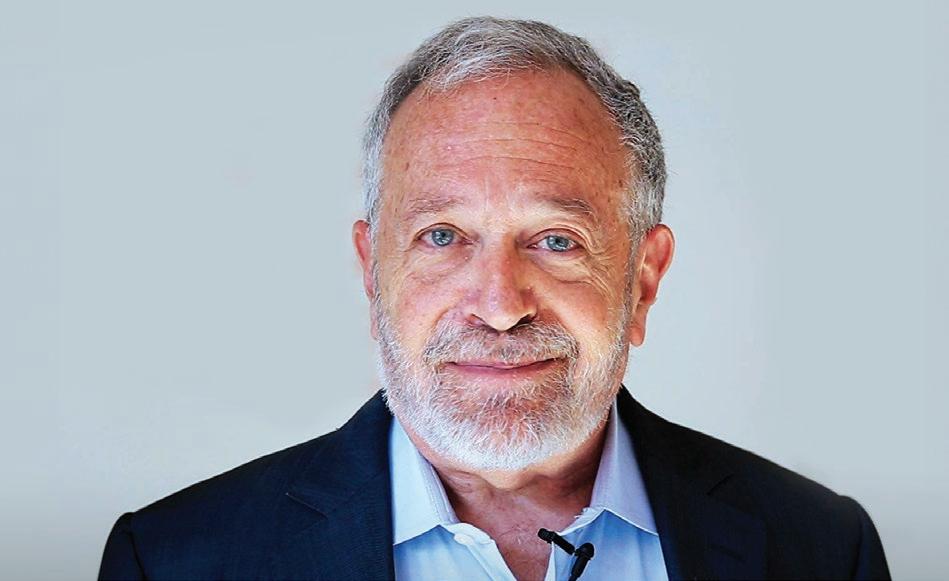
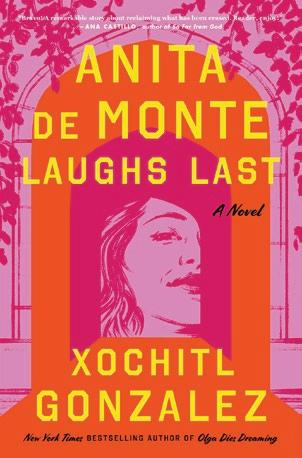


Robert B. Reich, Apr 3
Championing labor justice

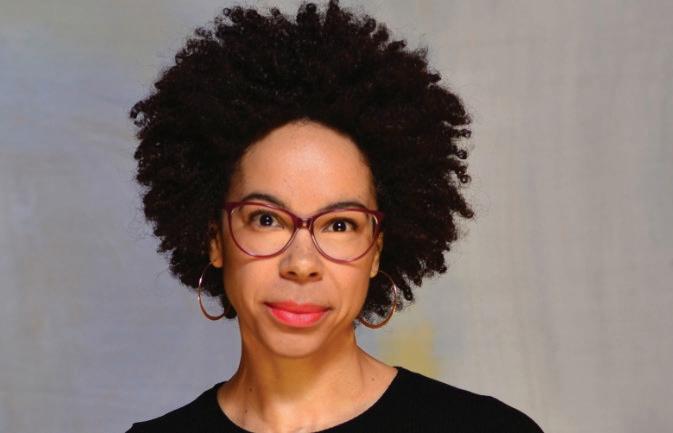


Xochitl Gonzalez, May 17
Dr. Ayana Elizabeth Johnson, May 7
Grounding conservation in social justice




Exploring class, gentrification and the American Dream

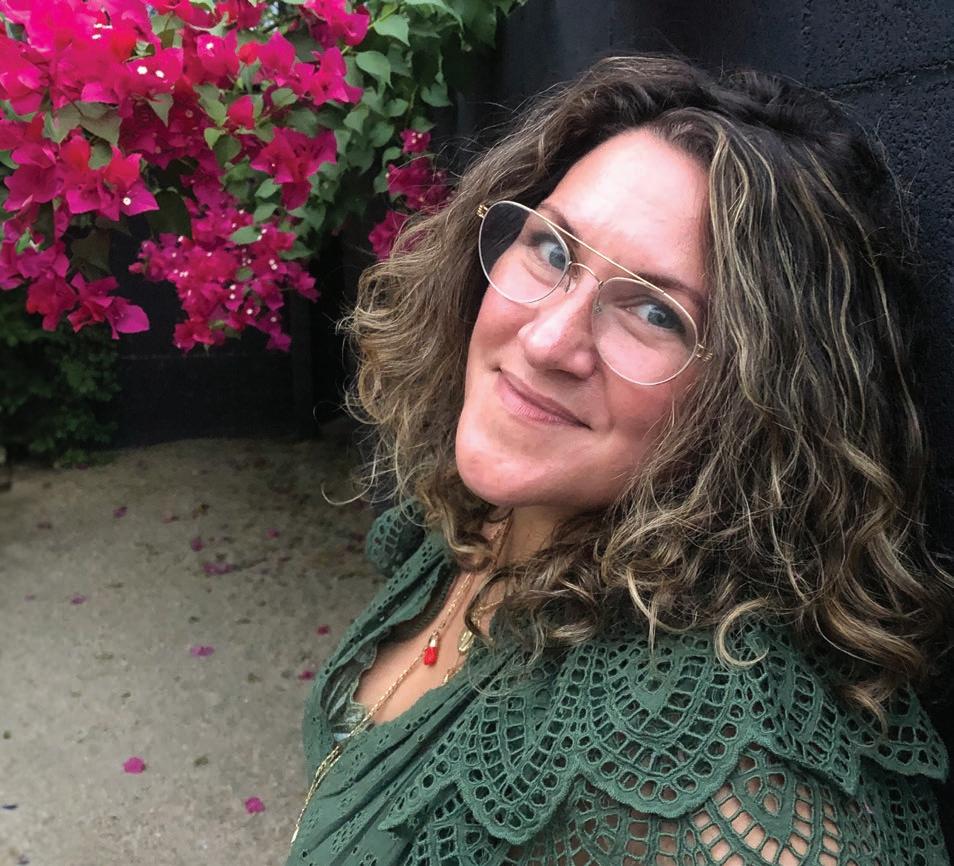





Amanda Gorman, Apr 30





Advocating for the environment, racial equality and gender justice



JUSTICE FOR ALL Lead Sponsors: Marcy Carsey, Connie Frank & Evan Thompson, Eva & Yoel Haller, Dick Wolf, and Zegar Family Foundation
JUSTICE FOR ALL UCSB Faculty Advisory Committee: Gerardo Aldana, Daina Ramey Berry, Charles Hale, Beth Pruitt, Victor Rios, Susannah Scott, Jeffrey Stewart, Sharon Tettegah
(805) 893-3535 | www.ArtsAndLectures.UCSB.edu 5
Arts & Lectures’ Thematic Learning Initiative (TLI) extends the conversation from the stage into the community, enriching lifelong learning and initiating dialogue and empowerment through special events, book giveaways and more.
Free Film Screening

RELATED EVENT José Andrés, Apr 21 (p. 24)
We Feed People
Film Screening
Sun, Apr 21 / 1:30 PM
Arlington Theatre / FREE (registration recommended)
From Oscar-winning director Ron Howard, We Feed People spotlights renowned chef José Andrés and his nonprofit World Central Kitchen’s incredible mission and evolution over a dozen years, from being a scrappy group of grassroots volunteers to becoming one of the most highly regarded humanitarian aid organizations in the disaster relief sector. (Ron Howard, 2022, 89 min.)
Stay after the screening to learn more from local organizations addressing food insecurity and sustainability in our community.
With thanks to our visionary partners, Lynda Weinman and Bruce Heavin, for their support of the Thematic Learning Initiative
@artsandlectures 6
2023-2024 Theme: Cultivating Connection
Fostering community through acts of joy, creativity and belonging

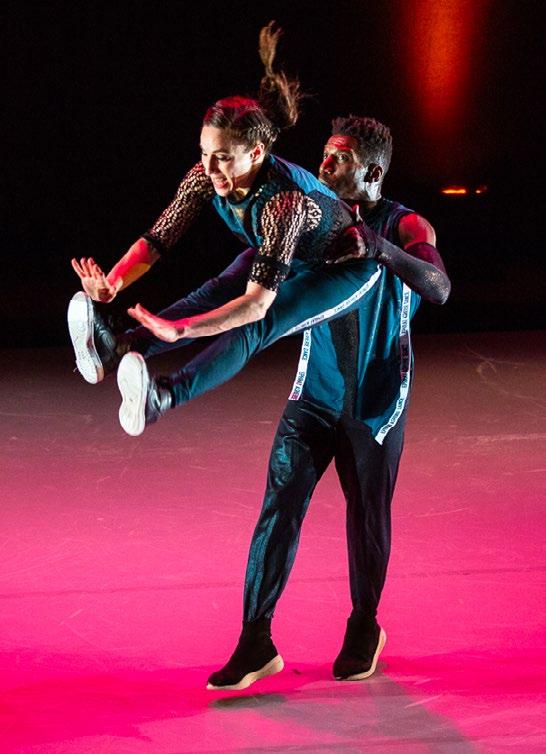
The Power of Play: Building Community in Marine Habitats
Surf Lesson with The Sea League
Sat, May 4 / 10 AM-12 PM / Leadbetter Beach (registration required)
Learn about the natural world in this morning of community building, including an all-levels surf lesson led by The Sea League’s expert staff. Through the power of play, draw connections between rising temperatures and acidification, rising sea levels and environmental injustice. (Ages 18+, all levels welcome)
RELATED EVENT Ayana Elizabeth Johnson, May 7 (p. 48)
Connecting Through Street and Social Dance
Community Dance Class
Mon, May 13 / 6-7 PM / Carrillo Ballroom (registration recommended)
FREE EVENTS
L atin X tr ava g a nz a Santa Barbara
Groove with NYC-based Ephrat Asherie Dance in a community class rooted in African American and Latinx street and club dance. Foster cultural connection through movement and discussion while gaining a more in-depth understanding of the global importance of hip-hop culture. (All levels welcome)
RELATED EVENT Ephrat Asherie Dance, May 15 (p. 52)
LatinXtravaganza Santa Barbara
Celebrating Latinx Culture and History
Fri, May 17 / 5-7 PM / Campbell Hall Plaza
Inspired by Brooklyn’s LatinXtravaganza, curated by the distinguished author and Pulitzer Prize finalist Xochitl Gonzalez, this vibrant celebration of Latinx culture and history localizes the spirit of Gonzalez’s powerful statement of inclusivity, diversity and the enduring contributions of the Latinx community to the fabric of American society.
RELATED EVENT Xochitl Gonzalez, May 17 (p. 60)
(805) 893-3535 | www.ArtsAndLectures.UCSB.edu
7
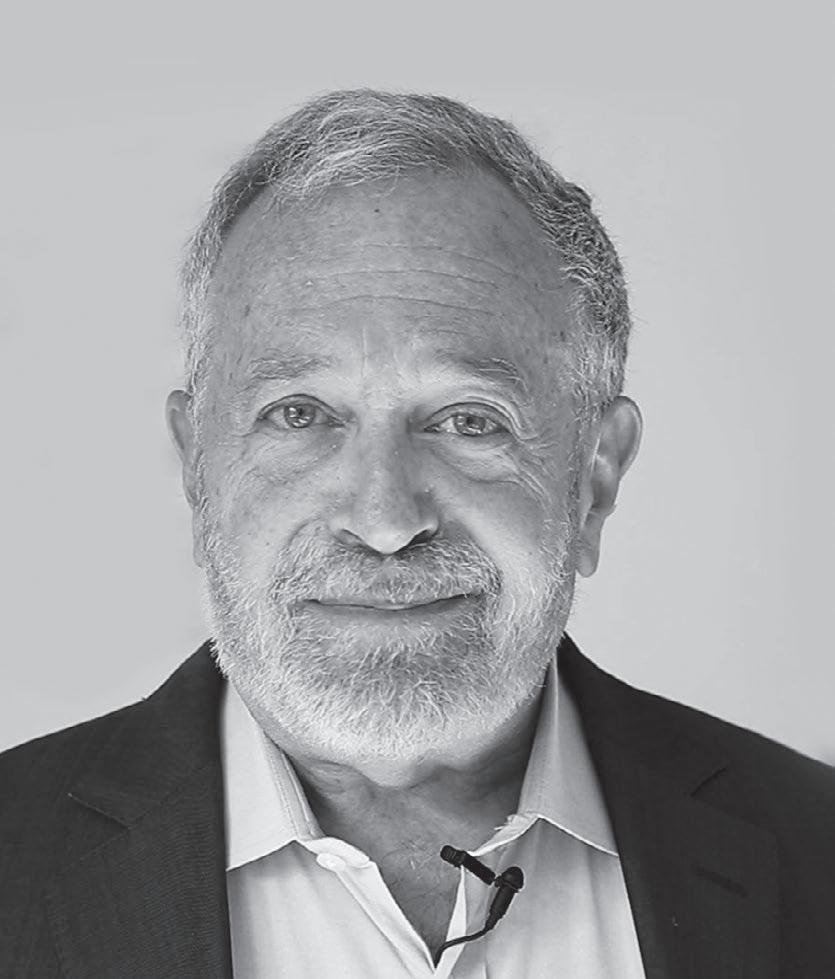
Robert B. Reich
What Really Happened to the American Dream? (And How Can it be Restored?)
Wed, Apr 3 / 7:30 PM / Campbell Hall
Supporting Sponsor: Jennifer & Jonathan Blum
Justice For All Lead Sponsors: Marcy Carsey, Connie Frank & Evan Thompson, Eva & Yoel Haller, Dick Wolf and Zegar Family Foundation
Presented in association with the following UCSB partners: Blum Center on Poverty, Inequality and Democracy, Central Coast Community Labor Project, Department of History, Graduate Student Association, and Walter H. Capps Center for Ethics, Religion and Public Life
Robert B. Reich is one of America’s foremost experts on jobs and the economy. He is also one of the world’s major advocates of reforms that spread the benefits of economic growth and strengthen democracy, through his work in three presidential administrations, his many bestselling books, his documentaries, Inequality for All and Saving Capitalism (a Netflix original), television commentaries, and videos.
His most recent book, The System: Who Rigged It, How To Fix It, faces the mounting sense that our political-economic system is no longer working and uncovers the core problem and how we remedy it. With the characteristic clarity and passion that have made him a central civil voice, Robert B. Reich shows how wealth and power have combined to install an oligarchy and undermine democracy. Reich exposes the myths of meritocracy, national competitiveness, corporate social responsibility, the “free market” and the political “center,” all of which are used by those at the top to divert attention from their takeover of the system and to justify their accumulation of even more wealth and power. In demystifying the current system, Reich reveals where power actually lies and how it is wielded, and invites us to reclaim power and remake the system for all.
He is a Senior Economics Contributor to CNN and a Newsweek columnist, and his writing has appeared in The Atlantic, The New Yorker, The Washington Post and The Wall Street Journal.
Reich is the Chancellor’s Professor of Public Policy at the University of California, Berkeley. He has served in three presidential administrations, including Secretary of Labor under President Bill Clinton, for which TIME magazine named him one of the ten most effective cabinet secretaries of the 20th century. Reich has written 18 books on the future of work and the new economy, including the bestsellers Aftershock, Beyond Outrage and Saving Capitalism, which urgently assesses the constantly-widening divisions affecting economics and politics today. Reich co-created (with Jacob Kornbluth) the award-winning documentary Inequality for All, a sobering look at economic inequality. Shortly after, his second documentary, Saving Capitalism, based on his book of the same name, became a Netflix original. He co-founded Inequality Media, an online video channel dedicated to raising awareness of economic inequality. To date, Reich’s videos on economics and politics have been viewed by over 90 million people around the world.
Books are available for purchase in the lobby and a signing follows the event
@artsandlectures 8

Fatoumata Diawara
Sun, Apr 7 / 7 PM / Campbell Hall
Running time: approx. 90 minutes, no intermission
Presented in association with UCSB Department of Music
Fatoumata Diawara, vocals, guitar
Juan Finger, bass, keyboards
William Ombe Monkama, drums
Jurandir Santana, guitar
Fernando Tejero, keyboards
Fatoumata Diawara
Fatoumata Diawara’s 2023 album London Ko offers the perfect combination of electronic sounds and the traditional melodies of a kora or N’goni, and of Mandinka rhythms in the percussion and her own griotic voice.
“I’ve had so many different musical adventures since the last album, touring and working with so many other musicians and I think you can hear how all of that feeds into this record” she says. “This is my time and I’m sharing my soul.”
Damon Albarn, the artist who invited her to share the Africa Express stage with Paul McCartney in London in 2012, and then to duet on “Désolé” on the 2020 Gorillaz album, has continued his adventure with the Malian singer, co-producing six tracks on London Ko. The title speaks volumes about the connection between the two artists, a definite choice to showcase the importance of sharing and the richness that can be found in difference, at a time when globalization and discrimination are on the rise.
“To me, London Ko means open minds, open spirits. It represents the connection of Damon Albarn with Malian music” says Diawara.
In an aesthetic universe that plays with space and time, Diawara moves between genres in perfect continuity with what she started on her 2018 album Fenfo. Afrobeat, jazz, pop, electro, rock, hip hop or even ska – Diawara never stops exploring, but it’s in the pentatonic scale that the magic happens, faithful to the traditional Mandinka register that she has been revisiting since she first started making music. She gives us a taste with the London Ko single “Nsera” (“Destination”), and with an explosive accompanying video by Grégory Ohrel. This first release from the album positioned her firmly in the Afrofuturist movement and among the leading artists in a continent with no shortage of talent.
“I put all my love, spirit and entire body into the creative process and this album is pure.”
Diawara’s intellectual and musical convictions transform the dissonances of the contemporary world by offering new universes of sound and understanding. She dares us to take an active role in our own lives, and this is the message that runs through all of her work.
From the beginning, it was in the film industry that Diawara forged her music career: her appearances alongside world famous Malian musicians captured the attention of the World Circuit label, allowing her to record her first album, Fatou, in 2011. The album was a hit in the international press, which lauded her as one of the greatest discoveries of young, female, African talent. Before long, she was given the opportunity to sing with artists like Herbie Hancock (The Imagine Project,
9 (805) 893-3535 | www.ArtsAndLectures.UCSB.edu
Grammy Award in 2011) and Bobby Womack. In 2012, she sang alongside Red Hot Chili Peppers bassist Flea, Tony Allen and Damon Albarn, among others, as part of the incredible project Rocket Juice & The Moon. Diawara continued to act, earning prominent roles in such internationally renowned films as Timbuktu (2014) and Yao (2018).
All these experiences contributed to shaping the singer’s voice and forging the musical identity heard on London Ko. The model she proposes stems from her own creativity, which expresses the voice of emancipation. With songs like “Netara” (“I’m Leaving”) or “Yada,” which addresses the arrogance of fame, Diawara reclaims ancestral vocal techniques, not to recount history but to push things forward. London Ko offers a prophetic vision of what Africa can do by inventing an alternative, and inclusive space and time where it is possible to become master of your own destiny. By taking care of form, the artist demonstrates not only care for the world, but also care for their ancestors, because, for Fatoumata Diawara, everything is connected.
Juan Finger
Based in Barcelona, Spain, Juan Finger is a bassist and musical producer. He was born in Buenos Aires, Argentina and recorded his first album at the age of 17. He studied in Buenos Aires at Escuela de Música Popular de Avellaneda, Escuela de Música Contemporánea and Conservatorio de Música Superior Manuel Falla. This background provided an understanding of Latin American music, allowing him to specialize in Afro Cuban Folk, Rumba, Salsa, Son and Timba, in addition to his studies in Jazz, Tango and Latinamerican Folk. He moved to Barcelona to expand his musical frontiers, studying Flamenco at the Taller de Músics, where he complemented his bass studies with piano and keyboards. This gave him the chance to play Flamenco in various tablaos and the Ciutat Flamenco Festival sharing the stage with José Mercé when presenting his record El Oripandó. In recent years, Finger dove into African music, first playing for Harouna Samake with Salif Keita and then becoming bassist and musical director for Fatoumata Diawara.
William Ombe Monkama
William Ombe Monkama is a drummer and percussionist with 18 years experience. He plays a wide range of musical styles, from opera to traditional music and Afro-jazz.
Jurandir Santana
Jurandir Santana is a Bahian guitarist born in El Salvador. An instrumentalist, composer and musical director, he has dedicated 25 years of his musical career to the performance, research and dissemination of Brazilian music. His long career has allowed him to assimilate a deep knowledge of the Brazilian musical complexity through the creation, search and discovery of new sounds and rhythms. As a teacher he has been invited to transmit his musical experience in some of the most famous music schools in the world (Berklee College of Music, Western Illinois University), and in events at the Curitiba Music Office or the African Marketplace, an important African music festival in Los Angeles.
Fer Tejero
Fer Tejero was born in Buenos Aires and received his first keyboard at age 12. He quickly started taking classical piano lessons and playing the songs he heard on the radio. His debut performance as a pianist was in a blues club in his hometown where he played with the band every weekend accompanying the blues artists coming from the United States. In 2002, he relocated to Barcelona to advance his professional career. He worked with various musicians in-studio, live, and on tour, thanks to his diverse range of musical influences. Tejero joined the band of Fatoumata Diawara as a keyboard player in 2020.
Special Thanks

@artsandlectures 10
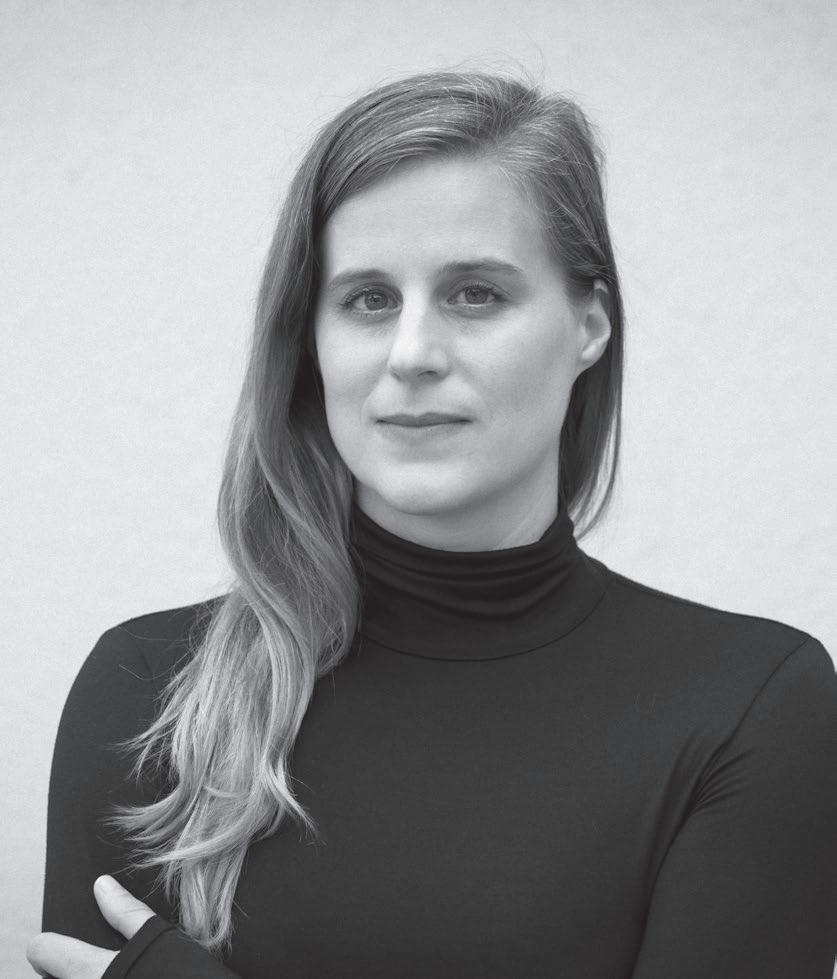
Lauren Groff
Lauren Groff
in Conversation with Pico Iyer
Tue, Apr 9 / 7:30 PM / Campbell Hall
Speaking with Pico Series Sponsors: Martha Gabbert, Siri & Bob Marshall and Laura & Kevin O’Connor
Presented in association with UCSB College of Creative Studies
Lauren Groff is a three-time National Book Award finalist and The New York Times bestselling author of the novels The Monsters of Templeton, Arcadia, Fates and Furies, Matrix and The Vaster Wilds, and the celebrated short story collections Delicate Edible Birds and Florida. She has won The Story Prize, the American Booksellers Association Indies Choice Award, France’s Grand Prix de l’Héroïne and the Joyce Carol Oates Prize, and has been a finalist for the National Book Critics Circle Award. Her work regularly appears in The New Yorker, The Atlantic, and elsewhere. Her work has been translated into 36 languages. She lives in Gainesville, Florida, where she and her husband run an independent bookstore, The Lynx.
Pico Iyer
Pico Iyer is the author of 16 books, translated into 23 languages, and dealing with subjects ranging from the XIVth Dalai Lama to Islamic mysticism and from globalism to the Cuban Revolution. They include such long-running sellers as Video Night in Kathmandu, The Lady and the Monk, The Global Soul and The Art of Stillness. His latest, The Half Known Life: In Search of Paradise, has been a national bestseller, and he’s just completing his next work, on his first 32 years with a community of Benedictine monks in Big Sur. He has also written the introductions to more than 70 other books, the liner notes for many Leonard Cohen albums and Criterion Collection movies and a screenplay for
Miramax. Since 1986 he has been a regular essayist for Time, The New York Times, Harper’s, The New York Review of Books and many others.
His four TED talks have received more than 11 million views, and he has been featured in program-length interviews with Oprah, Krista Tippett and Larry King, among others. Born in Oxford, England in 1957, Iyer was a King’s Scholar at Eton and was awarded a Congratulatory Double First at Oxford, where he received the highest marks of any student on English Literature at the university. He received a second master’s degree at Harvard and was recently a Ferris Professor at Princeton.
Books by both authors are available for purchase in the lobby and a signing follows the event
11 (805) 893-3535 | www.ArtsAndLectures.UCSB.edu
photo: Eli Sinkus

Danish String Quartet
Frederik Øland, violin
Rune Tonsgaard Sørensen, violin
Asbjørn Nørgaard, viola
Fredrik Schøyen Sjölin, cello
Johannes Rostamo, cello
Program
Franz Schubert: String Quintet in C Major, D.956
Allegro ma non troppo
Adagio
Scherzo: Presto
Allegretto
- Intermission -
Thomas Adès: Wreath for Franz Schubert (U.S. Premiere; Arts & Lectures Co-commission)
Franz Schubert (arr. Rune Tonsgaard Sørensen): “Die Nebensonnen” from Winterreise
Danish String Quartet
Johannes Rostamo, cello
The Doppelgänger Project, Part IV
Wed, Apr 10 / 7 PM / Campbell Hall
Running time: approx. 100 minutes, including intermission
Presented in association with UCSB Department of Music photo: Caroline Bittencourt
Event Sponsor: Anonymous
About the Program
Franz Schubert (1797-1828):
String Quintet in C Major, D.956
Universally acknowledged as one of the finest creations in all chamber music, Schubert’s String Quintet in C Major dates from the miraculous final year of that composer’s brief life, 1828. That year saw the revision of the “Great” Symphony in C Major and the composition of the three final piano sonatas, the songs of the Schwanengesang collection, this quintet, and the song “Der Hirt auf Dem Felsen,” completed in the weeks just prior to Schubert’s death on November 19. The date of the Quintet is difficult to pin down, but it was probably composed at the end of the summer: on October 2, Schubert wrote to one of his publishers that he had “finally turned out a Quintet for two violins, one viola, and two violoncellos.”
Some have been quick to hear premonitions of death in this quintet, as if this music – Schubert’s last instrumental work – must represent a summing-up of his life. But it is dangerous to read intimations of mortality into music written shortly before any composer’s death, and there is little basis for such a conclusion here – although he was ill during the summer, Schubert did not know that he was fatally ill. Rather than being death-haunted, the Quintet in C Major is music of great richness, music that suffuses a golden glow. Some of this is due to its unusual sonority: the additional cello brings weight to the instrumental texture and allows one cello to become a full partner in the thematic material, a freedom Schubert
12 @artsandlectures
fully exploits. Of unusual length (over 50 minutes long), the Quintet also shows the incredible harmonic freedom of Schubert’s final years – someone once commented that this music seems to change keys every two bars.
The opening Allegro ma non troppo is built on three theme groups: the quiet violin theme heard at the very beginning, an extended duet for the two cellos, and a little march figure for all five instruments. The cello duet is unbelievably beautiful, so beautiful that many musicians (certainly many cellists!) have said that they would like nothing on their tombstone except the music for this passage. But it is the march tune that dominates the development section; the recapitulation is a fairly literal repeat of the opening section, and a brief coda brings the movement to its close.
Longest of the four movements, the Adagio is in ABA form. The opening is remarkable. The three middle voices – second violin, viola, and first cello – sing a gentle melody that stretches easily over 28 bars; the second cello accompanies them with pizzicato notes, while high above the first violin decorates the melody with quiet interjections of its own. The middle section, in F minor, feels agitated and dark. A trill leads back to the opening material, but now the two outer voices accompany the melody with runs and swirls that have suddenly grown complex.
The third movement is a scherzo-and-trio, marked Presto. The bounding scherzo, with its hunting horn calls, is fairly straightforward, but the trio is quite unusual, in some surprising ways the emotional center of the entire Quintet. One normally expects a trio section to be gentle in mood, sometimes even a thematic extension of the scherzo. But this trio, marked Andante sostenuto and in the unexpected key of D-flat major, is spare, grave and haunting. Schubert sets it in 4/4 instead of the expected 3/4, and its lean lines and harmonic surprises give it a grieving quality quite different from the scherzo – and from the rest of the Quintet. The lament concludes, and the music plunges back into sunlight as the scherzo resumes.
Many have heard Hungarian folk music in the opening of the Allegretto, with its evocation of wild fiddling. The second theme is one of those graceful little tunes that only Schubert could write; both themes figure throughout the movement, until finally another cello duet leads to a fiery coda ingeniously employing both main themes.
The Quintet in C Major is one of the glories of the chamber music repertory and one of Schubert’s finest works. Yet he never heard a performance of it. The
Quintet may have been rehearsed at a gathering of Schubert’s friends in October – the evidence is unclear – and Schubert died a few weeks later. The music then slipped from memory: it lay in manuscript for years and was not officially premiered until 1850, 22 years after Schubert’s death.
Program notes by Eric Bromberger
Thomas Adès (b. 1971): Wreath for Franz Schubert
Wreath for Franz Schubert is a single-movement work for string quintet. The central string trio of violin, viola and cello play arco throughout, a gradually unfolding “lifespan” of entwined “blooms.” The outer violin and cello outline them in pizzicato. The players are loosely coordinated, but within specific boundaries, so that within certain limits no two performances would be the same, and the duration is flexible: between fifteen and thirty minutes, depending on the players, or maybe the weather.
The inescapable relation to Schubert’s double-cello quintet will be clear, especially to its slow movement. At a recent (devastating) performance of it, I was fascinated over again by the role of the second cello – at once lead singer, commentator and umpire.
I am most grateful to the great Danish String Quartet for giving me the time and encouragement to realize and develop this new path in my work.
– Thomas Adès
Franz Schubert (arr. Rune Tonsgaard Sørensen): “Die Nebensonnen” from Winterreise
In 1827, Schubert set 24 poems by the German romantic poet Wilhelm Müller for baritone and piano and titled the cycle Winterreise (“Winter Journey”). Winterreise has no plot, no development, no rising action and no satisfying conclusion. The central figure has no name, and we know nothing about him except that he has been rejected in love and has now set out upon a solitary winter journey. As he makes his way along icy roads and over frozen streams, with snow crunching beneath his feet and winds blowing about his head, he reflects on his devastation, and gradually we realize that there can be no release for this traveler, even in death: he is doomed to continue his lonely, icy journey.
“Die Nebensonnen” (The Phantom Suns) is the next-to-last song in Winterreise. The subject of this song feels surrealistic: the traveler encounters three suns in the sky above him and dismisses them, hoping that as they vanish, he too
13 (805) 893-3535 | www.ArtsAndLectures.UCSB.edu
can slip into darkness and death. Such a subject would seem to call for a violent setting, yet Schubert sets the song very gently, and it forms a good preface to the concluding song, “Der Leiermann,” which brings the cycle to its close in a freezing wasteland.
“Die Nebensonnen” is heard at this concert in an arrangement for string quartet by Rune Tonsgaard Sørensen, first violinist of the Danish String Quartet.
Danish String Quartet
The Danish String Quartet celebrated its 20th anniversary in 2023, and the Grammy-nominated quartet continues to assert its preeminence among the world’s finest string quartets. Formed when they were in their teens, they are renowned for impeccable musicianship, sophisticated artistry, exquisite clarity of ensemble and, above all, and an unmatched ability to play as one. Performances are characterized by a rare musical spontaneity, giving audiences the sense of hearing even treasured canon repertoire as if for the first time. They exude a palpable joy in music-making that has made them one of today’s most highly acclaimed and in-demand classical quartets, performing sold-out concert halls around the world. Their inventive and intriguing programming and repertoire choices have produced critically acclaimed original projects and commissions as well as popular arrangements of Scandinavian folk music.
This season, the Danish String Quartet continues its Doppelgänger series, an ambitious four-year international commissioning project. Doppelgänger pairs world premieres from four renowned composers –Bent Sørensen, Lotta Wennäkoski, Anna Thorvaldsdottir and Thomas Adès – with late major chamber works by Schubert. Each season, the Quartet performs a world premiere on a program with its doppelgänger – the Schubert quartet or quintet that inspired it – culminating in 2024 in the premiere of a quintet by Adès, after the String Quintet in C Major. The Doppelgänger pieces are commissioned by the Danish String Quartet with the support of Carnegie Hall, Cal Performances, UC Santa Barbara Arts & Lectures, Vancouver Recital Society, Flagey in Brussels, and Muziekgebouw in Amsterdam. The 2023-2024 season sees them on tour in 18 cities in the USA and Canada and venues in Norway, Germany, the United Kingdom, the Netherlands, Brussels, Italy and their home of Denmark.
The Danish String Quartet’s most recent recording project is Prism, a series of five discs on ECM New Series that explores the symbiotic musical and contextual
relationships between Bach fugues, Beethoven string quartets and works by Shostakovich, Schnittke, Bartok, Mendelssohn and Webern. In a review of the final release, Prism V, New York Times critic David Allen wrote “these releases must qualify as some of the most essential listening of the past decade.” The Quartet’s discography reflects the ensemble’s special affinity for Scandinavian composers, with the complete quartets of Carl Nielsen (DaCapo, 2007 and 2008) and Adès, Nørgård and Abrahamsen, on their ECM debut in 2016. They also released two discs of traditional Scandinavian folk music, Wood Works (Dacapo, 2014) and Last Leaf (ECM, 2017), which was one of the top classical albums of the year as chosen by NPR, Spotify and The New York Times, among others.
The Quartet takes an active role in reaching new audiences through special projects. In 2007, they established the DSQ Festival, which takes place in intimate and informal settings in Copenhagen. In 2016, they inaugurated a concert series, Series of Four, in which they both perform and invite colleagues to appear.
They are the recipients of many awards and prestigious appointments, including Musical America’s 2020 Ensemble of the Year and the Borletti-Buitoni Trust. The Quartet was named in 2013 as BBC Radio 3 New Generation Artists and appointed to The Bowers Program (formerly CMS Two). The Quartet was then awarded the 2010 NORDMETALL-Ensemble Prize at the Mecklenburg-Vorpommern Festival in Germany, and in 2011 they received the Carl Nielsen Prize, the highest cultural honor in Denmark.
Violinists Frederik Øland and Rune Tonsgaard Sørenson and violist Asbjørn Nørgaard met as children at a music summer camp where they played soccer and made music together. As teenagers, they began the study of classical chamber music and were mentored by Tim Frederiksen of Copenhagen’s Royal Danish Academy of Music. In 2008, the three Danes were joined by Norwegian cellist Fredrik Schøyen Sjölin.
www.danishquartet.com
Johannes Rostamo
Finnish cellist Johannes Rostamo is a versatile musician, interested in all forms of musical communication from early Baroque to contemporary music, jazz and folk. He has served as principal cellist in the Royal Stockholm Philharmonic Orchestra since 2008 and as professor of cello at Royal College of Music in Stockholm since 2022.
14 @artsandlectures
He also has an active career as soloist, chamber musician and Baroque musician. In addition, Rostamo is the artistic leader of Orfeus Barock Stockholm with a concert series in Grünewaldsalen, Stockholm.
Rostamo enjoys creating projects, such as the latest CelloCelloCello, a solo project where he presents the timeline of his instrument from the 17th century to the contemporary music of today, combining Baroque and modern cello. He is also a founding member of the chamber music concept Stockholm Syndrome Ensemble which experiments on the concert form itself and collaborates with musicians and artists of all genres. Since 2011, this acclaimed group has had concert series in Stockholm and their albums Moveable Feast (Channel Classics) and Voices of Angels (BIS) were both received with the highest praise. During the summer season, Rostamo is a recurrent guest at major chamber music festivals throughout Europe.
As a soloist, he appears regularly with orchestras in the Nordic countries. His recording of Carl Philipp Emanuel Bach’s Cello Concerto in A Minor with Orfeus Barock Ensemble received a Swedish Grammy nomination. His recording of Joonas Kokkonen’s cello concerto with conductor Paul Mägi and the KMH Symphony Orchestra live in Tallinn in 2006 was released by Academus.
Apart from his work in Stockholm, he is often invited to work as guest principal cellist in such orchestras as Royal Concertgebouw Orchestra, Bavarian Radio Symphony Orchestra, Australian Chamber Orchestra, Mahler Chamber Orchestra, Les Siécles (Paris), Scottish Chamber Orchestra and Camera Bern. In addition, he is a regular guest in the Chamber Orchestra of Europe.
He studied music in Helsinki, Stockholm, Oslo and the European Chamber Music Academy (ECMA) with professors Heikki Rautasalo, Torleif Thedéen, Truls Mörk, Frans Helmerson and Hatto Beyerle. In addition, he has studied Baroque cello with Emmanuel Balssa, Bruno Cocset and Gaetano Nasillo.
Rostamo plays a cello built by Antonio Stradivari in Cremona in 1698, generously loaned to him by Conni Jonsson.
www.johannesrostamo.com
Wreath for Franz Schubert is commissioned by the Danish String Quartet with the support of Carnegie Hall, Cal Performances, Vancouver Recital Society, UC Santa Barbara Arts & Lectures, Flagey and Muziekgebouw aan’t IJ.
15 (805) 893-3535 | www.ArtsAndLectures.UCSB.edu
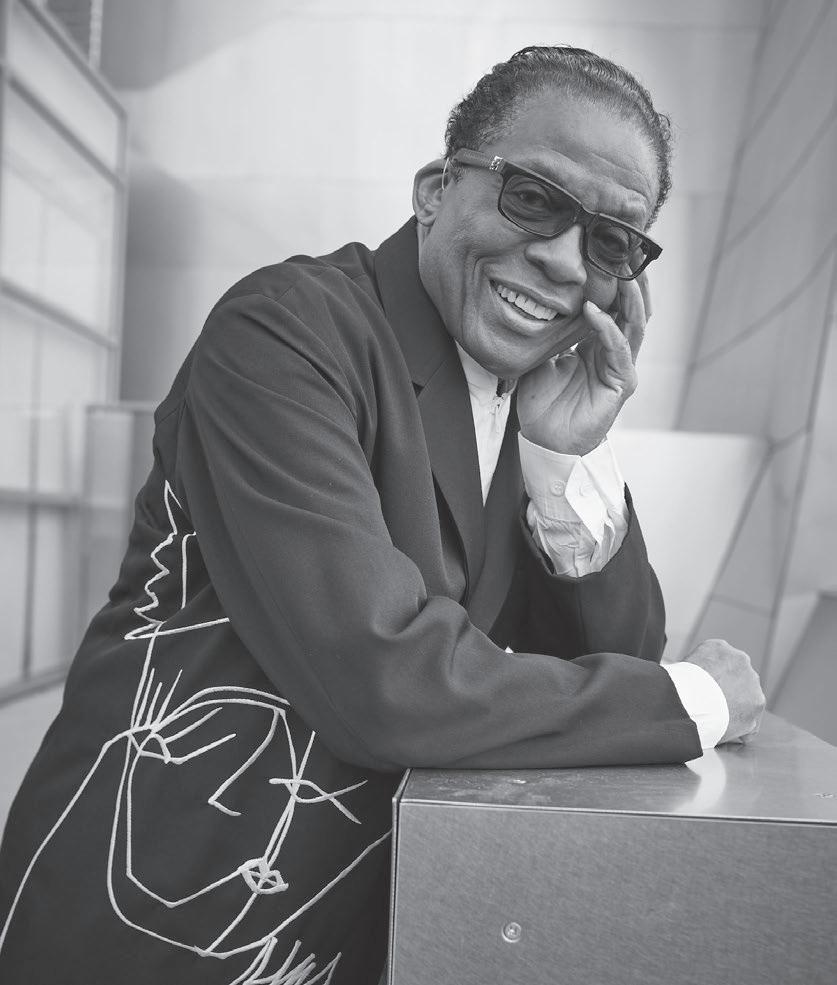
photo: Danny Clinch
Herbie Hancock
Wed, Apr 17 / 8 PM / Arlington Theatre
Running time: approx. 90 minutes without intermission
Event Sponsors: Russell Steiner and Susan & Bruce Worster
Jazz Series Lead Sponsor: Manitou Fund
Herbie Hancock, piano, keyboards
Devin Daniels, saxophone
James Genus, bass
Trevor Lawrence, Jr., drums
Chris Potter, saxophone
Herbie Hancock is a true icon of modern music. Throughout his explorations, he has transcended limitations and genres while maintaining his unmistakable voice. With an illustrious career spanning five decades and 14 Grammy Awards, including Album of the Year for River: The Joni Letters, he continues to amaze audiences across the globe.
There are few artists in the music industry who have had more influence on acoustic and electronic jazz and R&B than Herbie Hancock. As the immortal Miles Davis said in his autobiography, “Herbie was the step after Bud Powell and Thelonious Monk, and I haven’t heard anybody yet who has come after him.”
Born in Chicago in 1940, Hancock was a child piano prodigy who performed a Mozart piano concerto with the Chicago Symphony Orchestra at age 11. He began playing jazz in high school, initially influenced by Oscar Peterson and Bill Evans. He also developed a passion for electronics and science, and double-majored in music and electrical engineering at Grinnell College.
In 1960, Hancock was discovered by trumpeter Donald Byrd. After two years of session work with Byrd as well as
Phil Woods and Oliver Nelson, he signed with Blue Note as a solo artist. His 1963 debut album, Takin’ Off, was an immediate success, producing the hit “Watermelon Man.”
In 1963, Miles Davis invited Hancock to join the Miles Davis Quintet. During his five years with Davis, Hancock and his colleagues Wayne Shorter (tenor sax), Ron Carter (bass) and Tony Williams (drums) recorded many classics, including “ESP,” “Nefertiti” and “Sorcerer.” Later on, Herbie appeared on Davis’ groundbreaking In a Silent Way.
Hancock’s solo career blossomed on Blue Note, with classic albums including Maiden Voyage, Empyrean Isles and Speak Like a Child. He composed the score to Michelangelo Antonioni’s 1966 film Blow Up, which led to a successful career in feature film and television music.
After leaving Davis, Hancock put together a new band called The Headhunters and, in 1973, recorded Head Hunters. With its crossover hit single “Chameleon,” it became the first jazz album to go platinum. By middecade, Hancock was playing for stadium-sized crowds all over the world and had no fewer than four albums in the pop charts at once. In total, Hancock had 11 albums in the pop charts during the 1970s. His ‘70s output inspired and provided samples for generations of hiphop and dance music artists. Hancock also stayed close to his love of acoustic jazz in the ‘70s, recording and performing with V.S.O.P. (reuniting him with his Miles Davis colleagues), and in duet settings with Chick Corea and Oscar Peterson.
16 @artsandlectures
In 1980, Hancock introduced the trumpeter Wynton Marsalis to the world as a solo artist, producing his debut album and touring with him as well. In 1983, a new pull to the alternative side led Hancock to a series of collaborations with Bill Laswell. The first, Future Shock, again struck platinum, and the single “Rockit” rocked the dance and R&B charts, winning a Grammy for Best R&B Instrumental. The video of the track won five MTV awards. Sound System, the follow-up, also received a Grammy in the R&B instrumental category.
Hancock won an Oscar in 1986 for scoring the film Round Midnight, in which he also appeared as an actor. Numerous television appearances over the years led to two hosting assignments in the 1980s: Rock School on PBS and Showtime’s Coast To Coast. After an adventurous 1994 project for Mercury Records, Dis Is Da Drum, he moved to the Verve label, forming an all-star band to record 1996’s Grammy-winning The New Standard. In 1997, an album of duets with Wayne Shorter, 1+1, was released.
The legendary Headhunters reunited in 1998, recording an album for Hancock’s own Verve-distributed imprint, and touring with the Dave Matthews Band. That year also marked the recording and release of Gershwin’s World, which included collaborators Joni Mitchell, Stevie Wonder, Kathleen Battle, the Orpheus Chamber Orchestra, Wayne Shorter and Chick Corea. Gershwin’s World won three Grammys in 1999, including Best Traditional Jazz Album and Best R&B Vocal Performance for Stevie Wonder’s “St. Louis Blues.”
Hancock reunited with Bill Laswell to collaborate with some young hip-hop and techno artists on 2001’s FUTURE2FUTURE. He also joined with Roy Hargrove and Michael Brecker in 2002 to record a live concert album, Directions In Music: Live at Massey Hall, a tribute to John Coltrane and Miles Davis.
Possibilities, released in August 2005, teamed Hancock with many popular artists, such as Sting, Annie Lennox, John Mayer, Christina Aguilera, Paul Simon, Carlos Santana, Joss Stone and Damien Rice. That year, he played a number of concert dates with a re-staffed Headhunters, and became the first-ever Artist-InResidence at the Tennessee-based festival Bonnaroo.
In 2007, Hancock recorded and released River: The Joni Letters, a tribute to longtime friend and collaborator Joni Mitchell featuring Wayne Shorter, guitarist Lionel Loueke, bassist Dave Holland and drummer Vinnie Colaiuta and co-produced by Larry Klein. He enlisted vocalists
Norah Jones, Tina Turner, Corinne Bailey Rae, Luciana Souza, Leonard Cohen and Mitchell herself to perform songs she wrote or was inspired by. The album received glowing reviews and was a year-end Top 10 choice for many critics. It also garnered three Grammy Awards, including Album of the Year; Hancock is one of only a handful of jazz musicians ever to receive that honor.
In 2010, Hancock released the critically-acclaimed CD, The Imagine Project, winner of two 2011 Grammy awards for Best Pop Collaboration and Best Improvised Jazz Solo. Utilizing the universal language of music to express its central themes of peace and global responsibility, the Imagine project was recorded around the world and features a stellar group of musicians including Jeff Beck, Seal, Pink, Dave Matthews, The Chieftains, Lionel Loueke, Oumou Sangare, Konono #1, Anoushka Shankar, Chaka Khan, Marcus Miller, Derek Trucks, Susan Tedeschi, Tinariwen and Ceu.
Hancock also maintains a thriving career outside the performing stage and recording studio. Recently named by the Los Angeles Philharmonic as Creative Chair For Jazz, he currently also serves as Institute Chairman of the Herbie Hancock Institute of Jazz. Hancock is also a founder of The International Committee of Artists for Peace, and was awarded the much esteemed “Commandeur des Arts et des Lettres” by French Prime Minister Francois Fillon.
In July of 2011, Hancock was designated a UNESCO Goodwill Ambassador. In December 2013, Hancock was the recipient of a prestigious Kennedy Center Honor, and in 2014 he was named the Norton Professor of Poetry at Harvard University, completing his Charles Eliot Norton Lecture Series on “The Ethics Of Jazz” in six weeks. His memoir, Herbie Hancock: Possibilities, was published by Viking in 2014, and in February 2016 he was awarded the Grammy Lifetime Achievement Award. A member of the American Academy of Arts and Sciences, Hancock is currently in the studio at work on a new album.
Now in the seventh decade of his professional life, Hancock remains where he has always been: at the forefront of world culture, technology, business and music. Though one can’t track exactly where he will go next, he is sure to leave his inimitable imprint wherever he lands.
17 (805) 893-3535 | www.ArtsAndLectures.UCSB.edu
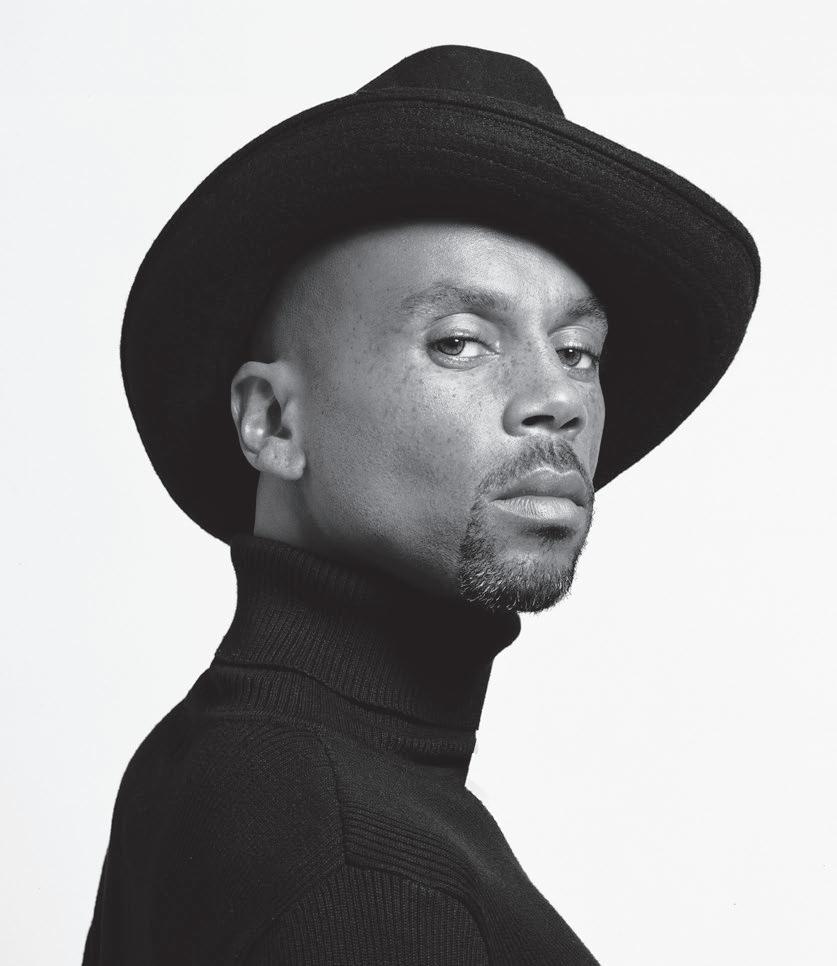
RuPaul
The House of Hidden Meanings
Thu, Apr 18 / 7:30 PM / Arlington Theatre
Presented in association with Pacific Pride Foundation and the following UCSB partners: Office of Black Student Development and Resource Center for Sexual and Gender Diversity
RuPaul Charles is a Tony Award winner and the 12-time Primetime Emmy Award-winning executive producer of one of the world’s largest television franchises, RuPaul’s Drag Race. He holds the Guinness World Records title for most Emmy wins for Outstanding Host of Reality/ Competition Program, and most Emmy awards of any Black artist in history.
A San Diego native, RuPaul became a popular fixture on the New York City nightclub scene and achieved international fame with the song “Supermodel (You Better Work)” from his 1993 debut album. He has written and recorded 18 studio albums to date. RuPaul gained notoriety as a captivating and influential figure known for breaking down barriers and promoting selfexpression and acceptance. In 1995, he became the first face of MAC Cosmetics, raising millions for the MAC AIDS Fund and becoming the first man to land a major cosmetics campaign. The next year, he landed a TV talk show on VH1. In 2017, RuPaul was named one of the TIME 100 list of the world’s most influential people.
RuPaul has appeared in over 50 films and television shows both in and out of drag. As an author, he has published three books: GuRu (Harper Collins, 2018), Workin’ It! RuPaul’s Guide to Life, Liberty, and the Pursuit of Style (Harper Collins, 2010), and Lettin’ It All Hang Out (Hyperion Books, 1995).
Central to RuPaul’s success has been his chameleonic adaptability. From drag icon to powerhouse producer of one of the world’s largest television franchises, RuPaul’s ever-shifting nature has always been part of his brand as
both supermodel and supermogul. Yet that adaptability has made him enigmatic to the public. In this memoir, his most intimate and detailed book yet, RuPaul makes himself truly known.
In The House of Hidden Meanings, RuPaul strips away all artifice and recounts the story of his life with breathtaking clarity and tenderness, bringing his signature wisdom and wit to his own biography. From his early years growing up as a queer Black kid in San Diego navigating complex relationships with his absent father and temperamental mother, to forging an identity in the punk and drag scenes of Atlanta and New York, to finding enduring love with his husband Georges LeBar and self-acceptance in sobriety, RuPaul excavates his life story, uncovering new truths and insights in his personal history.
Here in RuPaul’s singular and extraordinary story is a manual for living – a personal philosophy that testifies to the value of chosen family, the importance of harnessing what makes you different and the transformational power of facing yourself fearlessly.
A profound introspection of his life, relationships and identity, The House of Hidden Meanings is a self-portrait of the legendary icon on the road to global fame and changing the way the world thinks about drag. “I’ve always loved to view the world with analytical eyes, examining what lies beneath the surface. Here, the focus is on my own life – as RuPaul Andre Charles,” says RuPaul. If we’re all born naked and the rest is drag, then this is RuPaul totally out of drag. This is RuPaul stripped bare.
18 @artsandlectures

Antonio Sánchez Birdman Live
10th Anniversary Fri, Apr 19 / 8 PM / Arlington Theatre
Presentation licensed by Disney Concerts © All rights reserved
Birdman: Directed by Alejandro G. Iñárritu, 2014, 119 min.
Presented in association with UCSB Department of Music
Born in Mexico City, four-time Grammy Award-winner Antonio Sánchez began playing the drums at age five and performed professionally in his early teens in Mexico’s rock, jazz and latin scenes.
He pursued a degree in classical piano at the National Conservatory in Mexico and in 1993 enrolled in Berklee College of Music and New England Conservatory, where he graduated Magna Cum Laude in Jazz Studies.
Since moving to New York City in 1999, Sánchez has become one of the most sought-after drummers on the international jazz scene. Following 18 years and nine albums as one of the most revered collaborators with guitarist/composer Pat Metheny, he also has recorded and performed with many other most prominent artists like Chick Corea, Gary Burton, Michael Brecker, Charlie Haden and Toots Thielmans.
In 2014, Sánchez’s popularity soared when he scored Alejandro González Iñárritu’s Birdman or (The Unexpected Virtue of Ignorance) which ended up fetching four Academy Awards (including Best Picture) and for which Sánchez won a Grammy Award. Additional film/tv projects include EPIX network’s Get Shorty and Hippopotamus among others.
With more than a dozen recordings as a leader or co-leader, Sánchez’s recent projects include the acclaimed epic The Meridian Suite and the star-studded Three Times Three. He turned his upset over social injustice into a tribute to every immigrant’s journey in his epic musical statement Lines in the Sand.
Sánchez is the recipient of four Grammys, three Echo Awards, Golden Globe and BAFTA nominations and has been thrice named Modern Drummer’s “Jazz Drummer of the Year.” He has been on the covers of DownBeat, JazzTimes, JAZZIZ, Modern Drummer, Drum! and Musico Pro – among others.

Sánchez’s new album SHIFT (Bad Hombre Vol. II) on Warner Music features Sánchez playing virtually every instrument on the album – in addition to being its producer. SHIFT features Trent Reznor, Dave Matthews, Kimbra, Ana Tijoux, Meshell Ndegeocello and more.
Special Thanks

19 (805) 893-3535 | www.ArtsAndLectures.UCSB.edu
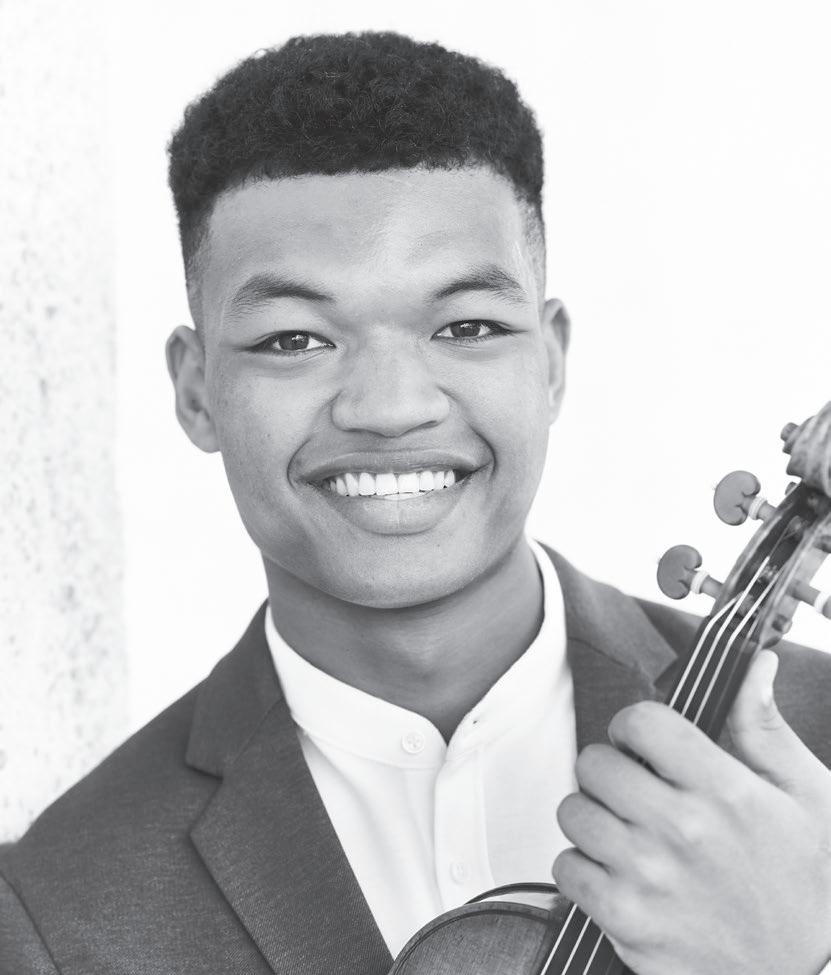
Randall Goosby, violin
Zhu Wang, piano
Sat, Apr 20 / 7 PM / Hahn Hall
Running time: approx. 110 minutes, including intermission
Education support provided by the Sonquist Family Endowment photo: Kaupo Kikkas
Samuel Coleridge-Taylor: Suite for Violin and Piano, op. 3
Pastorale
Cavatina
Barcarolle
Contemplation
Johannes Brahms: Violin Sonata No. 2 in A Major, op. 100 “Thun”
Allegro amabile
Andante tranquillo – Vivace
Allegretto grazioso, quasi Andante
William Grant Still: Suite for Violin and Piano
African Dancer
Mother and Child
Gamin
- Intermission -
Florence Price: Two Fantasies
Fantasie No. 1 in G Minor
Fantasie No. 2 in F-sharp Minor
Richard Strauss: Violin Sonata in E-flat Major, op. 18
Allegro ma non troppo
Improvisation: Andante cantabile
Finale: Andante – Allegro
About the Program
Samuel Coleridge-Taylor (1875-1912): Suite for Violin and Piano, op. 3
With the premiere of his cantata Hiawatha’s Wedding Feast in 1898, Samuel Coleridge-Taylor catapulted to fame in his native Britain. The work, the first in a triptych of cantatas entitled Song of Hiawatha, became a staple of the English choral repertoire: within six years the work had received more than two hundred performances in England alone. Word of the brilliant young Black composer reached the United States, where an African-American choral society bearing Taylor’s name sprang up in Washington, D.C. Alain Locke, “Dean” of the Harlem Renaissance, recalled that a performance of Coleridge-Taylor’s music had left him “stunned”; Booker T. Washington went further, calling him “the foremost musician of his race.”
Encouraged by his acquaintances with Washington and the writer Paul Laurence Dunbar, Coleridge-Taylor composed numerous African-American-themed works. His last decade saw the genesis of such compositions including his African Dances for violin and his settings of Twenty-Four Negro Melodies. The Suite for Violin and Piano, however, predates this cultural awakening by several years. One of his first student pieces, it displays none of the African-American musical influences found in later works.
Coleridge-Taylor composed the work as a teenager while studying at the newly-formed Royal College of Music. Though he entered as a violin student, he shifted
20 @artsandlectures
the focus of his studies after winning a composition scholarship. Like much of Coleridge-Taylor’s music the suite displays a clear gift for melody, a product of the English choral tradition in which he was raised.
The suite opens with a slow and lyrical pastoral scene. Limpid melodies soar over a straightforward accompaniment. An equally tuneful cavatina follows; the piano provides a simple but at times turbulent accompaniment to the violin’s graceful and wide-ranging lines.
The third movement, a lilting barcarolle, takes its name from the folk songs traditionally sung by Venetian gondoliers; the 6/8 time signature evokes the stroke of the gondolier’s oar. Coleridge-Taylor concludes the suite with a short, contemplative song.
Johannes Brahms (1833-1897):
Violin Sonata No. 2 in A Major, op. 100 “Thun”
In his later years Brahms spent his summers in the countryside. These retreats, often to beautiful resort towns, allowed him to work undisturbed by Vienna’s bustling streets. He composed the Second Violin Sonata in 1886, the first of three summers spent in the Swiss town of Thun. By summer’s end Brahms had produced a number of works including the Second Violin Sonata and a portion of the Third, a sonata for cello, a piano trio, and several songs. Brahms quotes one of these, “Wie Melodien zieht es mir,” in the first movement of this violin sonata.
The opening movement bears the tempo marking Allegro amabile. The qualifier “amabile” (“amiable” or “pleasant”) appears in just two of Brahms’s compositions, both late-period sonatas. In this case, the amiable mood arose from more than just the Swiss scenery. Brahms was infatuated with his friend Hermine Spies, a much younger contralto who performed some of his songs including “Wie Melodien zieht es mir,” which he wrote with her in mind. “I’m now getting to the years where a man easily does something stupid,” Brahms wrote to a friend that summer, “so I have to doubly watch myself.”
The lyrical first movement proceeds at an unhurried pace. Brahms’s languid themes are at times rhapsodic but rarely virtuosic, even in the movement’s agitated middle section. The supreme tunefulness echoes the opening stanza of “Wie Melodien zieht es mir”: “Thoughts, like melodies, / Steal softly through my mind, / Like spring flowers they blossom / And drift away like perfume.”
The second movement alternates between two contrasting sections, a stately andante followed by a
minor-key vivace dance. The second iteration of the vivace finds the violin switching between plucking and bowing. The movement closes with a soaring return of the andante theme and a brief, plucked snippet of the dance.
Brahms concludes the sonata with a graceful Allegretto. The violin’s tender melodies sit noticeably low in the instrument’s range, surrounded by ripples of passionate piano arpeggios. Impulsive and capricious, the music builds to a climax of ecstatic violin double stops.
William Grant Still (1895-1978): Suite for Violin and Piano
William Grant Still was born in Woodville, Mississippi, a small town on the Louisiana state line. Despite his mother’s protestations he insisted upon studying music; Samuel Coleridge-Taylor became an important role model in Still’s college years. After a stint in W. C. Handy’s band in Memphis and service in the First World War, Still moved to New York where he took various jobs as composer, orchestrator, music director and Broadway pit musician. His arrival in New York coincided with the dawn of the Harlem Renaissance, and by the end of the 1920s he had become the movement’s foremost composer of art music. During the Great Depression he moved to Los Angeles, where he came to assume the honorific “Dean of Afro-American Composers.”
Still composed the Suite for Violin and Piano in 1943 following his abrupt departure from his position as music director of the movie musical Stormy Weather. The film featured an all-Black cast including Lena Horne, Bill “Bojangles” Robinson and Cab Calloway. Still disagreed with composer Alfred Newman over his musical depiction of Black people, writing, “I did not approve of Newman’s ideas that in order to be authentic, Negro music had to be crude and Negro dancing had to be sexy… those are the sort of misconceptions that… indirectly influence the lives of our thirteen million people…”
The three-movement suite follows the traditional fast-slow-fast Classical form. Inspired by visual artists of the Harlem Renaissance, each movement evokes a work created in the 1930s. Richmond Barthé, whose African Dancer depicts a naked female dancer, was the only African American sculptor of his era to depict nude figures. Still called jazz “a vital force that cannot be pushed aside lightly,” a description befitting both the sculpture and this seductive yet at times urgent music.
Sargent Johnson returned to the “mother and child” motif in numerous works. Here, Still draws inspiration from Johnson’s chalk drawing Mother and Child for
21 (805) 893-3535 | www.ArtsAndLectures.UCSB.edu
this tender lullaby. The suite concludes with a brief movement inspired by Augusta Savage’s sculpture Gamin (a French word referring to street-savvy children). This music, with its bluesy fiddling and mischievous darting melodies, captures the spirit of the sculpture, which Savage based on her nephew.
Florence Price (1887-1953):
Fantasie No. 1 in G Minor, Fantasie No. 2 in F-sharp Minor
Florence Price was born into a middle-class family in Little Rock, Arkansas. She studied piano and organ at the New England Conservatory in Boston, one of the few racially integrated conservatories at the time. She returned to the South to teach and raise a family, only to flee to Chicago following a lynching in Little Rock.
Price’s first years in Chicago were difficult: she divorced her abusive husband and continued to raise two daughters while struggling to find acceptance for her music. Eventually she garnered national attention when her First Symphony won first prize in the Rodman Wanamaker Competition in 1932. The following June the symphony was premiered by the Chicago Symphony Orchestra. Later that summer, Price completed her first of two fantasies for violin and piano.
Fantasie No. 1 opens with a cadenza-like passage that spans nearly the entire range of the violin. Price reinforces the improvisatory nature of the piece by alternating boisterous, galloping sections with slow, lyrical passages whose tunes echo the directness of spirituals. The second half of the 1930s saw the implementation of the Federal Music Project, later the Works Progress Administration (WPA) Music Program, a New Deal program created to employ musicians during the Depression. FMP projects likely helped Price compose the Second Fantasie, which she completed in 1940. As with the First, it came into being alongside the premiere of another symphony, her Third (Eleanor Roosevelt praised the symphony after attending a WPA orchestra performance).
In both violin fantasies, Price synthesizes the classical concert tradition with stylistic elements of African-American genres. Like its predecessor the Second Fantasie contains a slow, introspective introduction. Unlike the First, whose roots in folk song are only alluded to in the music itself, the Second Fantasie’s subtitle states that the work is “based on a folk melody.” Iterations of the theme continue in various guises through to the work’s fiery conclusion.
Though unspecified in the score, the tune is one Price set as “I’m Workin’ on My Buildin’.” Price came to the song
through a fellow Chicago musician whose grandmother, a former slave from Memphis, had sung it to her. While the tune differs considerably from other iterations of “I’m Workin’ on My Buildin’,” including Elvis Presley’s recording, its transmission across generations and geographical boundaries stands as a testament to the transformative power of community and oral tradition.
Richard Strauss (1864-1949):
Violin Sonata in E-flat Major, op. 18
Strauss composed his violin sonata at a major crossroads in his life. In 1887, the year he completed the sonata, Strauss met and began teaching soprano Pauline de Ahna. Their shared passion for music blossomed into a loving marriage that lasted until the composer’s death. Strauss called Pauline the “model interpreter” of his songs and credited her as his muse for many of his greatest works for voice, including the title role in Salome, the Countess in Capriccio, and the Four Last Songs.
Professionally, Strauss was striving to make a name for himself as a conductor under the mentorship of Hans von Bülow. At the same time he was undergoing a profound aesthetic transformation. A devotee of modernists Richard Wagner and Franz Liszt, under their influence Strauss advanced new approaches to harmony and musical form. The premiere of his tone poem Don Juan established him as a leading modernist composer, and its provocative subject matter and musical brilliance won him international recognition.
The Violin Sonata, Strauss’s sole foray into the genre, is more traditional in its approach to form and harmony. As in the Brahms, the lighthearted mood erupts in rhapsodic, seemingly improvised flights of fancy. Strauss began studying violin as a boy, and his deep understanding of the instrument is evident in the sonata’s masterful violin writing. Following a moody middle section and an eventual return of the opening theme, the movement ends in an impassioned, almost operatic finish.
The second movement opens with a slow, stately violin theme accompanied by undulating piano. Galloping rhythms in the piano kick off a brief, tempestuous middle section; its piano part bears a striking resemblance to Franz Schubert’s song “Erlkönig.” The movement continues with an extended romantic reverie. Both instruments are occasionally muted, enhancing the dreamy quality of the music.
Following a deceptively somber slow introduction, the third movement proceeds in a virtuosic whirlwind. Strauss alternates flashy passagework and ardent,
22 @artsandlectures
long-arcing melodies with jocular interludes. The sunny movement closes in a boisterous finale.
Program notes © Andrew McIntyre, 2024.
Randall Goosby
“For me, personally, music has been a way to inspire others” – Randall Goosby’s own words sum up perfectly his commitment to being an artist who makes a difference. Signed exclusively to Decca Classics in 2020 at the age of 24, American violinist Randall Goosby is acclaimed for the sensitivity and intensity of his musicianship alongside his determination to make music more inclusive and accessible, as well as bringing the music of under-represented composers to light.
Highlights of Goosby’s 2023-24 season include debut performances with the Boston Symphony Orchestra/ Andris Nelsons, National Symphony/Thomas Wilkins, Pittsburgh Symphony/Manfred Honeck, Seattle Symphony and St. Louis Symphony both under Christian Reif, with European debuts including a European tour with the Rotterdam Philharmonic Orchestra under Yannick Nezet-Seguin, Danish National Radio Symphony/Jukka-Pekka Saraste, Oslo Philharmonic/Ryan Wigglesworth and Lahti Symphony/Roderick Cox.
Goosby is currently Artist in Residence at London’s Southbank Centre. He performed Mozart’s Violin Concerto No. 3 with the London Philharmonic Orchestra under the direction of Gemma New in March. Other 2024 recital appearances include Chamber Music Cincinnati, Emory University in Georgia, the Elbphilharmonie Recital Hall in Hamburg, Perth Concert Hall in Scotland and La Società dei Concerti in Milan.
Goosby was First Prize Winner in the 2018 Young Concert Artists International Auditions. In 2019, he was named the inaugural Robey Artist by Young Classical Artists Trust in partnership with Music Masters in London; and in 2020 he became an Ambassador for Music Masters, a role that sees him mentoring and inspiring students in schools around the United Kingdom.
A former student of Itzhak Perlman and Catherine Cho, he received his Bachelor’s, Master’s and Artist Diploma degrees from the Juilliard School. He is an alumni of the Perlman Music Program and studied previously with Philippe Quint. He plays the Antonio Stradivarius, Cremona, “ex-Strauss,” 1708 on generous loan from Samsung Foundation of Culture.
Zhu Wang
Zhu Wang was awarded First Prize in the 2020 Young Concert Artists Susan Wadsworth International Auditions and is a recipient of both the Gina Bachauer International Scholarship and Mieczyslaw Munz Scholarship at The Juilliard School. He has been a featured soloist on WQXR’s Young Artist Showcase and WFMT’s Dame Myra Hess Memorial Concerts.
Wang has appeared in recital at Kennedy Center’s Terrace Theater, Caramoor’s Evnin Rising Stars Series, Southampton Rising Stars, Music at Dumbarton Oaks, The Morgan Library and Museum, Hayden’s Ferry Chamber Music Series, Salon de Virtuosi, Buffalo Chamber Music Society and Carnegie Hall’s Zankel Hall, a concert that was on The New York Times’ “Best of Classical Music 2021” list.
An avid Chamber musician he has appeared with Chamber Music Detroit, Vancouver Recital Society, La Jolla Music Society, Stanford Live, Hamilton College, Howland Chamber Music Series, Chesapeake Music, Clarion Concerts, Philadelphia Chamber Music Society, San Francisco Symphony Spotlight Series, Music@Menlo and Chamber Music Society of Lincoln Center. Recent and upcoming highlights as soloist with orchestra include the Columbus Symphony, Kansas City Symphony, Fort Collins Symphony, Memphis Symphony, Spokane Symphony, and Aiken Symphony, as well as a performance this season at Carnegie Hall with the New York Youth Symphony, with conductors such as Rossen Milanov, Paolo Bortolameolli, Robert Moody, and Wes Kinney.
A native of Hunan, China, Wang is a graduate of the Music Middle School affiliated to the Shanghai Conservatory of Music, where he studied with Zhe Tang and Fou Ts’ong. He received a Bachelor of Music degree from The Juilliard School, an Artists Diploma from the Curtis Institute of Music and is currently pursuing his Masters from The Juilliard School under the tutelage of Emanuel Ax and Robert McDonald. Wang is a 2017 alumnus of the Music Academy.
23 (805) 893-3535 | www.ArtsAndLectures.UCSB.edu

José Andrés
José Andrés
in Conversation with Catherine Remak
Changing the World Through the Power of Food
Sun, Apr 21 / 4:30 PM / Arlington Theatre
Premier Sponsor: Eva & Yoel Haller
Presented in association with Fairview Gardens, Feed the Valley, Foodbank of Santa Barbara County, Santa Barbara Certified Farmers Market Association, Santa Barbara County Food Action Network, and UCSB Associated Students Food Bank
Named one of Time’s “100 Most Influential People” in both 2012 and 2018 and recipient of the 2015 National Humanities Medal, José Andrés is an internationally recognized culinary innovator, author, Emmy Awardwinning television personality, humanitarian and chef/ owner of José Andrés Group.
A pioneer of Spanish tapas in the United States, he is also known for his groundbreaking avant-garde cuisine and his award-winning group of nearly three dozen restaurants located throughout the country and beyond. José Andrés Group’s concepts include the two Michelin-starred restaurant, minibar by José Andrés in Washington, DC, the acclaimed NYC food hall Mercado Little Spain and multiple locations of the Bazaar by José Andrés. He has been awarded the James Beard Foundation’s “Outstanding Chef” and “Humanitarian of the Year” awards, and in 2023 received an Emmy Award for Outstanding Culinary Series for his show José Andrés and Family in Spain.
Andrés is a committed advocate of food and hunger issues and is known for championing the role of chefs in the national debate on food policy. In 2010, he formed World Central Kitchen, a non-profit specializing in delivering food relief in the wake of natural and humanitarian disasters. Since serving nearly 4 million meals to the people of Puerto Rico following the devastation of Hurricane Maria, World Central Kitchen has responded to dozens of major disasters worldwide and distributed hundreds of millions of meals in the
process. A decade after he introduced his pioneering college course The World on a Plate, Andrés launched the Global Food Institute, a partnership with George Washington University to develop innovative new food policies and train the next generation of leaders. A naturalized U.S. citizen originally from Spain, Andrés has been a tireless advocate for immigration reform and on July 4, 2014 was named by President Barack Obama as that year’s “Outstanding American by Choice.”
Catherine Remak
With more than three decades of experience in radio broadcasting, Catherine Remak has one of the most recognizable voices in the community of Santa Barbara. She is host and news director of KLITE 101.7 FM’s longrunning show Gary and Catherine in the Morning, which just celebrated 30 years on the air. Remak has voiced thousands of radio and television commercials. She is known as a champion for nonprofits, volunteering her time as an emcee/moderator and auctioneer at countless events and bringing significant exposure and millions of dollars to local organizations. Remak has received congressional recognition for “making a difference in the community through broadcast,” and in 2020 was named Woman of the Year by the Santa Barbara Foundation.
Special Thanks
photo: Blair Getz Mezibov
24 @artsandlectures
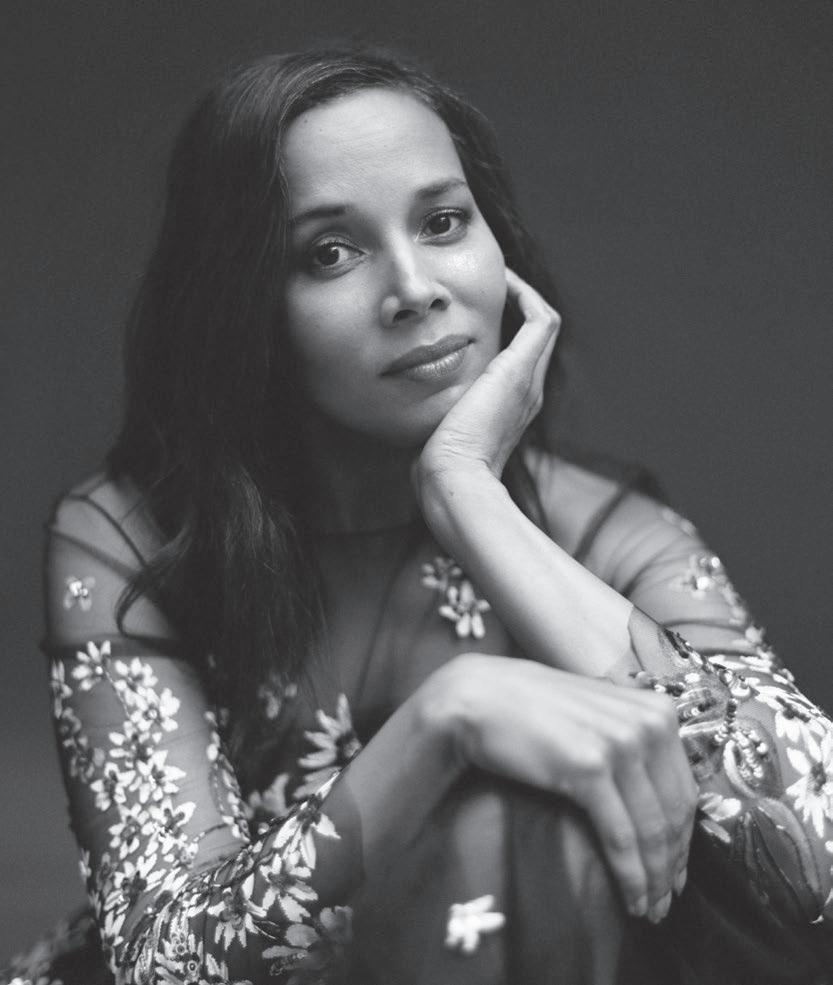
Rhiannon Giddens
You’re the One with special guest Charly Lowry
Tue, Apr 23 / 8 PM / Arlington Theatre
Event Sponsors: Jody & John Arnhold, Kath Lavidge & Ed McKinley, and Laura & Geof Wyatt
Rhiannon Giddens, vocals, banjo, viola
Francesco Turrisi, keys, accordion, percussion
Dirk Powell, keys, guitar, violin, accordion, vocals
Jason Sypher, bass
Niwel Tsumbu, guitar
Attis Clopton, drums
Rhiannon Giddens
Rhiannon Giddens has made a singular, iconic career out of stretching her brand of folk music, with its milesdeep historical roots and contemporary sensibilities, into just about every field imaginable. A two-time Grammy Award-winning singer and instrumentalist, MacArthur “Genius” grant recipient and composer of opera, ballet and film, Giddens has centered her work around the mission of lifting up people whose contributions to American musical history have previously been overlooked or erased, and advocating for a more accurate understanding of the country’s musical origins through art.
As Pitchfork once said, “few artists are so fearless and so ravenous in their exploration” – a journey that has led to NPR naming her one of its 25 Most Influential Women Musicians of the 21st Century and to American Songwriter calling her “one of the most important musical minds currently walking the planet.”
For her critically acclaimed third solo studio album, You’re the One, she recruited producer Jack Splash (Kendrick
Lamar, Solange, Alicia Keys, Valerie June, Tank and the Bangas) to help her bring this collection of songs that she’d written over the course of her career – her first album of all originals – to life at Criteria Recording Studios in Miami. Together with a band composed of Giddens’ closest musical collaborators from the past decade alongside Miami-based musicians from Splash’s own Rolodex, and topped off with a horn section making an impressive 12-person ensemble, they drew from the folk music that Giddens knows so deeply and its pop descendants.
You’re the One features electric and upright bass, conga, Cajun and piano accordions, guitars, a Western string section and Miami horns, among other instruments. “I hope that people just hear American music,” Giddens says. “Blues, jazz, Cajun, country, gospel, and rock – it’s all there. I like to be where it meets organically.”
The album is in line with her previous work, as she explains, because it’s yet another kind of project she’s never done before. “I just wanted to expand my sound palette,” Giddens says. “I feel like I’ve done lots in the acoustic realm, and I certainly will again. But these songs really needed a larger field.”
Her songwriting range is audible on You’re The One, from the groovy funk of “Hen in the Foxhouse” to the vintage AM radio-ready ballad “Who Are You Dreaming Of” and the string-band dance music of “Way Over Yonder” –likely the most familiar sound to Giddens’ fans. Her voice, though, is instantly recognizable throughout; even as the sounds around Giddens shift; she owns all of it with ease.
photo: Ebru Yildiz
25 (805) 893-3535 | www.ArtsAndLectures.UCSB.edu
The album opens with “Too Little, Too Late, Too Bad,” an R&B blast (complete with background “shoops” and a horn section) that takes a titan for inspiration. “I listened to a bunch of Aretha Franklin, and then turned to fellow Aretha-nut Dirk Powell and said, ‘Let’s write a song she might have sung!’” Giddens recalls. Her danceable, vivacious tribute to Franklin’s sound is a vocal showcase, spotlighting her soaring high notes and nearly-growling low ones. Another of the album’s highlights, “If You Don’t Know How Sweet It Is,” intentionally puts an edgier spin on the sass of Dolly Parton’s early work, which Giddens channeled in the midst of some real life frustration. “I was like, ‘I’m giving you everything, why are you leaving?’” she recalls of writing the song, which started as a poem.
Jason Isbell joins Giddens on “Yet to Be” as her duet partner and the album’s only featured artist. “He’s been such an ally in the industry to black women,” Giddens says. “He’s a great singer, and he’s uncompromisingly himself – also just a really good person.” “Yet to Be,” the story of a black woman and an Irish man falling in love in America, is meant to channel some of the optimistic flip side of the brutal, real and undertold history that Giddens has so effectively brought to the forefront with her work. “Here’s a place, with all its warts, where you and I could meet from different parts of the world and start a family, which is the true future,” Giddens explains. “I think so much about all of the terrible things in our past and present – but things are better than they have been in a lot of ways, and this is a song thinking about that.”
One of the album’s more sentimental songs, “You’re the One,” was inspired by a moment Giddens had with her son not long after he was born (he’s now 10 years old, and she has a 14-year-old daughter as well). “Your life has changed forever, and you don’t know it until you’re in the middle of it and it hits you,” Giddens says. “I held his little cheek up to my face, and was just reminded, ‘Oh my God, my children – they have every bit of my heart.’”
“You Louisiana Man” blends Giddens’ banjo acumen with accordion, organ and fiddle to create a Zydeco-funk classic. About a feeling that Giddens “turned up to eleven” during the songwriting process, the song shows the power of framing a record around banjo instead of guitar: “It just gives you a bit of a different vibe,” as she puts it.
Perhaps most potent is the song “Another Wasted Life,” Giddens’ composition inspired by Kalief Browder, the New York man who was incarcerated without trial on Rikers Island for three years. “People are making so much
money off prison systems,” Giddens, who has performed for incarcerated people, says. “They just don’t want anyone to remember that that’s happening.” Inspired sonically by another musical icon – Nina Simone – the forceful, anthemic song channels Giddens’ rage at the broken system. “Doesn’t matter what the crime, if indeed there was this time,” she sings. “It’s a torture of the soul.”
The album teems with Giddens’ breadth of knowledge of, curiosity about and experience with American vernacular music. Though it might be filtered through a slightly more familiar blend of sounds, You’re the One never forsakes depth and groundedness for its listenability.
“They’re fun songs, and I wanted them to have as much of a chance as they could to reach people who might dig them but don’t know anything about, you know, what I do,” Giddens says. “If they’re introduced to me through this record, they might go listen to other music I’ve made with a different set of ears.”
Giddens also is exploring other mediums and creative possibilities just as actively as she has American musical history. With an 1858 replica minstrel banjo in hand, she wrote the opera Omar with film composer Michael Abels (Get Out, Us, Nope) and, with her partner Francesco Turrisi, she wrote and performed the music for Black Lucy and the Bard, which was recorded for PBS’ Great Performances; she has appeared on the ABC hit drama Nashville and throughout Ken Burns’ Country Music series, also on PBS. Giddens has published children’s books and written and performed music for the soundtrack of Red Dead Redemption II, one of the best-selling video games of all time. She sang for the Obamas at the White House; is a three-time NPR Tiny Desk Concert alum; and hosts her own show on PBS, My Music with Rhiannon Giddens, as well as the Aria Code podcast, which is produced by New York City’s NPR affiliate station WQXR.
“I’ve been able to create a lot of different things around stories that are difficult to tell, and managed to get them done in a way that’s gotten noticed,” as Giddens puts it. “I know who to collaborate with, and it has gotten me into all sorts of corners that I would have never expected when I started doing this.”
26 @artsandlectures
Charly Lowry
Charly Lowry, a musical powerhouse from Pembroke, N.C., is proud to be an Indigenous woman belonging to the Lumbee/Tuscarora tribes. As an “artivist”, she is passionate about raising awareness around issues that plague under-recognized and under-resourced communities. Since her teenage years of studying the sounds of Motown, Pura Fé, Mariah Carey, Celine Dion, Whitney Houston and southern gospel, Lowry has established a career as a professional singer-songwriter (acoustic/electric guitar and Native American hand drum) who is known for her strong, passionate voice and versatility. Over the past two decades, Lowry earned a Top 32 spot on Season 3 of American Idol, received two kidney transplants, and toured extensively and internationally (US, Europe, Canada) as lead singer and recording artist of the award-winning band Dark Water Rising. She collaborated with numerous artists, bands, television productions and organizations including UlalÍ, Rhiannon Giddens, New Mastersounds, Decolonizing Wealth Project, PBS, RUMBLE: Indians Who Rocked the World, and served as executive director of Peace in the Park. Currently spearheading her most recent project, CHARLY, Lowry’s life experiences are guiding her in a music career that is focused on increasing Indigenous visibility on a global scale; revitalizing and preserving culture, whilst exploring genres of world, soul, country, folk, blues, rock and roots music.
In her community, Native women are traditionally barred from the hand drum, singing behind the men’s drum and/ or dancing instead. Lowry defies that norm, following in the footsteps of her mentor Pura Fé; choosing to battle with her songs, storytelling, hand drum and guitar to deliver performances that not only tell the plight of her people but all humankind that face oppression. Robeson County, her home, is one of the most diverse counties in the U.S., and Lowry celebrates the diversity of those southern, rural swamps in all aspects of her life. While she may be familiar to some from her success as a semi-finalist on American Idol, she has maintained close ties to her Native American roots and culture.
She serves as a voice for her ancestors, as well as the youth of today, and remains committed to music that honors roots but lives vibrantly in the here and now.
Special Thanks




(805) 893-3535 | www.ArtsAndLectures.UCSB.edu 27

Evan Osnos
Two Superpowers: Navigating China and America in the New Age of Uncertainty
Wed, Apr 24 / 7:30 PM / Campbell Hall
Event Sponsor: Betsy Atwater
Presented in association with UCSB departments of Global Studies and Political Science
Evan Osnos is a staff writer at The New Yorker, a CNN contributor and a senior fellow at the Brookings Institution. Known for his articulate and accessible commentary, he writes about politics and foreign affairs spanning the U.S., the Middle East, East Asia and China. Osnos presents current assessments of the biggest stories of the day, from U.S.-China tensions and life inside North Korea, to the polarization of our nation and the rebuilding of civic ties, as well as the future of technology and globalization. An eloquent speaker, Osnos offers a balanced and thorough view of world news and its consequences.
In 2021, Osnos released Wildland: The Making of America’s Fury, which was an instant New York Times bestseller. Publishers Weekly called the book an “engrossing and revealing look at how deeply connected yet far apart Americans are.” The book follows Osnos’s return to the three places he knows best in the United States – Greenwich, CT; Clarksburg, WV; and Chicago, IL – to illuminate the origins of America’s political fury.
His first book, Age of Ambition: Chasing Fortune, Truth, and Faith in the New China won the National Book Award and was a finalist for the Pulitzer Prize. Based on eight years of living in Beijing, it is a multi-layered look at the individual’s rise in China and the clash between aspiration and authoritarianism. In 2020, he published Joe Biden: The Life, the Run, and What Matters Now, a concise, and trenchant examination of Joseph
R. Biden Jr.’s lifelong quest for the presidency. It was an international bestseller and a Financial Times Best Book of the Year. Prior to The New Yorker, Osnos worked as the Beijing bureau chief of the Chicago Tribune, where he contributed to a series that won the 2008 Pulitzer Prize for investigative reporting. Before his appointment in China, he worked in the Middle East, reporting mostly from Iraq.
Books are available for purchase in the lobby
28 @artsandlectures
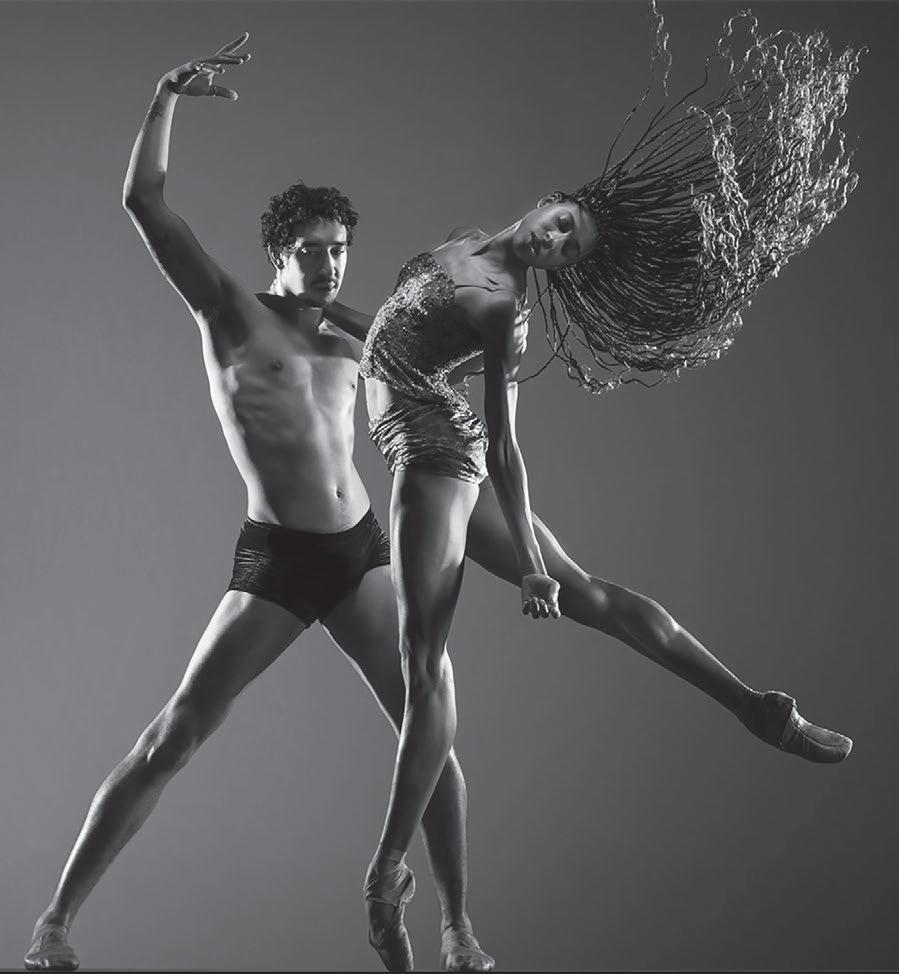
Alonzo King LINES Ballet
Deep River
Fri, Apr 26 / 8 PM / Arlington Theatre
Running time: approx. 65 minutes, no intermission
Dance Series Sponsors: Margo Cohen-Feinberg, Donna Fellows & Dave Johnson, Barbara Stupay, and Sheila Wald
Presented in association with UCSB Department of Theater and Dance photo: RJ Muna
Alonzo King, Choreographer, Artistic Director & Co-Founder
Robert Rosenwasser, Executive Director & Co-Founder
Deep River
Choreography: Alonzo King
Original Music: Jason Moran, Lisa Fischer
Music by Pharoah Sanders, Maurice Ravel, James Weldon Johnson
Vocals: Lisa Fischer
Lighting Design: Jim French
Costume and Set Design: Robert Rosenwasser
Sound Design: Philip Perkins
Dancers
Maël Amatoul, Babatunji, Adji Cissoko, Madeline DeVries, Theo Duff-Grant, Lorris Eichinger, Shuaib Elhassan, Joshua Francique, Ilaria Guerra, Maya Harr, Marusya Madubuko, Tatum Quiñónez
Rehearsal Director: Julia Erickson
Company Manager: Brandi Williams
Lighting Supervisor: Seah Johnson
Stage Manager: Byron Roman
Technical Director: Adam Cook
Costume Construction: Joan Raymond
About the Program
Deep River premiered last year as part of LINES Ballet’s 40th anniversary season. Grounded on more than 40 years of thought-provoking dance, master choreographer Alonzo King’s unique artistic vision honors and advances the classical form – the linear, mathematical, and geometrical principles deeply rooted in the East-West continuum.
Over the first two years of the pandemic, King and the artists of LINES worked in confined bubbles at their studios, in outside grassy areas of Golden Gate Park, on a farm in the isolated desert of Wickenburg, Arizona and in other locales to build work and not be halted or harmed by the pandemic. Deep River is the result of three years of working in designated time periods in unusual settings.
Along with the compositions of Jason Moran, and the remarkable voice of Lisa Fischer, the use of spiritual music from the Black and Jewish traditions was selected to address the power of inspiration during difficulty and hope and determination against seemingly impossible odds. Deep River is the call to be fanatically positive regardless of circumstance. To bloom the lotus in the muck. And to look at one another as a family of souls. It points to the imbalance of the intellect without a heart, and the necessity to feel for others as we do for ourselves. It is a love letter to a world writhing in pain. The majority of the company is predominantly on stage, sewn through with solos and pas de deux.
(805) 893-3535 | www.ArtsAndLectures.UCSB.edu 29
King says that the work is a reminder that “love is the ocean that we rose from, swim in, and will one day return to” – and that love can set us free.
About the Artistic Team
Alonzo King, Choreographer, Artistic Director and Co-Founder
Alonzo King has been called a visionary choreographer, who is altering the way we look at ballet. King calls his works “thought structures” created by the manipulation of energies that exist in matter through laws, which govern the shapes and movement directions of everything that exists. Alonzo King LINES Ballet has been guided by his unique artistic vision since 1982, and he has been called a choreographer with “astonishing originality” by The New York Times.
King has works in the repertories of the world’s leading ballet and modern companies and has collaborated with distinguished visual artists, musicians and composers across the globe. His work has been recognized for its impact on the cultural fabric of the company’s home in San Francisco, as well as internationally by the dance world’s most prestigious institutions.
Named a Master of Choreography by the Kennedy Center in 2005, King is the recipient of the NEA Choreographer’s Fellowship, the Jacob’s Pillow Creativity Award, the U.S. Artist Award in Dance, a Bessie Award and the National Dance Project’s Residency and Touring Awards. In 2015, he received the Doris Duke Artist Award in recognition of his ongoing contributions to the advancement of contemporary dance. Joining historic icons in the field, King was named one of America’s Irreplaceable Dance Treasures by the Dance Heritage Coalition. He is a former San Francisco commissioner and a writer and lecturer on humanity and art. Inducted into the California Hall of Fame, King holds an honorary doctorate from Dominican University, California Institute of the Arts and The Juilliard School.
Robert Rosenwasser, Executive Director, Creative Director and Co-Founder
Robert Rosenwasser shapes the aesthetic and artistic direction of each project at the company, including conceptual design and production. In addition to his work with Alonzo King LINES Ballet, he has designed for American Ballet Theater, Ballet de Monte Carlo, Ballet Bejart, the Royal Swedish Ballet, San Francisco Ballet, Alvin Ailey American Dance Theater, Dance Theater of Harlem, Ballet Rambert, Joffrey Ballet and Frankfurt Ballet. Working with Kelsey St. Press, Rosenwasser has
collaborated with artists and poets Richard Tuttle, Kiki Smith, Cecilia Vicuna, Mei-mei Berssenbrugge, and Barbara Guest. This work can be found at the New York Museum of Modern Art in the Department of Books and Illustrated Prints, at the Whitney Museum and at the Spencer Collection of the New York Public Library. Rosenwasser grew up in New York and attended Fiorello H. LaGuardia High School of Music & Art and Performing Arts, Cooper Union and California Institute of the Arts.
Lisa Fischer, Songwriter and Vocals
After four decades of featured background singing with icons like Luther Vandross, The Rolling Stones, Chaka Khan, Tina Turner and Nine Inch Nails, Lisa Fischer set out to take centerstage with her own humble, heartfelt song. The 2013 Best Documentary Oscar winning film Twenty Feet From Stardom altered the course of Fischer’s musical journey. Telling her story, with clips of her legendary duets with Sting or with Mick Jagger on “Gimme Shelter,” left audiences eager to see and hear more, so Fischer took the chance to set out on her own reinventing classic songs with her co-conspirators JC Maillard and Grand Baton. Their organic fusion of Caribbean psychedelic soul and jazzy progressive rock ignited Fischer’s flexibility and freedom of expression, awakening her lifelong desire to make music that heals but still rocks the house.
While Fischer’s range is legendary, her greatest gift is the ability to connect, to reach the hearts of her listeners. Raised in the Fort Greene neighborhood of Brooklyn, she emerged from New York’s fervent studio scene in the early 1980s, sang for two decades with legendary vocalist Luther Vandross, and released “So Intense,” earning her first Best R&B Performance Grammy with “How Can I Ease the Pain.” She joined The Rolling Stones for their 1989 Steel Wheels tour, and continued to grace their stage for the next 26 years. Fischer’s passion for constant growth and experimentation with different styles invited recent collaborations with jazz pianist Taylor Eigsti, Sting, Bruce Springsteen, Michael McDonald, Eric Krasno, Talib Kweli, Billy Childs and Yo-Yo Ma, the BBC Proms / Jules Buckley and the Metropole Orkest, Alonzo King LINES Ballet, Anna Deavere Smith’s Notes From the Field for HBO and especially her full evening program The Classic Lisa Fischer with Grand Baton and Seattle Symphony, Cincinnati Symphony and the National Philharmonic. With spiritual truth-telling as her compass and loving kindness as her guide, Fischer continues her creative journey – destination unknown.
30 @artsandlectures
Jason Moran, Composer and Jazz Pianist
Jazz pianist, composer and performance artist Jason Moran is deeply invested in reassessing and complicating the relationship between music and language; his work is geared towards challenging the status quo while respecting the accomplishments of his predecessors. Moran graduated from Manhattan School of Music, where he studied with Jaki Byard. He was named a MacArthur Fellow in 2010 and is the artistic director for Jazz at The Kennedy Center. Currently, Moran teaches at the New England Conservatory. Moran has recorded and performed with masters of the form including Charles Lloyd, Bill Frisell and the late Sam Rivers, and his work with his trio The Bandwagon (with drummer Nasheet Waits and bassist Tarus Mateen) resulted in a profound discography for Blue Note Records. He also has collaborated with such major figures as Adrian Piper, Joan Jonas, Glenn Ligon, Stan Douglas, Adam Pendleton, Lorna Simpson and Kara Walker; commissioning institutions of Moran’s work include the Walker Art Center, the Philadelphia Museum of Art, the Dia Art Foundation, the Whitney Museum of American Art, Harlem Stage and Jazz at Lincoln Center.
About the Company
Alonzo King LINES Ballet is a celebrated contemporary ballet company that has been guided since 1982 by the artistic vision of acclaimed choreographer Alonzo King. Collaborating with extraordinary composers, musicians, writers and visual artists from around the world, King draws on a diverse set of deeply-rooted cultural traditions, imbuing classical ballet with new expressive potential. He has been heralded as a visionary and thought leader on topics that reach far beyond dance, receiving numerous accolades such as a 2020 Dance Magazine Award. LINES Ballet’s national and international tours allow the company to share its vision of transformative, revelatory dance through performances worldwide.
Forty-one years of outstanding, multi-disciplinary collaborations for the stage place the LINES Ballet company at the forefront of artistic innovation in ballet. With each collaboration, LINES Ballet investigates deeplyrooted affinities between Western and Eastern classical forms, elemental materials, the natural world and the human spirit. At LINES Ballet, the artistic investigation is infinite and essential, for it leads to what unites us as human beings: empathy, joy and the ability to transcend. LINES Ballet’s spring and fall home seasons and global
tours share this vision of transformative, revelatory dance with 50,000+ audience members worldwide every year. The company has been featured at venues such as the Venice Biennale, Monaco Dance Forum, Maison de la Dance de Lyon, the Edinburgh International Festival, Montpellier Danse, the Wolfsburg Festival, the Holland Dance Festival and most recently the Théâtre National de Chaillot in Paris.
“The term LINES alludes to all that is visible in the phenomenal world. There is nothing that is made or formed without a line. Straight and Circle encompass all that we see. Whatever can be seen is formed by a line. In mathematics it is a straight or curved continuous extent of length without breadth. Lines are in our fingerprints, the shapes of our bodies, constellations, geometry. It implies genealogical connection, progeny and spoken word. It marks the starting point and finish. It addresses direction, communication, and design. A line of thought. A boundary or eternity. A melodic line. The equator. From vibration or dot to dot it is the visible organization of what we see.” – Alonzo King
Representation
Margaret Selby – Selby Artists/Management
1-212-382-3260 I mselby@selbyartistsmgmt.com I SelbyArtistsMgmt.com
Special Thanks
(805) 893-3535 | www.ArtsAndLectures.UCSB.edu 31
Your Legacy: Our Future
Arts & Lectures has an unwavering commitment to bringing big ideas and stellar performances to our community, and to fostering connection through the arts and conversation.
If you share our mission to Educate, Entertain and Inspire, we invite you to include Arts & Lectures in your estate plans.
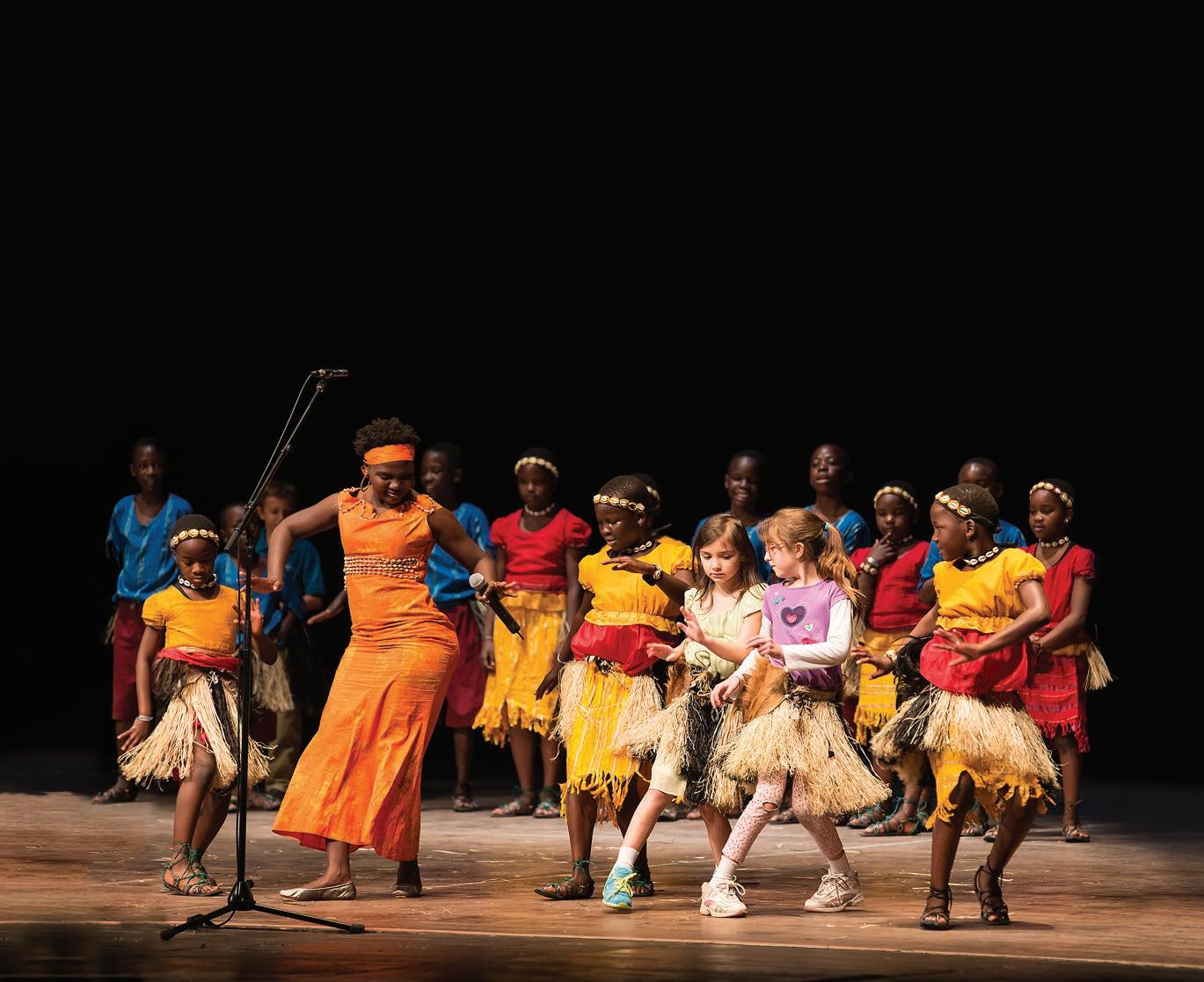
To learn more about Legacy Giving, contact Stacy Cullison, Senior Director of Development, at (805) 893-3755 or Stacy.Cullison@ArtsAndLectures.UCSB.edu




“If ranking events purely on the enjoyment factor, then top of the list would be the receptions and dinners that UCSB Arts & Lectures holds for its donors.”
Santa Barbara Independent
The Benefits of Giving
$100+ $2,500+ $5,000+ $10,000+
Invitation to a reception at a private residence with featured artist or speaker
Invitations to meet-and-greet opportunities with featured artists and speakers
Complimentary parking at all ticketed A&L events at Campbell Hall
Opportunity to bring guests to a select A&L public event
VIP Ticketing Concierge Service and Priority Seating
Invitations to Producers Circle Receptions with featured artists and speakers
Access to Intermission Lounge in the McCune Founders Room during A&L performances and lectures at The Granada Theatre
Invitation to A&L’s exclusive Season Announcement Party
Opportunity to attend master classes and other educational activities
Invitation to a member appreciation event
Recognition in A&L event programs or digital media
To inquire about membership or a customized Leadership Circle experience, please call Membership Director Rachel Leslie at (805) 893-3382.

CircleofFriends ProducersCircle ExecutiveProducersCircleLeadershipCircle
Leadership Circle includes all the benefi ts of Executive Producers Circle plus your own personalized membership experience.
Today Become A Member: Help Us Deliver Remarkable Programming On Stage and Off
photo: Isaac Hernández de Lipa
Join Arts & Lectures


Education and Community Engagement
How do we build a more connected, thoughtful and compassionate community?
We do it with opportunities that are accessible to all. Through Access for ALL – Arts & Lectures’ Learning programs – inspirational, dynamic learning experiences are possible for students and lifelong learners across classrooms, our community and the UCSB campus.
Access for ALL serves more than 30,000 students and community members annually.


Here’s how we’re impacting our community:
• Assemblies in elementary and secondary schools
• Workshops and conversations with artists and speakers
• Ticket subsidies for students at all levels
• The Thematic Learning Initiative’s lifelong learning opportunities
• Matinee field trips for K-12 students at local theaters
• Lecture-demonstrations and artist panels in University classes
• Master classes for students and community members
• Post-show Q&As with audiences of all ages
• Free family performances in under-resourced neighborhoods
Please consider a contribution to A&L’s award-winning education programs.
Call Stacy Cullison, Senior Director of Development & Special Initiatives, at (805) 893-3755 to learn more.



 photos: David Bazemore
photos: David Bazemore
34 @artsandlectures


“Art teaches abstract thinking; it teaches teamwork; it teaches people to actually think about things that they cannot see.”
– Bill T. Jones, Choreographer and MacArthur Fellow






Thank you to our Education and ¡Viva el Arte de Santa Bárbara! Sponsors
Arnhold A&L Education Initiative
Connie Frank & Evan Thompson
WILLIAM H. KEARNS FOUNDATION
Sara Miller McCune
Audrey & Timothy O. Fisher
Kath Lavidge & Ed McKinley
Dorothy Largay & Wayne Rosing

Anonymous
University Support:
Office of the Chancellor
Offi
ce of the Executive Vice Chancellor
Office of Education Partnerships
Renée Fleming moderates a Music and Mind panel discussion with local researchers and medical practitioners
Martha Graham Dance Company’s Anne Souder teaches a master class for UCSB students
35 (805) 893-3535 | www.ArtsAndLectures.UCSB.edu
Author and plant ecologist Robin Wall Kimmerer leads a discussion with UCSB students
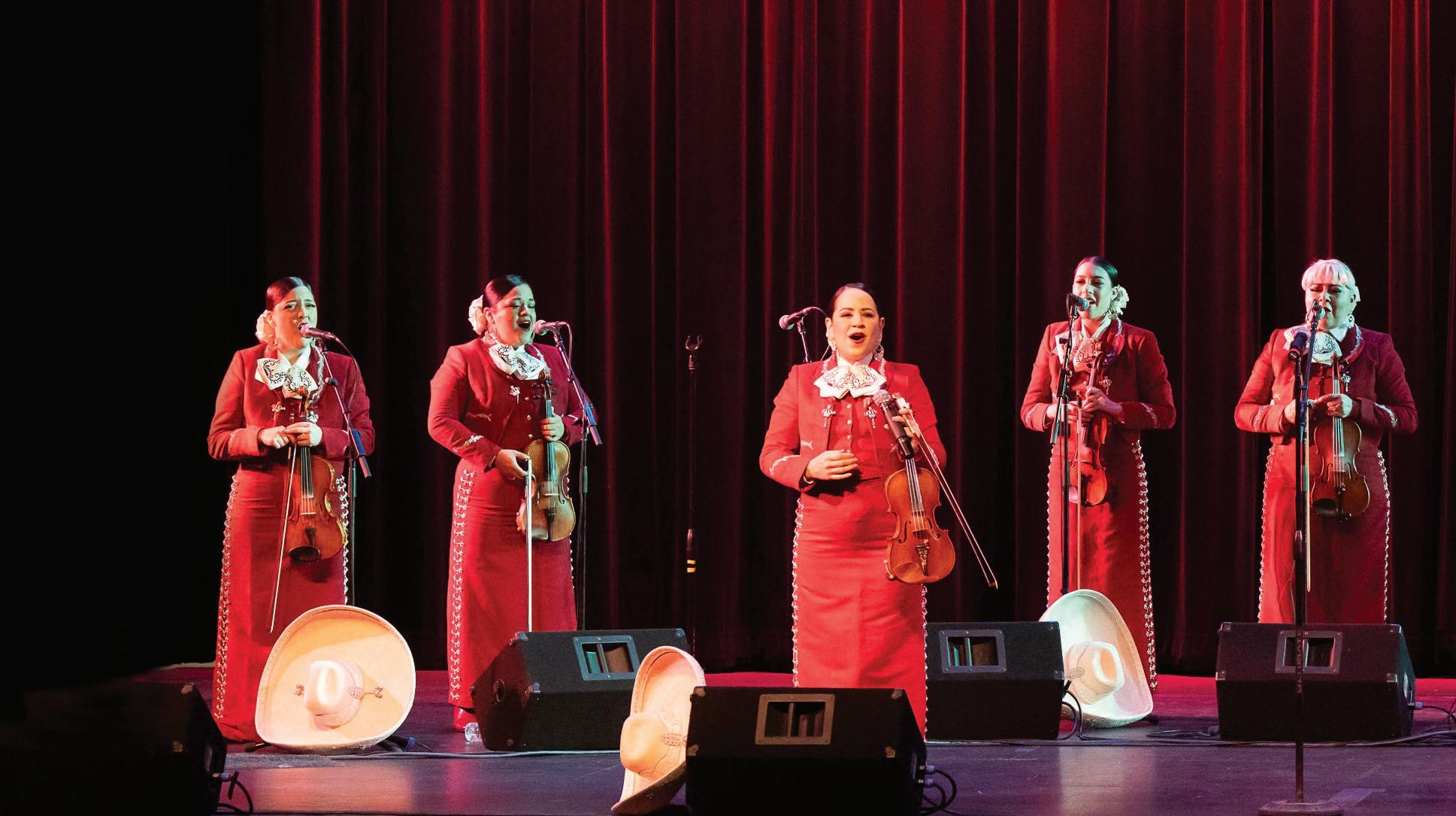


¡Viva el Arte de Santa Bárbara! brings people together to share the rich cultural heritage of Latin America, serving more than 15,000 students and community members each year throughout Santa Barbara County.
Created in 2006 out of a commitment to arts access for all, Viva works with dozens of local partners to present high-quality artists who share their knowledge and passion. Schools, neighborhood spaces and community centers come alive in these free programs for youth and families.
¡Viva el Arte de Santa Bárbara! is a collaboration between UCSB Arts & Lectures, The Marjorie Luke Theatre, the Guadalupe-Nipomo Dunes Center and the Isla Vista School Parent Teacher Association serving Carpinteria, Santa Barbara, Goleta, Lompoc, Santa Maria, Guadalupe and New Cuyama.
Charro Esteban Escobedo delights audiences at The Marjorie Luke Theatre
36 @artsandlectures
Dancers from Ballet Folklórico de Los Ángeles at The Marjorie Luke Theatre
“Everyone should have access to art and music. Viva is awesome. It provides world-class musicians and artists to the community at no charge.”
– Salud Carbajal, U.S. Congressman, representing California’s 24th District

“The free community performances by ¡Viva el Arte de Santa Bárbara! are one of the coolest things going on in town.”
Santa Barbara Independent
Spring 2024 FREE Community Concerts
Jarabe Mexicano
May 17-19
Please consider a contribution to the award-winning ¡Viva el Arte de Santa Bárbara! program. Call Director of Development Elise Erb at (805) 893-5679 to learn more.
 Grandeza Mexicana at Ellwood Elementary School
photos: Isaac Hernández de Lipa
Mariachi Reyna de Los Angeles performs a free concert at The Marjorie Luke Theatre
Grandeza Mexicana at Ellwood Elementary School
photos: Isaac Hernández de Lipa
Mariachi Reyna de Los Angeles performs a free concert at The Marjorie Luke Theatre
37 (805) 893-3535 | www.ArtsAndLectures.UCSB.edu
Thank You Arts & Lectures Members!
Arts & Lectures Council
Arts & Lectures is privileged to acknowledge our Council, a group of insightful community leaders and visionaries who help us meet the challenge to educate, entertain and inspire.
Rich Janssen, Co-Chair
Kath Lavidge, Co-Chair
Marcy Carsey
Timothy O. Fisher
Dorothy Largay
Patricia MacFarlane
Susan McCaw
Sara Miller McCune
Jillian Muller
Natalie Orfalea
Arts & Lectures Ambassadors
Tom Sturgess
Anne Smith Towbes
Lynda Weinman
Merryl Snow Zegar
Arts & Lectures is proud to acknowledge our Ambassadors, volunteers who help ensure the sustainability of our program by cultivating new supporters and assisting with fundraising activities.
Donna Fellows
Eva Haller
Robin Himovitz
Luci Janssen
Maxine Prisyon
Heather Sturgess
Arts & Lectures Program Advisor
Bruce Heavin
Leadership Circle
Anne Smith Towbes
Sherry Villanueva
Crystal Wyatt
Our Leadership Circle members, a group of key visionaries giving $10,000 to $100,000 or more each year, make a significant, tangible difference in the community and help bring A&L’s roster of premier artists and global thinkers to Santa Barbara. We are proud to recognize their philanthropy.
$100,000+
Jody & John Arnhold
Audrey & Timothy O. Fisher ◊ ‡
Connie Frank & Evan Thompson
Eva & Yoel Haller ◊
$50,000+
Patricia & Paul Bragg Foundation
Marcy Carsey
Justin Brooks Fisher Foundation
$25,000+
Betsy Atwater
Mary Becker ‡
Marcia & John Mike Cohen ‡
Margo Cohen-Feinberg
Donna M. Fellows & Dave Johnson
G.A. Fowler Family Foundation
Luci & Rich Janssen ‡
Manitou Fund
Sara Miller McCune ◊ ‡
Jillian & Pete Muller
Natalie Orfalea & Lou Buglioli
Lynda Weinman & Bruce Heavin ◊ ‡
Dick Wolf
Zegar Family Foundation
Anonymous (2)
Martha Gabbert
William H. Kearns Foundation ‡
Dorothy Largay & Wayne Rosing
Laura & Kevin O’Connor
Sage Publishing ‡
Heather & Tom Sturgess ◊ ‡
Ellen & Peter O. Johnson
Siri & Bob Marshall
Marilyn & Dick Mazess
Montecito Bank & Trust
Shanbrom Family Foundation
Merrill Sherman
Russell Steiner
Barbara Stupay
Sheila Wald
Susan & Bruce Worster
Crystal & Clifford Wyatt
Laura & Geofrey Wyatt
Anonymous
@artsandlectures 38 (805) 893-3535 | www.ArtsAndLectures.UCSB.edu 38
$10,000+
Allyson & Todd Aldrich
Jennifer & Jonathan Blum
Albert & Elaine Borchard Foundation
Gary Bradhering & Sheraton Kalouria
Christine Bruce & John Hilliard
Scott Charney & Ellen McDermott Charney
Sarah & Roger Chrisman
Tana & Joe Christie
Producers Circle
NancyBell Coe & William Burke ‡
David & Debby Cohn
Robyn & Larry Gottesdiener
Lisa & Mitchell Green
Robin & Roger Himovitz
John T. Kuelbs
Chris & Mark Levine
Stacy & Ron Pulice
Sharon & Bill Rich ◊
Julie Ringler & Richard Powell
Linda Stafford Burrows
Stone Family Foundation
Anne Smith Towbes ‡
US Bank Foundation
Nicole & Kirt Woodhouse Anonymous
Arts & Lectures gratefully recognizes the commitment and generosity of our Producers Circle members, who have made gifts between $2,500 and $9,999. Recognition is based upon a donor’s cumulative giving/pledges within a 12-month period.
$5,000+ Executive Producers Circle
Deirdre & William Arntz
Leslie Sweem Bhutani
Elizabeth & Andrew Butcher
Annette & Dr. Richard Caleel
Susan Eng-Denbaars & Steve Denbaars
Olivia Erschen & Steve Starkey
Katrina Firlik
Andrea & Mark Gabbay
Pamela Gann & David Hardee
Nanette & Jeff Giordano
Shari & George Isaac
$2,500+ Producers Circle
Martha & Bruce Atwater
Marta Babson
Jill & Arnie Bellowe
Deirdre & Fraser Black
Michael Bolton
Susan D. Bowey
Victoria Hendler Broom
Drs. Paula & Thomas* Bruice
Sherri Bryan & Tim Dewar
Susan & Claude Case
Lilyan Cuttler & Ned Seder
Deborah David & Norman A. Kurland
Maria José de Araújo & Michael McColm
Deanna & Jim Dehlsen
Eva Ein & Michael Palmer
Julia Emerson
Cynthia Enlow & Elise Antrim
Doris & Tom Everhart
Richard Flacks
Tisha Ford
Charlie Franciscus & Dr. Herb Rogove
Bunny Freidus
Patricia & Michael French
Priscilla & Jason* Gaines
Grafskoy Hindeloopen Limited, LLC
Tricia & Don Green
Paul Guido & Stephen Blain
Ann Jackson Family Foundation
Margaret & Barry Kemp
Maia Kikerpill & Daniel Nash
Cindy & Steve Lyons
Ann & John McReynolds
Suzanne & Duncan Mellichamp
Michael Millhollan & Linda Hedgepeth
Maryanne Mott
Lisa Reich & Bob Johnson ◊
Kyra & Tony Rogers
Eva & Bryan Schreier
Laurie Seigel & Joseph Nosofsky
Randall & Roxanna Solakian
Joan Speirs
Towbes Foundation
David Tufts & Cris Dovich
Sandra & Sam Tyler
Judy Wainwright Mitchell & Jim Mitchell
Beth & George Wood
Anonymous (3)
Belle Hahn
Ruth & Alan Heeger
Daniel & Mandy Hochman
Carolyn Holmquist
Donna & Daniel Hone
Judith L. Hopkinson ‡
Andrea & Richard Hutton
Carolyn Jabs & David Zamichow
Connie & Richard Kennelly
Linda Kitchen ‡
Larry Koppelman
Pat Lambert & Rick Dahlquist
Jacqueline* & Robert Laskoff
Karen Lehrer & Steve Sherwin
Denise & George Lilly
Peggy Lubchenco & Steve Gaines
Nancy & Mike McConnell
Nancy McGrath
Amanda McIntyre
Lois & Mark Mitchell
Harriet Mosson
Elizabeth & Charles Newman
Dale & Michael Nissenson
Jan Oetinger
Joan Pascal & Ted Rhodes
Meg & Doug Pearson
Ann & Dante Pieramici
Ann Pless
Justine Roddick & Tina Schlieske
Jean Rogers
Susan J. Rose
Gayle & Charles Rosenberg
Jo & Ken Saxon
Karen Shapiro & Richard Appelbaum
Anitra Sheen
Holly & Lanny Sherwin
Rebecca Sokol Smith
Carol Spungen
Dale & Gregory Stamos
Debra & Stephen Stewart
Sheila Stone
Mary Jo Swalley ◊
Denise & James Taylor
Amy & George Tharakan
Christine Van Gieson & John Benson
Kathryn & Alan Van Vliet
Dianne & Daniel Vapnek
Sherry & Jim Villanueva
Elizabeth Von Summer-Moller & John Moller
Dr. Richard Watts
Alexis & Mike Weaver
Kathy Weber
Dr. Bob Weinman
Anonymous
39 (805) 893-3535 | www.ArtsAndLectures.UCSB.edu (805) 893-3535 | www.ArtsAndLectures.UCSB.edu
Circle of Friends
$1,000+
Morgan Bennett
Dorothy Daniels
Cid & Thomas* Frank
Dodd & Beth Geiger
$500+
Kent Allebrand
Michael & Marilyn Avenali
Peggy & Steve Barnes
Linda & Peter Beuret
Rochelle & Mark Bookspan
$250+
Harold Baer
Roberta & Matt Collier
Victoria Dillon
Ann & David Dwelley
$100+
Rene Aiu
Lynn & Joel Altschul
Vickie Ascolese & Richard Vincent
Susan Badger
Kirsten Baillie
Rosalie Benitez Poe
Wayne Benner
Cherie Bonazzola
Jane Brody & Royce Adams
Vikki Cavalletto
Michael Chabinyc
Kathleen Copeland
Constance Cullen
Jeanette Curci
Lila Deeds
Linda Gorin – In Memory of
Arnold B. Gorin, M.D.
Sandra Howard
Janet & Robert Kates
Danson Kiplagat
Irene Marsi
Nancy & Douglas Norberg
Andrew & Liisa Primack
Eileen Read
Robin Rickershauser
Kris & Eric Green
Diana Katsenes
Elinor & James Langer
Janice & David Levasheff
Melinda & Aaron Lewis
Priscilla & Forrest Mori
Almeda & J. Roger Morrison
Carol & Stephen Newman
D.E. Polk & J.P. Longanbach
Diane & Charles Sheldon
Kirstie Steiner & John Groccia
Claire & Glenn Van Blaricum
Minie & Hjalmer Pompe van
Meerdervoort
Carol Vernon & Robert Turbin
David Warnock
Nancy Goldberg
Jody Holehouse
Cheryl & G.L. Justice
Anna & Peter Kokotovic
Carol & Don Lauer
Karen Merriam
Jeanne & Larry Murdock
Peter Rathbone
Maryan Schall
Richard Wimbish Anonymous
Anne & Jeffrey Donahue
Elizabeth Downing & Peter Hasler
Pamela Elliott
Lorne Fienberg
Lori Frank
Monique Gingold
Laura & Michael Hamman
Janet Healy
Lauren Hobratsch
Andriana Hohlbauch
Stacey & Raymond Janik
Susan Kadner
AJ Kamp
Lois Kaplan
Jean Keely
Antonia LaRocca & Christopher
Johnson
Pamela & Russell Lombardo
Martin Lynch
Mary Martin
Sharon & Doug McKenzie
Cheri & Christopher Mersey
Kurt Meyer
Thomas & Sally Mueller
Pietro Nasta
Fredric Pierce
Deborah & Ken Pontifex
Karen Poythress
Julie & Chris Proctor
Kathy & Mark Rick
Mark Rosenthal
Judith & Michael Rothschild
Steven Sereboff
Joan & Steven Siegel
Jeanne Sloane
Beverly & Michael Steinfeld
Sarah Stokes
Terry & Art Sturz
William & Diana Thomas
Susan Thomason
Marion & Frederick Twichell
Carole Wasserman
Jo Ellen & Thomas Watson
@artsandlectures 40 (805) 893-3535 | www.ArtsAndLectures.UCSB.edu 40
Legacy Circle
Legacy Circle members listed below have made provisions in their estate plans to support A&L and ensure our exciting programs continue for future generations. We are pleased to acknowledge these thoughtful commitments.
Judy & Bruce Anticouni
Helen Borges*
Ralph H. Fertig*
Audrey & Timothy O. Fisher
Georgia Funsten*
Eva & Yoel Haller
Susan Matsumoto & Mel Kennedy
Sara Miller McCune
Lisa A. Reich
Sharon & Bill Rich
Hester Schoen*
Heather & Tom Sturgess
Mary Jo Swalley
Lynda Weinman & Bruce Heavin
Arts & Lectures Endowments
Fund for Programmatic Excellence
Beth Chamberlin Endowment for Cultural Understanding Commission of New Work Fund Education and Outreach Fund
Sara Miller McCune Executive Director of Arts & Lectures
Harold & Hester Schoen Arts & Lectures Endowment
Sonquist Family Endowment
Lynda Weinman & Bruce Heavin Arts & Lectures Endowment for Programmatic Excellence
Government & Regional Funders
California Arts Council
City of Santa Barbara
National Endowment for the Arts
Santa Barbara County Office of Arts & Culture
UCSB Summer Culture and Community Grant Program
University Support
Arts & Lectures is especially grateful to UCSB students for their support through registration and activity fees. These funds directly support lower student ticket prices and educational outreach by A&L artists and writers who visit classes.
Arts & Lectures Staff
Celesta M. Billeci, Miller McCune Executive Director
Meghan Bush, Associate Director
Ashley Aquino, Contracts Administrator
Marisa Balter, Financial Analyst
Michele Bynum, Senior Artist
Stanly Chung, Development Coordinator
Shiloh Cinquemani, Assistant Ticket Office Manager
Stacy Cullison, Senior Director of Development & Special Initiatives
Charles Donelan, Senior Writer/Publicist
Elise Erb, Director of Development
Kevin Grant, Senior Business Analyst
Ashley Greene Hill, Education Associate
Carmen Guzman, Production Coordinator
Jenna Hamilton-Rolle, Director of Education & Community Engagement
Nina Johnson, Marketing Manager
Rachel Leslie, Membership Director
Mari Levasheff, Marketing Manager
Hector Medina, Marketing & Communications Production Specialist
Caitlin O’Hara, Director of Public Lectures & Special Initiatives
Elizabeth Owen, Programming Manager
James Reisner, Manager of Ticketing Operations
Summer Rivera, Chief Financial & Operations Officer
Angelina Toporov, Marketing Specialist
Laura Wallace, Finance & HR Manager
Eliot Winder, Production Manager
List current as of March 10, 2024. Every effort has been made to ensure accuracy. Please notify our office of any errors or omissions at (805) 893-3382.
* In Memoriam
◊ Indicates those who have made plans to support UCSB Arts & Lectures through their estate ‡ Indicates those that have made gifts to Arts & Lectures endowed funds in addition to their annual program support
41 (805) 893-3535 | www.ArtsAndLectures.UCSB.edu (805) 893-3535 | www.ArtsAndLectures.UCSB.edu

Kronos Quartet | Five Decades
Sat, Apr 27 / 8 PM / Campbell Hall
Running time: approx. 120 minutes, including intermission
Presented in association with UCSB Department of Music photo: Lenny Gonzalez
David Harrington, violin
John Sherba, violin
Hank Dutt, viola
Paul Wiancko, cello
Joey Guthman, Lighting Supervisor
Scott Fraser, Sound Designer
Program
Sam Green: KRONOS at FIFTY *
Trey Spruance: The Black Art Book of St. Cyprian the Mage: V. Bruxa de Evora *
Peni Candra Rini (arr. Jacob Garchik & Andy McGraw): Segara Gunung: Movement I *
Jlin (arr. Jacob Garchik): Little Black Book **
Zachary James Watkins: Peace Be Till * featuring the recorded voice of Dr. Clarence B. Jones
Aleksandra Vrebalov: Gold Came From Space *
- Intermission -
Sun Ra, Terry Riley & Sara Miyamoto (arr. Paul Wiancko): Kiss Yo’ Ass Goodbye *
John Oswald: Excerpt from Spectre *
Nicole Lizée: ZonelyHearts *
Opening Credits
Part I
Part II
PhoneTap + CCTV
Static Interference
Program Subject To Change
* Written for Kronos
** Written for Kronos Fifty for the Future
About Kronos Quartet
For 50 years, San Francisco’s Kronos Quartet has challenged and reimagined what a string quartet can be. Founded at a time when the form was largely centered on long-established, Western European traditions, Kronos has been at the forefront of revolutionizing the string quartet into a living art form that responds to the people and issues of our time. In the process, Kronos has become one of the most celebrated and influential groups of our era, performing thousands of concerts worldwide, releasing more than 70 recordings of extraordinary breadth and creativity and collaborating with many of the world’s most accomplished composers and performers. Through its nonprofit organization, Kronos Performing Arts Association (KPAA), Kronos has commissioned more than 1,000 works and arrangements for string quartet – including the recently completed
42 @artsandlectures
50 for the Future library of free, educational repertoire. Kronos has received more than 40 awards, including three Grammy Awards and the Polar Music, Avery Fisher, and Edison Klassiek Oeuvre Prizes – among the most prestigious awards given to musicians.
Kronos’ adventurous approach dates back to the ensemble’s origins. In 1973, David Harrington formed the group after hearing George Crumb’s Black Angels, an innovative, Vietnam War-inspired work featuring bowed water glasses, spoken-word passages and electronic effects. In addition to this formative work, Kronos began building its own eclectic repertoire for string quartet, performing and recording compositions by 20th-century masters (Sofia Gubaidulina, Astor Piazzolla, Alfred Schnittke), contemporary composers from around the world (Sahba Aminikia, Nicole Lizée, Vladimir Martynov, Aleksandra Vrebalov), jazz legends (Charles Mingus, Thelonious Monk, Maria Schneider), rock artists (Jimi Hendrix, Sigur Rós, Pete Townshend) and artists who defy genre (Laurie Anderson, Trevor Paglen, Tanya Tagaq).
Integral to Kronos’ work is a series of long-running, in-depth collaborations with many of the world’s foremost composers, resulting in a vast body of Kronos-commissioned works for string quartet. One of the quartet’s most long-standing and frequent collaborators is Terry Riley, whose work with Kronos includes Sunrise of the Planetary Dream Collector (1980), Salome Dances for Peace (1985–86) and Sun Rings (2002). Aleksandra Vrebalov has written more than 20 pieces for Kronos, including Pannonia Boundless (1998); …hold me, neighbor, in this storm… (2007); and Beyond Zero (2014), a multimedia meditation on World War I in collaboration with filmmaker Bill Morrison. The quartet has also collaborated extensively with Philip Glass, recording an album of his string quartets in 1995 and premiering String Quartets No. 6 (2013) and No. 7 (2014); with Franghiz Ali-Zadeh, whose works are featured on the full-length 2005 release Mugam Sayagi; and with Steve Reich, whose string quartets Different Trains (1989), Triple Quartet (2001) and WTC 9/11 (2011) were written for and recorded by Kronos.
In its most ambitious commissioning effort to date, KPAA has recently completed a monumental education project that will be a cornerstone of Kronos’ ongoing legacy: Kronos Fifty for the Future. Through this initiative, Kronos has commissioned – and distributed online for free – 50 new works for string quartet designed expressly for the training of students and emerging professionals, written by composers from around the world. Although the library of compositions is now complete, 50 for the Future
continues to grow, with tens of thousands of scores downloaded in more than 100 countries and territories around the globe. Lead partner Carnegie Hall and an adventurous group that includes presenters, academic institutions, foundations and individuals have joined forces with Kronos to support this program. The project can be found at: 50ftf.kronosquartet.org/
In recordings, Kronos has collaborated with numerous artists from around the world, including Chinese pipa virtuoso Wu Man, a collaborator since the early 1990s; Indian tabla virtuoso Zakir Hussain; Azeri master vocalist Alim Qasimov; legendary Bollywood “playback singer” Asha Bhosle; punk legend Patti Smith; Romanian band Taraf de Haïdouks; Iranian vocalist Mahsa Vahdat and Trio Da Kali, an ensemble of griot musicians from Mali. Kronos has performed live with the likes of Paul McCartney, David Bowie, Allen Ginsberg, Rokia Traoré, Tom Waits, Rhiannon Giddens, Howard Zinn, Betty Carter, Van Dyke Parks, Caetano Veloso, k.d. lang and The National, and has appeared on recordings by artists such as Nine Inch Nails, Dan Zanes, Glenn Kotche, Dave Matthews Band, Joan Armatrading, Angélique Kidjo and the San Francisco Girls Chorus. In dance, the famed choreographers Merce Cunningham, Paul Taylor, Twyla Tharp, Alonzo King, Eiko & Koma and many others have created pieces set to Kronos’ music.
With its roots in the Vietnam War-inspired Black Angels, Kronos has spent five decades centering its work around the key issues of our time. Underscoring the idea that music should be in constant, evolving interaction with the world, Kronos has commissioned, performed and recorded works that engage with topics such as war and destruction (Jonathan Berger and Harriet Scott Chessman’s Mỹ Lai; Mary Kouyoumdjian’s Bombs of Beirut and Silent Cranes; Mariana Sadovska’s Chernobyl.The Harvest; Aleksandra Vrebalov’s Beyond Zero), the climate crisis (Laurie Anderson’s Landfall); social injustice (Bob Ostertag’s All the Rage; Zachary James Watkins’ Peace Be Till; Michael Abels and Nikky Finney’s At War With Ourselves) and existence and spirituality (Terry Riley’s Sun Rings; Tan Dun’s Ghost Opera).
The quartet spends several months of each year on tour, appearing in concert halls, clubs and festivals around the world, including Carnegie Hall, BRIC Celebrate Brooklyn! and BAM Next Wave Festival in New York; Royce Hall at UCLA; Big Ears in Knoxville, Tennessee; Palacio de Bellas Artes in Mexico City; the Barbican in London; the Philharmonie de Paris; the Muziekgebouw in Amsterdam; Haydn Hall at
43 (805) 893-3535 | www.ArtsAndLectures.UCSB.edu
Schloss Esterhazy, Austria; The Arts Center at New York University Abu Dhabi; Shanghai Concert Hall; Suntory Hall in Tokyo and the Sydney Opera House.
Kronos’ expansive discography on Nonesuch includes three Grammy-winning albums: Terry Riley’s Sun Rings (2019), Landfall with Laurie Anderson (2018), and Alban Berg’s Lyric Suite – along with dozens of other acclaimed recordings. featuring soprano Dawn Upshaw (2003); the 40th-anniversary boxed set Kronos Explorer Series and companion single-disc A Thousand Thoughts (both 2014); Nuevo (2002), a Grammy- and Latin Grammynominated celebration of Mexican culture; and Pieces of Africa (1992), a showcase of African-born composers that simultaneously topped Billboard’s Classical and World Music charts. Kronos’ recent releases include Mỹ Lai (2022), an opera by Jonathan Berger (music) and Harriet Scott Chessman (libretto), featuring Vietnamese multiinstrumentalist Vân-Ánh Vanessa Võ and vocalist Rinde Eckert, and Long Time Passing: Kronos & Friends Celebrate Pete Seeger (2020) with Sam Amidon, Maria Arnal, Brian Carpenter, Lee Knight, Meklit and Aoife O’Donovan. Music publishers Boosey & Hawkes have released two volumes of Kronos Collection sheet music, featuring works by various composers.
Kronos’ work has featured prominently in a number of films, including A Thousand Thoughts, a unique multimedia piece that blends live music by Kronos and narration by Sam Green with archival footage and filmed interviews to create a “live documentary” that tells the story of Kronos’ expansive career. Written and directed by Green and Joe Bini, the work premiered at the Sundance Film Festival in 2018 and has since toured around the world. Most recently, the quartet performed on the soundtrack for Users (2021) and is both seen and heard in the documentary Zappa (2020). Kronos’ music has been featured in two Academy Award nominated documentaries: Dirty Wars (2013) – for which Kronos’ David Harrington served as Music Supervisor – and How to Survive a Plague (2012). Kronos has also recorded complete film scores by Jacob Garchik for Guy Maddin’s The Green Fog (2017); Clint Mansell for Darren Aronofsky’s The Fountain (2006) and Requiem for a Dream (2000) and Philip Glass for Dracula (1999) – a restored edition of the 1931 Bela Lugosi classic.
The quartet is committed to mentoring emerging performers and composers and has led workshops, master classes and other education programs with Carnegie Hall’s Weill Music Institute (New York),
Kaufman Music Center’s Face the Music (New York), Luna Composition Lab (New York), the Royal Conservatory of Music (Toronto), Ruth Asawa San Francisco School of the Arts and San Francisco Conservatory of Music, among other institutions in the U.S. and abroad. Kronos has undertaken extended educational residencies at institutions such as UC Berkeley’s Cal Performances, Holland Festival and New York University Abu Dhabi.
Based in San Francisco, the nonprofit KPAA staff manages all aspects of Kronos’ work, including commissioning, concert tours and local performances, recordings, education programs and an annual self-produced Kronos Festival in San Francisco.
Janet Cowperthwaite, Executive Director
Mason Dille, Development Director
Dana Dizon, Business Manager
Sarah Donahue, Operations Director
Reshena Liao, Creative Producer
Nikolás McConnie-Saad, Artistic Administrator
Contact:
Kronos Quartet/Kronos Performing Arts Association
P. O. Box 225340
San Francisco, CA 94122-5340 USA
kronosquartet.org
facebook.com/kronosquartet
instagram.com/kronos_quartet
twitter.com/kronosquartet
The Kronos Quartet records for Nonesuch Records.
Special Thanks
44 @artsandlectures





Amanda Gorman
An Evening of Poetry and Conversation with Pico Iyer
Tue, Apr 30 / 7:30 PM / Arlington Theatre
Major Sponsor: Dorothy Largay & Wayne Rosing




Amanda Gorman
Justice for All Lead Sponsors: Marcy Carsey, Connie Frank & Evan Thompson, Eva & Yoel Haller, Dick Wolf, and Zegar Family Foundation
Presented in association with the following UCSB partners: Division of Humanities and Fine Arts, Feminist Futures and the departments of English and Sociology
Amanda Gorman is the youngest inaugural poet in U.S. history. She is a committed advocate for the environment, racial equality and gender justice. Gorman’s activism and poetry have been featured on the Today Show, PBS Kids and CBS This Morning, and in The New York Times, Vogue and Essence. After graduating cum laude from Harvard University, she now lives in her hometown of Los Angeles. In 2017, Amanda Gorman was appointed the first-ever National Youth Poet Laureate by Urban Word – a program that supports Youth Poets Laureate in more than 60 cities, regions and states nationally. Gorman’s groundbreaking performance of her poem “The Hill We Climb” at the 2021 presidential inauguration received international critical acclaim, inspiring millions of viewers with her message of hope, resilience and healing.
Gorman appeared on the cover of Time magazine in February 2021 and was the first poet to grace the cover of Vogue in its May 2021 issue. She was Porter Magazine’s July 2021 cover star and received the Artist Impact Award at the 2021 Backstage at the Geffen Awards. That same year Gorman was one of five Variety Power of Women honorees and cover star, as well as one of three cover stars for Glamour’s Women of the Year. Gorman signed a three-year long partnership with Estée Lauder, becoming their very first Global Changemaker. The partnership inspired Writing Change, an initiative to support grassroots organizations dedicated to advancing literacy as a pathway to equality, access and
social change, through the power of young voices. She also was featured in Prada’s fine jewelry ‘Eternal Gold’ campaign featuring accessories made out of 100% certified recycled gold as an extension of the house’s commitment to sustainability. The special edition of her inaugural poem, “The Hill We Climb,” her debut picture book, Change Sings, and her poetry collection Call Us What We Carry, were all published in 2021 and debuted at No. 1 on New York Times, USA Today and Wall Street Journal bestseller lists. Her latest children’s book, Something, Someday, was released in September 2023 and was a No. 1 New York Times bestseller.
theamandagorman.com
Pico Iyer
Pico Iyer is the author of 16 books, translated into 23 languages, and dealing with subjects ranging from the XIVth Dalai Lama to Islamic mysticism and from globalism to the Cuban Revolution. They include such long-running sellers as Video Night in Kathmandu, The Lady and the Monk, The Global Soul and The Art of Stillness. His latest, The Half Known Life: In Search of Paradise, has been a national bestseller, and
 photo: Daniel Williams
photo: Derek Shapton
photo: Daniel Williams
photo: Derek Shapton
45 (805) 893-3535 | www.ArtsAndLectures.UCSB.edu
he’s just completing his next work, on his first 32 years with a community of Benedictine monks in Big Sur. He has also written the introductions to more than 70 other books, the liner notes for many Leonard Cohen albums and Criterion Collection movies and a screenplay for Miramax. Since 1986 he has been a regular essayist for Time, The New York Times, Harper’s, The New York Review of Books and many others.
His four TED talks have received more than 11 million views, and he has been featured in program-length interviews with Oprah, Krista Tippett and Larry King, among others.
Born in Oxford, England in 1957, Iyer was a King’s Scholar at Eton and was awarded a Congratulatory Double First at Oxford, where he received the highest marks of any student on English Literature at the university. He received a second master’s degree at Harvard and was recently a Ferris Professor at Princeton.
Books are available for purchase in the lobby
46 @artsandlectures @artsandlectures


Suzanne Simard
Finding the Mother Tree
Wed, May 1 / 7:30 PM / Campbell Hall
Event Sponsor: Natalie Orfalea Foundation & Lou Buglioli
Earth, Air, Fire, Water Series Sponsors: Patricia & Paul Bragg Foundation, Audrey & Timothy O. Fisher, Justin Brooks Fisher Foundation, and Sara Miller McCune
Presented in association with Citizens’ Climate Lobby, Community Environmental Council, Explore Ecology, The Land Trust for Santa Barbara County, Santa Barbara Beautiful, Santa Barbara Botanic Garden, UCSB Bren School and UCSB Environmental Studies Program
Suzanne Simard, Professor of Forest Ecology at the University of British Columbia, delivers powerful lectures about the fascinating interconnectedness of trees, and about her revolutionary work on The Mother Tree Project. She emboldens women of all ages to pursue STEM careers, highlights the crucial role forests play in combating climate change and emphasizes the importance of appreciating our natural world.
In her talks, Simard explains how trees communicate with each other, the necessity of protecting our forests against climate disaster and what we can do as individuals and organizations to preserve our planet’s most crucial forms of life. As a scientist who conveys complex, technical ideas in ways that are dazzling and profound, she has influenced filmmakers (e.g., the Tree of Souls in James Cameron’s Avatar). Her TED talks have been viewed by more than 10 million people worldwide.
Simard’s book, Finding the Mother Tree, reveals that trees and forests are complicated, social, interdependent creatures connected through underground networks that communicate strengths and vulnerabilities. She shows how fascinating trees are, in the ways they learn and adapt their behaviors, remember the past, have agency about the future and even compete and cooperate with a sophistication typically ascribed to humans. Her research on these vital networks of biodiversity is a cornerstone in understanding our relationship with the natural world and how these bonds enable our survival.
Simard’s work has been published widely, with over 170 scientific articles in peer-reviewed journals, including Nature, Ecology, and Global Biology, and she is the co-author of the book Climate Change and Variability. Her research has been communicated broadly through TED Talks and TED Experiences, as well as articles and interviews in The New Yorker, National Geographic, The Globe and Mail, NPR, CNN, CBC and many more.
Books are available for purchase and signing in the lobby, courtesy of Chaucer’s Special Thanks
photo: Diana Markosian
47 (805) 893-3535 | www.ArtsAndLectures.UCSB.edu
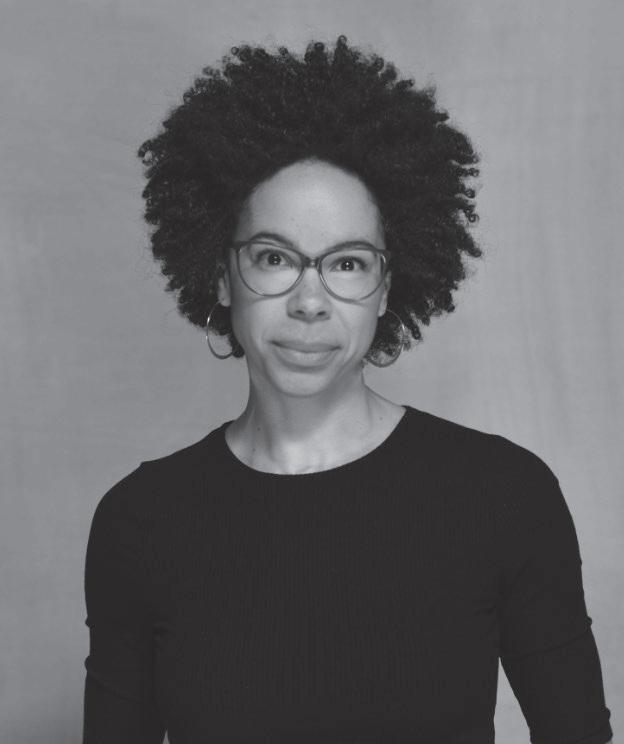
Dr. Ayana Elizabeth Johnson in Conversation with K. Corley Kenna
What if We Get It Right? Visions of Climate Futures
Tue, May 7 / 7:30 PM / Campbell Hall
Justice For All Lead Sponsors: Marcy Carsey, Connie Frank & Evan
Thompson, Eva & Yoel Haller, Dick Wolf and Zegar Family Foundation
Earth, Air, Fire, Water Series Sponsors: Patricia & Paul Bragg Foundation, Audrey & Timothy O. Fisher, Justin Brooks Fisher Foundation, and Sara Miller McCune
Presented in association with Citizens’ Climate Lobby, Community Environmental Council, Explore Ecology, The Land Trust for Santa Barbara County, Patagonia, Santa Barbara Botanic Garden, The Sea League, UCSB Bren School and UCSB Environmental Studies Program
Dr. Ayana Elizabeth Johnson is a marine biologist, policy expert, writer, and Brooklyn native. She is co-founder of Urban Ocean Lab, a think tank for the future of coastal cities. She co-edited the bestselling climate anthology All We Can Save, co-founded The All We Can Save Project, and co-created the Spotify/Gimlet climate solutions podcast How to Save a Planet
Recently, Dr. Johnson co-authored the Blue New Deal, a roadmap for including the ocean in climate policy. Previously, as executive director of the Waitt Institute, she co-founded the Blue Halo Initiative and led the Caribbean’s first successful island-wide ocean zoning effort. She also developed U.S. federal ocean policy at the Environmental Protection Agency and the National Oceanic and Atmospheric Administration.
Dr. Johnson earned a bachelor’s degree from Harvard University in environmental science and public policy, and a doctorate from Scripps Institution of Oceanography in marine biology, with a dissertation on the ecology, socio-economics and policy of sustainably managing coral reefs. The fish trap she invented to reduce bycatch won the first Rare/National Geographic Solution Search.
Dr. Johnson serves on the board of directors for Patagonia and GreenWave, on the advisory boards of Environmental Voter Project and Scientific American, and on the steering committee for the Ocean Justice Forum. Recent recognitions include the Schneider Award for climate communication, the Time 100 Next List and
appointment to the Secretary of State’s Foreign Affairs Policy Board.
Her writing has been published widely, including in The New York Times, Washington Post, and Scientific American. Dr. Johnson’s forthcoming book has the working title What If We Get It Right?: Visions of Climate Futurism.
She is the proud daughter of a teacher/farmer and an architect/potter. She is in love with climate solutions. Find her on Instagram at: @ayanaeliza.
K. Corley Kenna
K. Corley Kenna leads Patagonia’s Global Communications and Public Policy team. Kenna is a public affairs and communications professional with more than 20 years of experience. She served in the Obama administration with Secretary Hillary Clinton, serving as a Senior Advisor in the U.S. State Department in the office of Public Diplomacy and Public Affairs. Prior to joining the team at Patagonia, she was a Managing Director at Burson-Marsteller and a Vice President at Ralph Lauren. At Patagonia, Kenna is responsible for the development and execution of the company’s global communication strategy and the advancement of key policy issues related to the company’s business and advocacy priorities.
Special Thanks



 photo: Marcus Branch
photo: Marcus Branch
48 @artsandlectures @artsandlectures

Susan Magsamen
Susan Magsamen and Ivy Ross
Your Brain on Art: How the Arts Transform Us
Wed, May 8 / 7:30 PM / Campbell Hall




Co-presented with UCSB Library as part of UCSB Reads 2024, with support from the Office of the Executive Vice Chancellor
Susan Magsamen is the founder and executive director of the International Arts + Mind Lab Center for Applied Neuroaesthetics (IAM Lab) which is part of the Pedersen Brain Science Institute of the Johns Hopkins University School of Medicine where she is a faculty member in the Department of Neurology. At the intersection of science and the arts for more than 40 years, her work incorporates academic research and other ways of knowing to inform the design and implementation of arts-based programs and products to improve health, well-being and learning. She is also co-director of the Neuroarts Blueprint: Advancing the Science of Arts, Health and Well-Being, a collaboration between the Johns Hopkins International Arts + Mind Lab and the Aspen Institute’s Health, Medicine and Society Program.
Magsamen has worked in both the public and private sectors on initiatives addressing early childhood development, physical and mental health, playful learning, workforce innovation, family engagement, aging, creativity, social justice and under-resourced communities through the lens of the arts. She is the creator of the Impact Thinking translational framework, developed to advance effective interdisciplinary practices and approaches using the arts and aesthetics. She serves on the advisory boards of Creating Healthy Communities: Arts and Public Health, an initiative working to support public health applications of arts-based programs; the EpiLab at the University of Florida; the American Neuroscientists for Architecture
(ANFA); BrainFutures; Playful Learning Landscapes Action Network; and The Metropolitan Museum of Art’s education council. Additional advisory roles include the Science of Learning Institute at Johns Hopkins, First Book, Brookings Institution, the Clinton Global Initiative and Sylvan Learning. Magsamen is a member of the Society for Neuroscience, American Psychological Association, the National Organization for Arts and Health and the Alliance for the Arts in Research Universities. She is also a Royal Society of the Arts Fellow.
Magsamen served as guest editor of Child Art, the journal of the International Child Art Foundation, for a special edition called “Your Brain on Art.” She is also the co-host of the Arts & Mind Village webinar series, and a co-author of the white paper, “Creating Healthy Communities Through Cross-Sector Collaborations.” Additionally, she has published a range of peer-reviewed articles on the role of the arts in health and wellbeing including “The Aesthetic Brain: A Growing Case for the Arts,” in Cerebrum, a Dana Foundation journal.
In 2014, Houghton Mifflin Harcourt (HMH) acquired Curiosityville, an online personalized learning world Magsamen founded. She was named senior vice president of Global Learning Sciences at HMH, where she developed a global learning strategy for children, families and childcare providers. She is also the creator of Curiosity Kits, a hands-on, multi-sensory learning company acquired by Torstar in 1995. Under Magsamen’s leadership, Curiosity Kits expanded from children’s educational arts programs into the health
Reads Author Event
UCSB
49 (805) 893-3535 | www.ArtsAndLectures.UCSB.edu
and wellness sector. She created more than 600 arts learning programs and products in the arts, sciences and world cultures for children and adults at home and in institutional settings.
Author of a number of books for children and families, Magsamen’s body of work includes The Classic Treasury of Childhood Wonder and Family Stories (Random House, 2010) and The 10 Best of Everything Families (National Geographic, 2009). She was also the author of Family Stories, a five-part series that included Nighty Night, Tooth Fairy Times, My Two Homes, Family Night and Making Spirits Bright (Barnes & Noble, 2007).
Magsamen is a frequent speaker at national and global conferences.
Ivy Ross
Ivy Ross is the vice president of hardware design at Google. Ross and her team created the design language for the Google hardware products that launched in 2017, winning over 240 design awards over the last three years. Business Insider recently named her one of the 15 Most Powerful Women at Google. In 2019, she was voted number 9 of the 100 Most Creative People in Business by Fast Company. She was featured in the Surface Magazine issue on barrier-breaking figures in 2019. Previously, she held executive positions ranging from head of product design and development to chief marketing officer and president of several companies, including Calvin Klein, Swatch, Coach, Mattel, Bausch & Lomb, Old Navy and Gap.
Ross draws on her background in wide-ranging fields including sound therapy, quantum physics, psychology and play. One of her most notable innovations is Project Platypus, an experimental design initiative where a core team develops a new brand in an enriched environment over three months; the model has been adopted by Mattel (where she was formerly head of innovation) and Procter & Gamble (on whose design board she served). She also served on the Vatican’s Arts and Technology Commission and judged the 2017 Spark Design Awards, the 2018 Core 77 awards, Dezeen Design Awards 2020, Frame Design Awards 2020, Design Leader of the Year Awards 2020 and the Fast Company Design Awards.
Ross has been a contributing author to numerous books, including Louis Carter et al.’s The Change Champions Field Guide: Strategies and Tools for Leading Change in Your Organizations (Pfeiffer, 2004) and Stuart Brown and Christopher Vaughan’s Play: How It Shapes the Brain, Opens the Imagination, and Invigorates the Soul (Penguin,
2009). She has been referenced in Tom Kelley’s The Ten Faces of Innovation: IDEO’s Strategies for Beating the Devil’s Advocate and Driving Creativity Throughout Your Organization (Currency/Doubleday, 2005), Tom Parker’s Rules of Thumb: A Life Manual (Workman, 2008) and James M. Gordon’s Unstuck (Penguin, 2004), among other books. More recently, she was featured in 200 Women Who Will Change the Way You See the World (Chronicle, 2017). Ross was the keynote speaker at the Nokia World Design Conference, Fortune’s Most Powerful Women summit and Wisdom 2.0 in 2018. She has been cited by Fast Company and Business Week as “one of the new faces of leadership.”
In her earlier career as a jewelry designer, Ross opened a store in New York City that Vogue called “one of the most influential” of the 1980s. Her innovative metalwork in jewelry is in the permanent collections of 12 international museums, including the Smithsonian Museum in Washington, D.C., the Victoria and Albert Museum in London and the Cooper Hewitt Museum in New York City. She has received a prestigious National Endowment for the Arts grant and the Diamond International Award for her creative designs. Ross believes that combining art and intuition with science and technology makes magic happen – and brings timely ideas and brands to life. Ross is a frequent presenter at major international conferences and meetings including recent talks at Cannes Lions Festival, FORTUNE Brainstorm Tech Conference, SEMICON West, London Design Festival, TEDx, Mind the Product London, Transformative Technologies Conference, Frame Design Awards and Semi Permanent. In addition to these presentations, Ross is a featured expert in Wired and Fast Company magazines and was recently interviewed on Time Sensitive and Design Milk podcast series.
UCSB Reads
An award-winning program of the UCSB Library, UCSB Reads brings the UCSB and Santa Barbara communities together each year by reading a common book that explores compelling issues of our time.
Book signing follows the event.
Special Thanks
50 @artsandlectures @artsandlectures

Cristina Mittermeier
Between Land and Sea: Saving Our Oceans to Save Ourselves

Fri, May 10 / 7:30 PM / Campbell Hall
Earth, Air, Fire, Water Series Sponsors: Patricia & Paul Bragg Foundation, Audrey & Timothy O. Fisher, Justin Brooks Fisher Foundation, and Sara Miller McCune
Additional support provided by the Beth Chamberlin Endowment for Cultural Understanding

Presented in association with Citizens’ Climate Lobby, Community Environmental Council, Explore Ecology, The Land Trust for Santa Barbara County, Santa Barbara Botanic Garden, UCSB Bren School and UCSB Environmental Studies Program
Born in Mexico City, Cristina Mittermeier has been a passionate advocate for our natural world since she graduated from the University of Mexico with a degree in Biochemical Engineering and Marine Sciences. After several years of field work, Mittermeier noticed that what moved people the most were the stories about what she and her fellow researchers were studying – not the actual studies. She realized that images and stories help us comprehend abstract concepts better than numbers and graphs and that understanding creates empathy, and empathy drives action. Determined to harness this magic, Mittermeier enrolled in the Fine Art Photography program at the Corcoran College for the Arts in Washington, D.C. and began to tell these stories herself. Then in 2005, she rallied the troops, tapping fellow natural history photographers and banding them together to form a collective – called the International League of Conservation Photographers (ILCP) – to magnify their impact.
In 2014, Mittermeier would further hone her purpose and – together with her mission and life partner, Paul Nicklen – co-found SeaLegacy, a revolutionary nonprofit organization dedicated to the protection of the ocean. SeaLegacy harnesses the power of storytelling to raise awareness of critical marine issues and to drive advocacy, but the revolutionary twist is how it bypasses the traditional story pipeline by side-stepping the middleman: media channels. By building its own pipeline of storytellers, stitching together their unique social media audiences, and enabling straightforward funding pathways for committed corporate, institutional and individual partners, SeaLegacy is able to document
the natural world nearly 24/7 . . . not just when the phone rings with an assignment. For Mittermeier, it’s not just about the ocean. In her words, “My work is about building a greater awareness of the responsibility of what it means to be human . . . understanding that the history of every living thing that has ever existed on this planet also lives within us. It is about the ethical imperative that we are linked to all other species on this planet and that we have a duty to act as the keepers of our fellow life forms.”
In 2020, on the 50th anniversary of Earth Day, Mittermeier announced the most ambitious project of her career: “Only One,” a new digital technology product that amplifies stories, campaigns and solutions that sit at the intersection of ocean health and social justice and uses the power of media and technology to inspire individuals to take action to rebuild ocean life. A Sony Artisan of Imagery, Mittermeier was named one of National Geographic’s Adventurers of the Year in 2018. She is also the recipient of many awards, including the Mission Award from the North American Nature Photography Association and the Smithsonian Conservation Photographer of the Year Award. In recognition of her three decades of courageous journalism and making the pictures that tell the story of our planet, Mittermeier was recently presented with the Seattle Aquarium Sylvia Earle Medal and was the recipient of Travel + Leisure’s Global Vision Award for 2021.
Special Thanks
51 (805) 893-3535 | www.ArtsAndLectures.UCSB.edu
photo: Mercedes Kanada
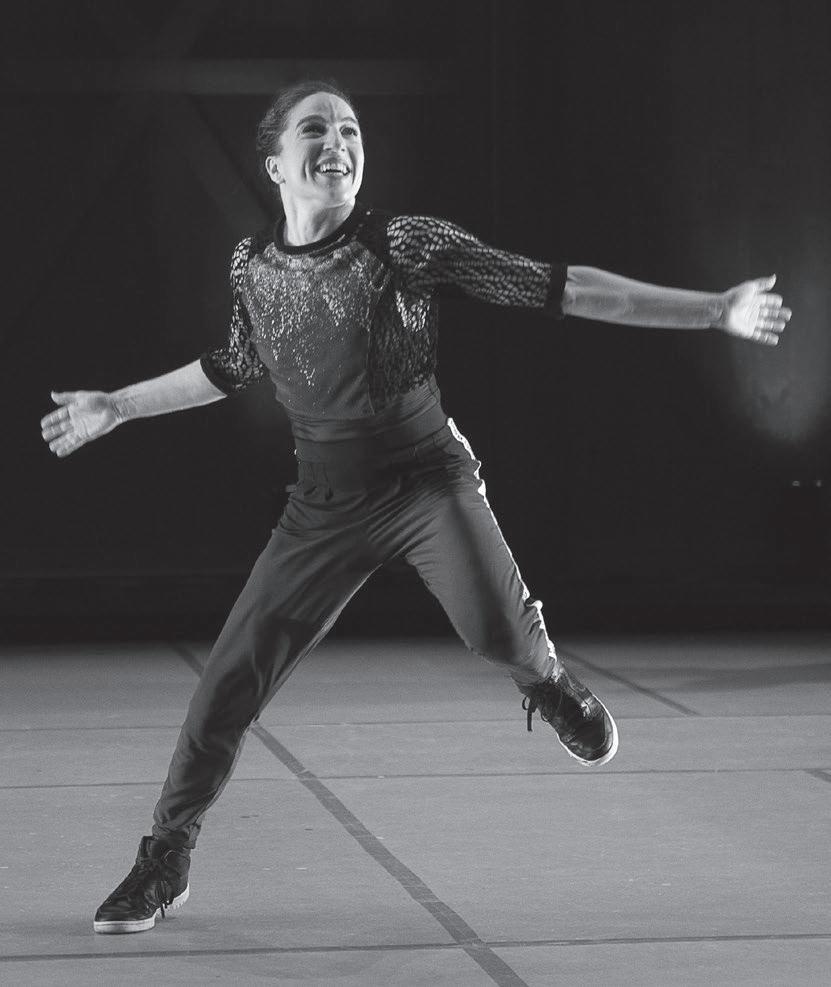
ODEON
Composer: Ernesto Nazareth
Percussion Arrangements: Sergio Krakowski
Lighting Designer: Kathy Kaufmann
Lighting Supervisor: LD DeArmon
Costume Designer: Mark Eric
Production Manager: James Garver
Company Manager: Taylor Craft
Musical Selections
Brejeiro
Odeon
Fon-Fon
Tenebroso
Apanhei-te Cavaquinho
Ouro Sobre Azul
Confidências
Ven Cá Branquinha
Batuque
Musicians
Eduardo Belo, bass
Angel Lau, percussion
Ben Rosenblum, piano and accordion
Jeremy Smith, percussion
Ephrat Asherie Dance
ODEON
Wed, May 15 / 8 PM / Campbell Hall
Running time: approx. 60 minutes, no intermission
Ephrat Asherie, Artistic Director, Choreographer and Dancer
Ehud Asherie, Music Director
Major Sponsor: Jody & John Arnhold
Presented in association with UCSB Department of Theater and Dance
Dancers
Ephrat “Bounce” Asherie, Manon Bal, Teena Marie Custer, Valerie “Ms. Vee” Ho, Matthew “Megawatt” West
About the Program
ODEON, an evening-length work for six dancers and four musicians, takes a hybrid approach to movement. Remixing and reconnecting various street and club styles while exploring their roots in West African rhythms and movements, ODEON blurs time, tempo and genre. The score, composed by fin-de-siecle Brazilian composer Ernesto Nazareth, blends popular Afro-Brazilian rhythms with classical European melodies. Musicians and dancers cross paths seamlessly on stage through choreography that reflects Nazareth’s fluid approach to music – layering breaking floorwork, house-dance footwork, New York style hustle and vogue – ODEON invites you into a world wholly its own.
About the Composer
Ernesto Nazareth (1863–1934) was a Brazilian composer and pianist. He published his first composition Você Bem Sabe (1877) at age 14. At this time, he began his professional career playing in cafes, balls, society parties and in the waiting rooms of movie theaters in Rio de Janeiro. Known for creatively combining musical influences from Brazil, Africa and Europe, Nazareth straddled the genres of popular and classical music, often blurring the boundary between the two worlds.
52 @artsandlectures @artsandlectures
photo: Christopher Duggan
Although greatly influenced by Chopin, Nazareth was also noted for his singular maxixe and choro compositions and composed over 210 waltzes, sambas, polkas and quadrilles during his lifetime. His work is now included as part of teaching programs for both classical and popular styles all over the world.
About the Company
Ephrat Asherie Dance (EAD) is a dance company rooted in African American and Latine street and club dances. Dedicated to exploring the inherent complexities of these dances, EAD investigates the expansive narrative qualities of various vernacular forms including breaking, hip hop, house and vogue, as a means to tell stories, develop innovative imagery and find new modes of expression. EAD’s first evening-length work, A Single Ride, earned two Bessie nominations in 2013 for Outstanding Emerging Choreographer and Outstanding Sound Design by Marty Beller. The company has presented work both nationally and internationally at ArtPower! at UC San Diego, the Apollo Theater, Dixon Place, El Festival Internacional Cervantino, FiraTàrrega, Jacob’s Pillow Dance Festival, The Joyce Theater, La MaMa, The Momentary, New York City Center, New York Live Arts, River To River Festival, Spoleto Festival USA, SummerStage NYC, Vail Dance Festival, White Bird, Works & Process at the Guggenheim and The Yard, among others. Along with creating new and innovative work, EAD is committed to educating, celebrating and bringing awareness to the history, expansiveness and vastness of street and club dances through workshops and classes, lecture-demonstrations, panel discussions, film screenings, open rehearsals, pre-show talks and post-show Q&As. For more information please check out www.ephratasheriedance.com or follow us on Instagram @ephratasheriedance for real time updates!
About the Artistic Team
Ephrat Asherie, Artistic Director, Choreographer and Dancer Ephrat “Bounce” Asherie is a New York City-based director, choreographer, performer and b-girl and a 2016 Bessie Award Winner for Innovative Achievement in Dance. Asherie has received numerous awards to support her work including Dance Magazine’s Inaugural Harkness Promise Award and two National Dance Project Awards. In 2019, she was the recipient of a New York Foundation of the Arts Fellowship and was a Jerome Hill Artist Fellow from 2021-2023. As Artistic Director of Ephrat Asherie Dance (EAD), Asherie’s work has been presented on stages nationally and internationally with commissions from companies including Malpaso, Philadanco! and Parsons Contemporary Dance and
additional commissions from Vail Dance Festival, Fall for Dance, River to River Festival, Firatàtrrega, Works & Process at the Guggenheim and the Kennedy Center. Additional directorial work includes UNDERSCORED: On Screen at Lincoln Center, FLOORISH, Solo Chini: Un Dia en Nueva York and In the MOment: A Drawing Dance (New York Premiere at Dance on Camera Lincoln Center). Asherie is honored to have been mentored by Richard Santiago (aka Break Easy) and to have worked and collaborated with Michelle Dorrance, Doug Elkins, Rennie Harris, Bill Irwin, Gus Solomons Jr. and Buddha Stretch, among others. Asherie earned her bachelor of arts degree from Barnard College, Columbia University in Italian and her MFA degree from the University of Wisconsin – Milwaukee where she researched the vernacular jazz dance roots of contemporary street and club dances. She is a co-founding member of the all-female house dance collective MAWU and is forever grateful to New York City’s underground dance community for inspiring her to pursue a life as an artist. www.ephratasheriedance.com
Ehud Asherie, Music Director
Ehud Asherie, “a master of swing and stride” (The New Yorker), is a jazz pianist who integrates the venerable New York piano tradition into his inventive style. Largely self-taught, or rather, “old-schooled,” Asherie learned the ropes at Smalls Jazz Club in Greenwich Village, spending the wee small hours of his early teens becoming a fixture of the late-night jam sessions. Mentored by the late Frank Hewitt, Asherie began to develop “his virtuosity and his ear for clean, crisp lines“ (The Star-Ledger). From Smalls to the Rainbow Room, from Lincoln Center to The Village Vanguard, Asherie has since worked with a broad range of musicians including: Eric Alexander, Roy Ayers, Peter Bernstein, Jesse Davis, Bobby Durham, Vince Giordano, Wycliffe Gordon, Scott Hamilton, Catherine Russell, Ken Peplowski and Clark Terry.
Asherie has toured clubs and festivals around the world, including South America, Europe and Asia. His playing can be heard on countless recordings, including the 2010 Grammy Award winning soundtrack of HBO’s Boardwalk Empire. Acclaimed album releases under his leadership have included Shuffle Along, which reinterpreted the music of Eubie Blake, Organic, which finds Asherie on organ, and Upper West Side and Lower East Side, duet projects featuring the saxophonist Harry Allen and his trio recording Music Makes Me. Asherie’s most recent trio recording is Wild Man Blues on the Capri Label. For more information please visit www.ehudpiano.com.a solo piano performance of Eubie Blake songs from the musical Shuffle Along.
53 (805) 893-3535 | www.ArtsAndLectures.UCSB.edu
Mark Eric, Costume Designer
Mark Eric resides in New York City, where he designs in his Manhattan studio. He trained at the Fashion Institute of Technology, where he was recognized as the Critics’ Choice upon graduating. After designing for several New York City houses, he discovered his passion for costuming and transitioned into primarily designing and styling for the stage. Eric has designed costumes for the Alvin Ailey American Dance Theater, American Ballet Theater, Paul Taylor Dance Company, Philadelphia Ballet, BalletX, Hubbard Street Dance Chicago, and Ballet Hispánico, among others. Instagram @MARKERICdesign
Kathy Kaufmann, Lighting Designer
Kathy Kaufmann is a two time Bessie recipient and New York City native. She has been a resident designer at the Danspace Project at St. Marks Church for over 15 years and has toured extensively throughout the world. She works regularly with many companies including Michelle Dorrance (Dorrance Dance), Music From The Sole, Joanna Kotze, The Bang Group, Eiko & Koma, Rebecca Stenn, Mariana Valencia and Mina Nishamura.
LD DeArmon, Lighting Supervisor
LD DeArmon is a recent Richmond, VA transplant. They previously worked in New York City from 2008-2020 in the field of dance as a stage manager, production manager and lighting designer. They have worked on projects for artists including Yvonne Meier, Yvonne Rainer, Yanira Castro, Ayano Elson, Tess Dworman, and David Thomson on his 2018 Bessie Award-winning he his own mythical beast. They are currently a member of TRUX - the DIY collective focused on re-engineering our human components into a collaboratively designed machine that generates power without harm.
About the Dancers
Manon Bal is a versatile professional dancer from Marseille, France. She has trained at the Institut de Formation Professionelle Centre International de Dance Rick Odums in Paris and at the prestigious Ailey School in New York City. She has been a member of Ephrat Asherie Dance since 2016. She has worked for respected choreographers such as Ronald K Brown, Rick Odums, Tweet Boogie, Michele Byrd McPhee, Jon Rua and Miki Tuesday. As a choreographer, Manon is the co-founder of Mozaik Dance in collaboration with Janine “J9” Micheletti and Sun Kim. The company has presented their work Sad Hope at Jacob’s Pillow, San Francisco Hip Hop Dance Fest and New Victory Dance.
Teena Marie Custer is a movement artist, street/club dance practitioner and healer based in Pittsburgh, PA. For the past 25 years, she has studied, researched, battled and performed nationally and internationally in various street/club dance communities, and is also a member of Venus Fly and Get Down Gang street dance crews. Her solo street dance theater work has been presented at various universities, Sadler’s Wells Theater in London, The American Dance Festival, Kelly-Strayhorn Theater, Ford Amphitheater in LA, The August Wilson Center and the American College Dance Association Gala Concerts. She has also created street/club dance theater works and been a guest artist at for over 35 university dance departments around the U.S. Teena Marie earned a bachelor of arts degree in Dance from Slippery Rock University and an MFA in Dance Performance from The Ohio State University. She was on faculty for 15 years at Slippery Rock University in the Department of Dance all while touring with Dance Alloy, Erika Randall, Bill “Crutchmaster” Shannon and Ursula Payne. She is grateful to be part of the Ephrat Asherie Dance family since 2012.
Fritzlyn “Fritz” Hector is a 2021 Bessie Award winning Haitian Brooklyn native director, choreographer, performer and educator seasoned with a multi-dimensional career of over 25 years. Hector traveled extensively worldwide for 20 years as a performer, workshop facilitator and current cast trainer for the Off-Broadway show STOMP. Hector is a principal dancer and rehearsal director for Forces of Nature Dance Theatre Company and is the director of The Fritzation Experience. He is a guest teaching artist for Broadway.com, Theatre Direct, New Jersey Performing Arts Center, Earl Mosley and a guest performer with the Dorrance Dance Company. Hector taught at Princeton University, New York University, Hofstra University, and is currently the Director of Dance at Long Island University Post. Hector is featured on NETFLIX’s Julie’s Greenroom, The Jimmy Fallon Show, Good Morning America, CBS Harry Connick Jr. Show, CBS WE California, Australia’s Adelaide Festival, VH1 Hip Hop Honors, PBS Free to Dance, Google Maps Live Wire navigation commercial and Amazon Prime’s Musica film.
Valerie “Ms. Vee” Ho (she/they) has proudly been with EAD since 2012. Vee’s career started at age 5, dancing and performing in their mom’s Chinese Dance Company in Vancouver, Canada. In 1988, Vee found Hip Hop and that was it, they were hooked. B-girling, popping and locking their way through the mid-90s into the early 2000s, the glittering lights of New York beckoned in 2003, leading to collaborations with Buddha Stretch, Rennie Harries, Luam, Maria Torres and Bradley Rapier.
54 @artsandlectures
Claims to fame include Kiesza’s “Hideaway” video and Step Up 3D. Ms. Vee is also a master teacher and is on faculty at Broadway Dance Center, Pace University’s Commercial Dance BFA program, and is the first ever Hip Hop teacher at The Juilliard School.
Matthew “Megawatt” West started dancing at the age of sixteen in Queens, NY. Megawatt is an active part of New York City’s underground dance community and teaches youth classes throughout the five boroughs. Megawatt is a regular guest artist with Dorrance Dance and can be seen in Baz Lurhman’s Netflix series The Get Down and battling with his crew, the Mellow Animals.
About the Musicians
Eduardo Belo is a Brazilian bass player and composer who has worked with many great musicians including Ari Hoenig, Chico Pinheiro, Duduka Da Fonseca, Helio Alves, Claudio Roditi, Kevin Hays, Gabriel Grossi, Koran Agan, Mario Adnet and many others. Eduardo earned his bachelor’s degree in Music at the Universidade de Brasília and his Master’s degree in Jazz from Queens College, City University of New York.
Angel Lau based in Newburgh, NY, is passionate about percussion, drawing inspiration from his Peruvian heritage, early drumming education with Jeff Haynes, classical studies at Purchase College and guidance from mentors in New York City. His musical journey spans Afro-Peruvian and Brazilian music, as well as various percussion styles, characterized by a commitment to lifelong learning. As a member of ODEON by Ephrat Asherie, Angel has showcased his talents at renowned venues across the U.S., including the Spoleto Festival, Vail Dance Festival and Fall for Dance. Currently serving as a faculty accompanist at Bard College, Angel eagerly collaborates on an upcoming project with Bessie Award Winner Souleymane Badolo from Burkina Faso. His diverse collaborations with artists such as Kala and the Lost Tribe, Lady Moon and the Eclipse, Wallace Roney Jr., Dre Hall, Anaïs Maviel, Decora and Nkodia highlight his dedication to enriching music’s vibrant tapestry.
Ben Rosenblum is an Award-winning New York City jazz pianist and accordionist. Since the release of his debut trio album, Instead (4 stars, Downbeat), Rosenblum has toured extensively with his trio and sextet throughout the United States, as well as internationally in Canada, Europe and Japan. He was a featured soloist at Carnegie Hall’s Stern-Perelman Auditorium, and has appeared at prestigious venues throughout the world, including at
the Appel Room at Lincoln Center, Kuumbwa Jazz Center, Ravinia, Himawari-No-Sato Concert Hall in Yokohama, Bird’s Eye in Basel and the Library of Congress. Rosenblum has been privileged to share the stage with many highly acclaimed jazz musicians, including extensive work with Curtis Lundy, Winard Harper, Deborah Davis and Chris Washburne, as well as appearances with Bobby Watson, Sean Jones, T.S. Monk, Warren Wolf, and Eliot Zigmund. Rosenblum’s musical interests also extend beyond jazz to include work in numerous world music scenes, including musical styles from Brazil, Peru, Croatia, Bulgaria, India, Ireland, Jewish traditions and more.
Jeremy Smith is a percussive artist whose foundation comes from his classical training at The Juilliard School, but his interests lie in a wide range of folkloric and modern percussion traditions from around the globe. Smith performs regularly with flamenco guitarist and composer Andreas Arnold, Peruvian music group Festejation, Middle Eastern music collective Brooklyn Nomads and global jazz quintet Mr. Ho’s Orchestrotica. He has also been a featured player in performances with the Boston Symphony Orchestra and Hudson Valley Philharmonic. Other collaborations and performances include the Los Angeles Philharmonic, New York Gypsy All-Stars, Farah Siraj, Antonio Lizana, Jorge Glem, Al Margen Flamenco, Fleur Seule Latin Big Band, Nashaz, Terraza 7 Big Band, Zāna, Quentin Angus and the New York Andalus Ensemble.
Credits
This work was made possible by the New England Foundation for the Arts National Dance Project, with lead funding from the Doris Duke Charitable Foundation and the Andrew W. Mellon Foundation, and was created in part during a residency at the Pillow Lab and with the support of the Jacob’s Pillow Fellowship at the Tilles Center for the Performing Arts at Long Island University Post. Additional development was made possible through a technical residency at MASS MoCA, co-sponsored by Jacob’s Pillow, with additional support from the National Dance Project’s Production Residency for Dance Program, funded by the Andrew W. Mellon Foundation.
EAD would like to thank the Lower Manhattan Cultural Council’s Extended Life Program, Lincoln Center Education, Guggenheim Works & Process and TOWN Stages for additional developmental support. Special thanks to Eyal and Yael Aronoff, Deborah and Charles Adelman, Stuart Coleman, Matthew and Cynthia Hertz, Marjorie Miller and Morrie Sandler for their generous support.
Fiscal sponsorship for Ephrat Asherie Dance is provided by Foundation for Independent Artists, Inc., a nonprofit organization administered by Pentacle (DanceWorks, Inc.). All donations made are fully tax deductible. Exclusive USA Tour Representation: Pentacle, Sandy Garcia: Sandyg@Pentacle.Org, www.Pentacle.Org
55 (805) 893-3535 | www.ArtsAndLectures.UCSB.edu

Bruce Liu, piano
Thu, May 16 / 7 PM / Hahn Hall
Running time: approx. 90 minutes, including intermission
Presented in association with UCSB Department of Music photo: Yanzhang
Joseph Haydn: Piano Sonata in B minor Hob. XVI:32
Allegro moderato
Minuet
Finale. Presto
Frédéric Chopin: Piano Sonata No. 2 in B flat minor, op. 35
Allegro amabile
Andante tranquillo – Vivace
Allegretto grazioso, quasi Andante
Nikolai Kapustin: Variations, op. 41
- Intermission -
Jean-Philippe Rameau: Selections from Pièces de clavecin
Les Tendres Plaintes
Les Cyclopes
Menuets I et II
Les Sauvages
La Poule
Gavotte et Six Doubles
Sergei Prokofiev: Piano Sonata No. 7 in B-flat major, op. 83
Allegro Inquieto
Andante Caloroso
Precipitato
About the Program
Joseph Haydn (1732-1809):
Piano Sonata in B minor Hob. XVI:32
Hadyn’s Sonata in B minor comes from a set completed in 1776. That year, Prince Esterházy decided to drastically reorganize the musical activities of his estate. A greater emphasis on opera and theater led to an equally pronounced reduction in instrumental music performance. This pivot led to a sharp decline in the symphonic output of the estate’s Kapellmeister, Joseph Haydn, yet he continued to compose keyboard sonatas and other smaller works.
As the Baroque period gave way to Classicism, other stylistic trends asserted their influence. Galant style sought a return to simplicity and symmetry after the so-called excesses of Baroque ornamentation and counterpoint. Sturm und Drang, a proto-Romantic offshoot of the literary movement of the same name, used angular melodies, sudden shifts of tempo and dynamic and stormy minor keys to great emotional effect. That movement reached its high-water mark as Haydn began composing this set.
This sonata sits within these diverging currents. In the first movement, Haydn juxtaposes Classical symmetry with Baroque spinning-forth of melody. The two themes provide sharp textural contrast. The first, austere but peppered with Baroque ornamentation, reflects a galant maxim attributed to Haydn: “If you want to know
56 @artsandlectures
whether a melody is really beautiful, sing it without accompaniment.”
Like the first movement, the second, a minuet and trio, also offers a study in contrasts. The melody of the major-key minuet is graceful, replete with trills and playful leaps. The trio, in a minor key, moves in a constant stream of sixteenth notes. While the tuneful minuet sits higher in the keyboard’s range, the gloomy trio murmurs in the lower range of the instrument.
The finale is a breathless, toccata-like Presto, punctuated by jarring pauses and stormy with syncopation. A four-note figure in the second section recalls the same pervasive rhythm in Beethoven’s Fifth Symphony. The movement concludes with a thundering coda in unison octaves.
Frédéric Chopin (1810-1849):
Piano Sonata No. 2 in B flat minor, op. 35
Arguably the most important figure in the last decade of Chopin’s life was his lover and later caregiver, the writer Amantine Lucile Aurore Dupin (pen name George Sand). Soon after beginning their affair, Chopin and Sand fled to Majorca with her children to avoid Parisian high-society gossip. What the couple no doubt intended as a quasi-honeymoon nearly ended in Chopin’s death.
Rather than a respite from the Parisian winter, Majorca offered relentless rain and damp. Island doctors reported that Chopin was sick with tuberculosis. Many locals refused to interact with the party as a result, forcing them to seek refuge in a frigid village monastery. Chopin grew so ill that they were forced to return to the mainland. Their dismal expedition concluded on a ship filled with hogs, who were given free rein of the deck.
By spring, Chopin had sufficiently recovered and the group made their way to Sand’s manor home in Nohant. Chopin wrote some of his greatest music there, including three of the four movements of his B-flat minor sonata (he had composed the funeral march two years earlier). Contemporary critics were unimpressed: Robert Schumann famously wrote, “Chopin has here tied together four of his most unruly children.”
Following a slow introduction Chopin introduces an agitated, galloping first theme. Its restlessness pervades the first movement. A contrasting second theme is more tuneful (Schumann compared it to the bel canto melodies of Vincenzo Bellini). The dialogue between these themes builds tension throughout the movement before concluding with a blast of fortississimo chords.
Chopin bases the explosively rhythmic scherzo on the mazurka, a Polish folk dance in triple time. The trio, by contrast, is a gentle, diaphanous song. Following a repeat of the scherzo, the movement concludes with a condensed reprise of the trio theme.
Before it was played at Chopin’s funeral at La Madeleine, the third movement funeral march had assumed a haunted place in Chopin’s psyche. Toward the end of his life, while performing the movement, he saw a vision of “the cursed creatures that one lugubrious night appeared to me at the monastery rising from the case of the piano.” In addition to Chopin’s own funeral, the movement has been performed to honor heads of state including Winston Churchill, John F. Kennedy, Chiang Kai-Shek and Anwar Sadat.
A strange, ephemeral finale concludes the sonata. Both hands mirror one another in octaves throughout the brief, virtually atonal perpetuum mobile. Pianist Anton Rubinstein compared the movement following the funeral march to “night wind howling around the gravestones.”
Nikolai Kapustin (1937-2020): Variations, op. 41
Nikolai Kapustin first encountered jazz in the years immediately following Stalin’s death. Nighttime broadcasts of Voice of America introduced the Ukrainian teenager to living legends like Louis Armstrong and clarinetist Benny Goodman. Deeply influenced by these performances, Kapustin began composing jazz-inspired pieces and formed his own quintet.
Official Soviet opinion on jazz had vacillated since its introduction to the USSR decades earlier. The government that had once boasted a State Jazz Orchestra in the 1930s and 1940s decried Western cultural influence during the Cold War – one caricature depicted a literal goat leading a jazz ensemble – yet jazz’s international popularity was such that a 1955 New York Times article called it America’s “Secret Sonic Weapon.” A year later, the State Department began hiring a multi-racial coalition of “jazz ambassadors” including Louis Armstrong, Benny Goodman, Duke Ellington and Dave Brubeck to engage in cultural diplomacy abroad.
Much of Kapustin’s output belongs to the “third stream,” a trend associated with the fusion of jazz and classical music. His Variations, written nearly thirty years after his first exposure to jazz, stand firmly within this genre. From the first measures the theme and six variations evoke a big band in miniature, incorporating numerous jazz
57 (805) 893-3535 | www.ArtsAndLectures.UCSB.edu
techniques like walking bass lines, left-hand stride in the opening and closing variations, and irrepressible swing.
The work opens with a statement of the main theme in parallel octaves (a hallmark of big band arrangements), a version of the opening bassoon solo in Igor Stravinsky’s ballet The Rite of Spring. Kapustin alludes to jazz pianists including Count Basie, “Father of Stride” James P. Johnson and his most famous pupils, “Fats” Waller and Erroll Garner; echoes of Garner appear in the right-hand octaves of the second variation. A short transition links the second variation to the third, a jaunty ditty in 3/4 time. Another transition leads into the fourth variation, a lush minor-key ballad. A pair of kaleidoscopic, bop-influenced variations conclude the set.
Jean-Philippe Rameau (1683-1764):
Selections from Pièces de clavecin
Les Tendres Plaintes
Les Cyclopes
Menuets I et II
Les Sauvages
La Poule
Gavotte et Six Doubles
Unlike Bach, Scarlatti, and other contemporaries, Rameau published a mere sixty keyboard pieces in his lifetime (Scarlatti composed over 550 keyboard sonatas alone). Despite this relatively small output, Rameau became one of France’s leading musicians of the eighteenth century. His Treatise on Harmony and the monumental New System of Music Theory made him one of the most discussed musicians of his age. Nicknamed the “Newton of Harmony,” his theoretical ideas and technical innovations have formed much of the foundation of the harmonic theory of the Western classical tradition.
Rameau uses a descending melody to evoke lamentation in “Les tendres plaintes.” Its uninspired title, translated as “The tender sighs,” belies an affecting composition that Rameau later reworked for his opera Zoroastre
In Les cyclopes, a depiction of the brothers who forged Jupiter’s thunderbolts, Rameau uses the “battery” technique, one he claimed to have invented. Of its innovative use in Les Cyclopes, Rameau wrote, “In one of the batteries the hands make between them the consecutive movement of two drumsticks; and in the other, the left hand passes over the right to alternately play the bass and treble.” The two menuets that follow offer a contrast in major-minor tonality.
Les Sauvages was inspired by a 1725 visit of six chiefs of the Illinois Confederation to Paris. The chiefs caused a small sensation when they gave a dance performance at the Théâtre-Italien. Rameau later reused this music in his opera-ballet Les Indes galantes.
La Poule opens with a clucking melody like a hen pecking for bugs. Rameau juxtaposes Baroque elegance with what Bruce Liu calls “the feeling of the primitive.” The suite concludes with a gavotte and six short but intense doubles (variations on the gavotte theme). The variations grow in complexity as they build to a virtuosic finale.
Sergei Prokofiev (1891-1953):
Piano Sonata No. 7 in B-flat major, op. 83
In response to the Nazi invasion of the USSR in June 1941, the Soviet government evacuated Prokofiev and other high-profile artists from major Russian cities. Prokofiev and his lover, Mira Mendelssohn, spent nearly two years traveling across the USSR. Prokofiev worked on a variety of projects during the war including film music, propaganda pieces, his opera War and Peace and a collection of chamber works. Among these latter pieces are his Sixth, Seventh, and Eighth Piano Sonatas, known collectively as his “War Sonatas” (the Seventh bears the nickname “Stalingrad,” perhaps a nod to the devastating Battle of Stalingrad, which was still in its final, furious weeks when the sonata premiered).
Ensconced in the Georgian capital of Tbilisi, Prokofiev completed the Seventh Sonata in 1942. Though Hitler’s Operation Barbarossa had failed to take Moscow, the Nazi’s 872-day siege of Leningrad (Saint Petersburg) continued to ravage Russia’s cultural capital. Upon the sonata’s premiere in early 1943, the public received this “restless and stormlike” (Prokofiev’s words to Mira) composition as an embodiment of the Soviet military struggle. Sviatoslav Richter, who premiered the work, agreed, writing, “With this work, we are brutally plunged into the anxiously threatening atmosphere of a world that has lost its balance. Chaos and uncertainty reign. We see murderous forces unleashed . . . We continue to feel and to love . . . In the tremendous struggle that this involves, we find the strength to affirm the irrepressible life-force.”
The sonata bears the tempo marking Allegro inquieto (lively yet restless). In the first bars the right hand introduces a simple gesture – the repetition of the same pitch four times – which appears throughout the movement. The opening is largely devoid of melody or
58 @artsandlectures
a sense of tonality; paired with jaunty tarantella rhythms and spartan textures, the effect is indeed disquieting. The following section, marked “expressive and sorrowful,” proceeds in listless chord changes. Prokofiev repeats both sections before a restless coda.
Prokofiev borrows the main melody of the second movement from Robert Schumann’s song “Wehmut” (Sadness). The first stanza reads, “I can sometimes sing / as if I were happy, / yet secretly tears well up / and so free my heart.” In the second section the music grows animated and dissonant, building to a climax of pealing church bells. The movement concludes with a brief return of the “Wehmut” theme.
The third movement, an impulsive toccata in 7/8 time, has become a bravura encore for pianists. The repeated pitch gesture introduced in the first movement reaches an obsessive apotheosis in this dazzling finale.
Program notes by Andrew McIntyre.
Bruce Liu
First prize winner of the 18th Chopin Piano Competition 2021 in Warsaw, Bruce Liu’s “playing of breathtaking beauty” (BBC Music Magazine) has secured his reputation as one of the most exciting talents of his generation and contributed to a “rock-star status in the classical music world” (The Globe and Mail).
Highlights of Bruce Liu’s 2023-2024 season include international tours with the Tonhalle-Orchester Zürich and Paavo Järvi, the Philharmonia Orchestra and Santtu-Matias Rouvali, and the Warsaw Philharmonic and Andrey Boreyko, as well as the Münchener Kammerorchester in a play-direct program. Furthermore, he makes anticipated debuts with the New York Philharmonic, Finnish Radio Symphony, Danish National Symphony, Gothenburg Symphony and Singapore Symphony Orchestras. He works regularly with many of today’s most distinguished conductors such as Gustavo Gimeno, Yannick Nézet-Séguin, Gianandrea Noseda, Rafael Payare, Vasily Petrenko, Jukka-Pekka Saraste, Lahav Shani and Dalia Stasevska.
Bruce Liu has performed globally with major orchestras including the Wiener Symphoniker, Accademia Nazionale di Santa Cecilia, Rotterdam Philharmonic, Orchestre Philharmonique du Luxembourg, Royal Philharmonic Orchestra, Los Angeles Philharmonic, San Francisco Symphony, the Philadelphia Orchestra, Orchestre symphonique de Montréal and NHK Symphony Orchestra.
As an active recitalist, he appears at major concert halls such as the Carnegie Hall, Wiener Konzerthaus, BOZAR Brussels and Tokyo Opera City and makes his solo recital debuts in the 2023-2024 season at the Concertgebouw Amsterdam, Philharmonie de Paris, Wigmore Hall London, Alte Oper Frankfurt, Kölner Philharmonie and Chicago Symphony Center.
Having been a regular guest at the Rheingau Musik Festival since 2022, Liu will return in summer 2024 to feature in a series of wide-ranging events. In recent years, he has appeared at La Roque-d’Anthéron, Verbier, Klavier-Festival Ruhr, Edinburgh International, Gstaad Menuhin and Tanglewood Music Festivals.
An exclusive recording artist with Deutsche Grammophon, Liu’s highly acclaimed debut studio album Waves spanning two centuries of French keyboard music (Rameau, Ravel, Alkan) was released in November 2023. His first album featuring the winning performances from the Chopin International Piano Competition received international acclaim including the Critics’ choice, Editor’s choice, and “Best Classical Albums of 2021” from the Gramophone magazine.
Bruce Liu studied with Richard Raymond and Dang Thai Son. Born in Paris to Chinese parents and brought up in Montréal, Liu’s phenomenal artistry has been shaped by his multi-cultural heritage: European refinement, North American dynamism and the long tradition of Chinese culture.
(805) 893-3535 | www.ArtsAndLectures.UCSB.edu 59

Justice for All Lead Sponsors: Marcy Carsey, Connie Frank & Evan Thompson,
Eva & Yoel Haller, Dick Wolf, and Zegar Family Foundation
Presented in association with UCSB departments of Chicana and Chicano Studies and Sociology
Xochitl Gonzalez is a cultural critic, producer, screenwriter, and the New York Times bestselling author of Olga Dies Dreaming. Named a Best Book of 2022 by The New York Times, TIME, Kirkus, Washington Post, and NPR, Olga Dies Dreaming was the winner of the Brooklyn Public Library Book Prize in Fiction and the New York City Book Awards. Her new novel, Anita de Monte Laughs Last, has been released with Flatiron Books. Gonzalez is a 2021 M.F.A. graduate from the Iowa Writers’ Workshop. Her non-fiction work has been published in Elle Decor, Allure, Vogue, Real Simple, and The Cut. As a staff writer for The Atlantic, she was recognized as a 2023 finalist for the Pulitzer Prize in Commentary.
Prior to writing, Gonzalez was an entrepreneur, fundraiser and all-around hustler for nearly 20 years. She is a board member of the Lower East Side Girls Club and the Brooklyn Public Library, and a trustee of the corporation of Brown University, where she received her B.A. in Visual Art. A native Brooklynite and proud public school graduate, she lives in her hometown of Brooklyn with her dog, Hectah Lavoe.
Books are available for purchase and signing in the lobby, courtesy of Chaucer’s

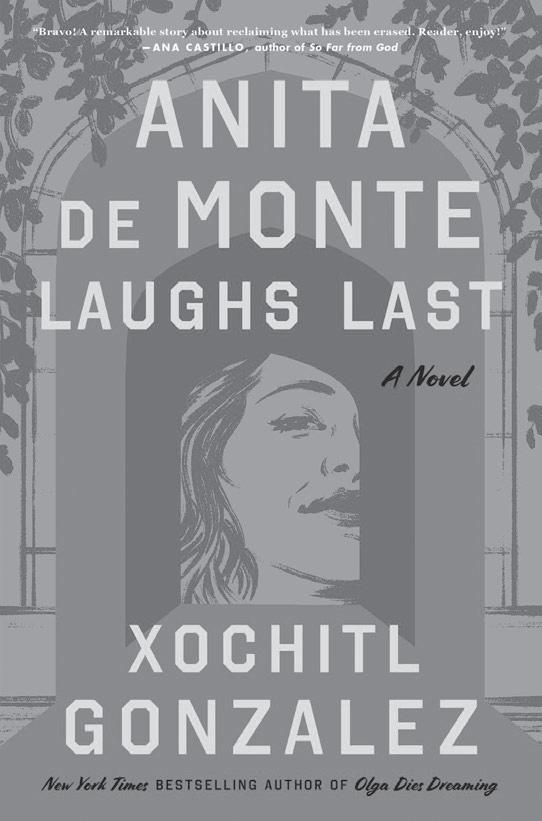 photo: Mayra Castillo
photo: Mayra Castillo
Xochitl Gonzalez Latinx Voices Are American Voices Fri, May 17 / 7:30 PM / Campbell Hall
60 @artsandlectures

Jacob Collier
DJESSE VOL. 4 NORTH AMERICA TOUR
with special guest Kimbra
Sun, May 19 / 7 PM / Arlington Theatre
Jacob Collier, vocals, piano, various instruments
Alita Moses, backing vocals, percussion
Lindsey Lomis, backing vocals, guitar
Erin Bentlage, backing vocals, keyboards
Ben Jones, guitar
Robin Mullarkey, bass
Christian Euman, backing vocals, drums
Jacob Collier
Recognized by audiences, critics, and fellow musicians alike as one of the most gifted young artists of modern times, 28-year-old Jacob Collier already has a seemingly endless list of achievements including six Grammy wins along with 12 Grammy nominations including Album of the Year in 2021.
As a result, his roster of collaborators is astoundingly varied and vibrant. Jacob’s voice has been featured on recent songs from the likes of Coldplay, SZA, Stormzy and Kehlani. In his own projects, Collier has worked with an unpredictable cast of artistic powerhouses, from Malian singer Oumou Sangaré to John Mayer, T-Pain, Ty Dolla $ign, Daniel Caesar, and Tori Kelly.
He has left such a mark on the artistic landscape already that Collier has been profiled by the most prolific media outlets, has recorded two NPR Tiny Desk concerts, has spoken at the world-renowned TED conference and has performed on multiple late night national TV shows.
Exploding onto the global stage with the viral success of his multi-frame, multi-instrumental YouTube covers,
Collier caught the attention of Quincy Jones and under his mentorship released his debut album, In My Room, in 2016. Recorded, produced and played entirely by Collier, In My Room heralded the arrival of a staggering musical mind.
Djesse (his most recent album project) has been a natural progression from the one-man process of In My Room, expanding to include collaborators from all over the world. What has been defined as a four-album epic, the resulting volumes of Djesse have delivered on Collier’s ambitious promise, featuring an incredible array of artistic peers and musical themes that encompass everything from orchestral composition to folk songwriting, R&B, rap and pop.
Most recently, Jacob has concluded the Djesse “quadrilogy” with his final installment, Djesse Vol. 4, having been released on February 29, 2024 on a leap day (an ode to it coming every four years). Djesse Vol. 4 includes a total of 16 sweeping songs and a staggering list of special guests who all appear on top of the album’s connective thread and beating heart: a collective “Audience Choir” of 150,000 fans’ voices, which Collier recorded in every corner of the world.
Ultimately, although Collier has already achieved more than most artists could hope for in a lifetime, he is still restlessly creative. He has plans for future projects centered on solo piano, orchestras and film scoring, while he has written for a forthcoming West End musical on the life of legendary opera singer Luciano Pavarotti. With such an ineffable and unpredictable career to date, the only certainty is that Collier will continue to surprise and delight, no matter which avenue he explores next.
(805) 893-3535 | www.ArtsAndLectures.UCSB.edu 61
photo: Kimbra Admat
Kimbra
New Zealand-born pop star and two-time Grammy Award winning tour de force Kimbra is readying her fourth studio album, A Reckoning. Produced in tandem with Son Lux’s Ryan Lott, A Reckoning features brand-new singles “Save Me” and “Replay,” which channel heartbreak amidst a global pandemic into bold new sonic territory.
This is just the latest chapter in a series of Kimbra’s overall career success: the experimental pop performer’s 2011 debut, Vows, bowed at No. 14 on the Billboard Top 200 and was certified platinum in Australia and New Zealand. She received Best Female Artist two years in a row at the ARIA Music Awards and took home five New Zealand Tui Awards including Album of The Year in 2012. That same year, she exploded into the public consciousness with “Somebody That I Used To Know,” a duet with Gotye that earned her two Grammy Awards for Record of the Year and Best Pop Duo/Group Performance, as well as reaching No. 1 on global charts (across 18 countries) and selling more than 13 million copies.
Her 2014 sophomore record, The Golden Echo, highlighted her eclectic style with a diverse set of collaborations from Thundercat, Omar-Rodriguez Lopez of The Mars Volta, Bilal and John Legend. Likewise, her third LP, 2018’s Primal Heart, saw her touring with the likes of Beck, Odesza and David Byrne.
Kimbra has performed on TV shows such as Saturday Night Live, Jimmy Kimmel Live, Tonight Show with Jay Leno, Last Call with Carson Daly, Late Show with David Letterman and Late Night with Seth Meyers, as well as performing at festivals such as Coachella, Austin City Limits and more.
Moving forward, Kimbra hopes listeners will find catharsis and connection on A Reckoning, whether they are contending with change in their own lives or processing shifts in the world around them.
62 @artsandlectures

Friday Nights Under the Stars at the Santa Barbara County Courthouse Sunken Garden Coming Soon!

July 5 - August 23

(805) 893-3535 | www.ArtsAndLectures.UCSB.edu photo: Isaac Hernández de Lipa

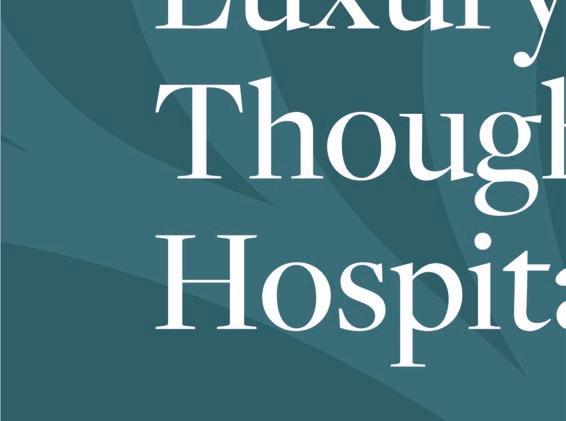






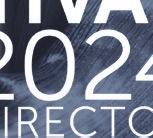



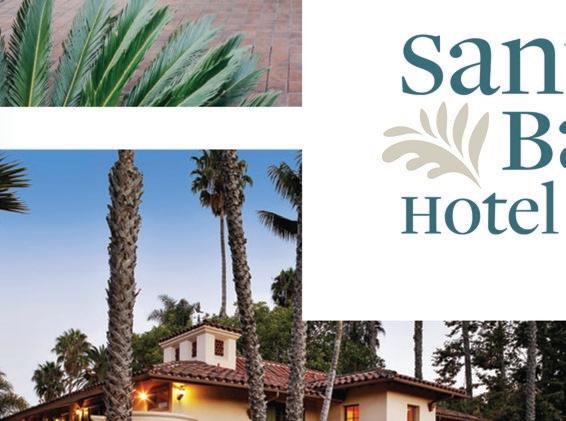








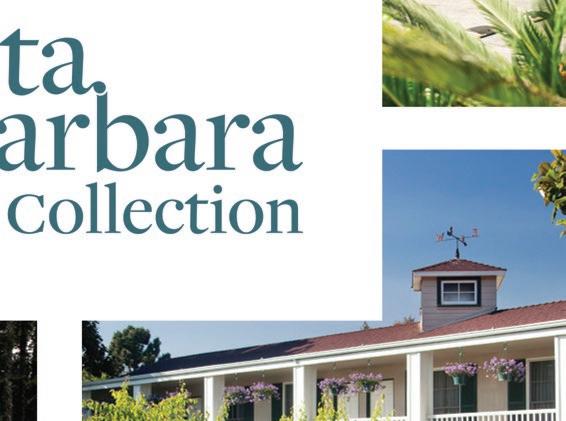


Free Summer Cinema
O O O
music is the adventure
O Where
2024 Tickets on Sale | OjaiFestival.org | 805 646 2053 Featuring Lucy Fitz Gibbon, soprano Alexi Kenney, violin Jay Campbell, cello Brentano String Quartet Mahler Chamber Orchestra



The Leta Santa Barbara Goleta, Tapestry Collection by Hilton is the heart of the good life, home to several innovative companies.
CAYA Restaurant and Bar, "Come As You Are" and experience a modern culinary adventure.
Minutes from Santa Barbara Airport; Goleta Amtrak Station and the University of California, Santa Barbrara.





Open
3321
• www.chaucersbooks.com
Books
Over 150,000 Titles for Every Age & Interest!
9:00am-8:00pm Daily
State Street, Loreto Plaza 805-682-6787
Chaucer's
Your Local Independent Bookseller Since 1974
THELETA.COM @THELETAHOTEL

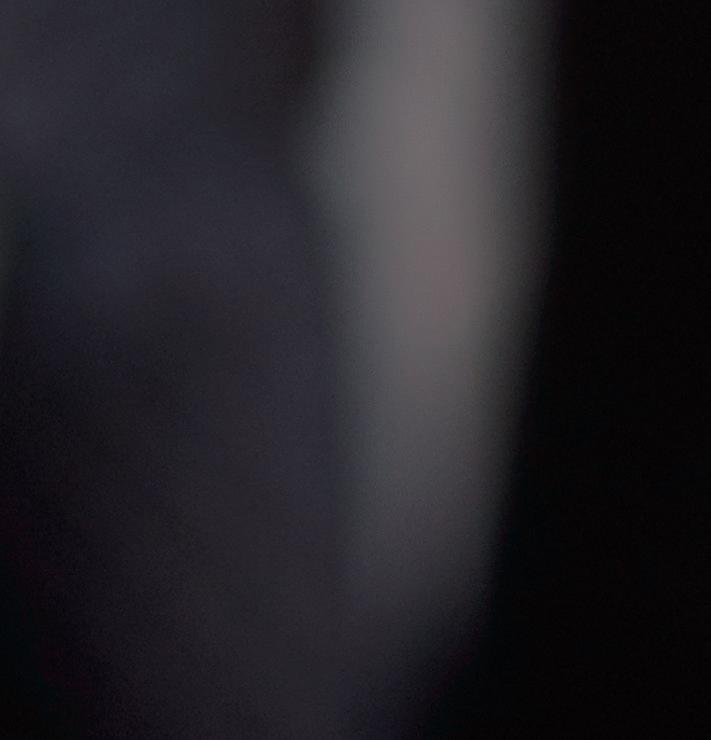


Listen to live jazz music and revel with fellow guests while you sip on your new favorite concoction. Reveal the secret passcode to your server and receive a complimentary Negroni.






SECRET PASSWORD CLUE:
The famous Route 66 was created in 1926. Which two major cities sit at each of its ends?
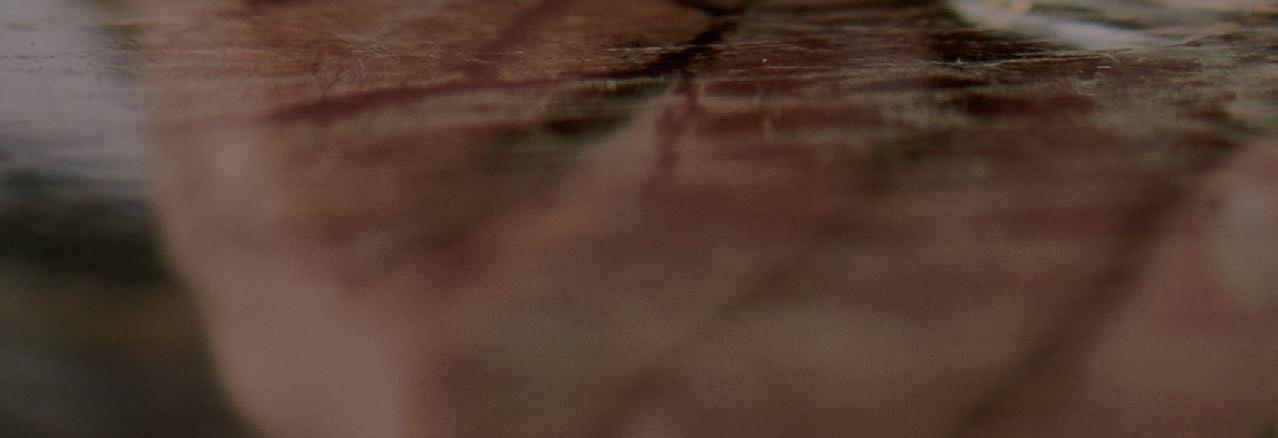


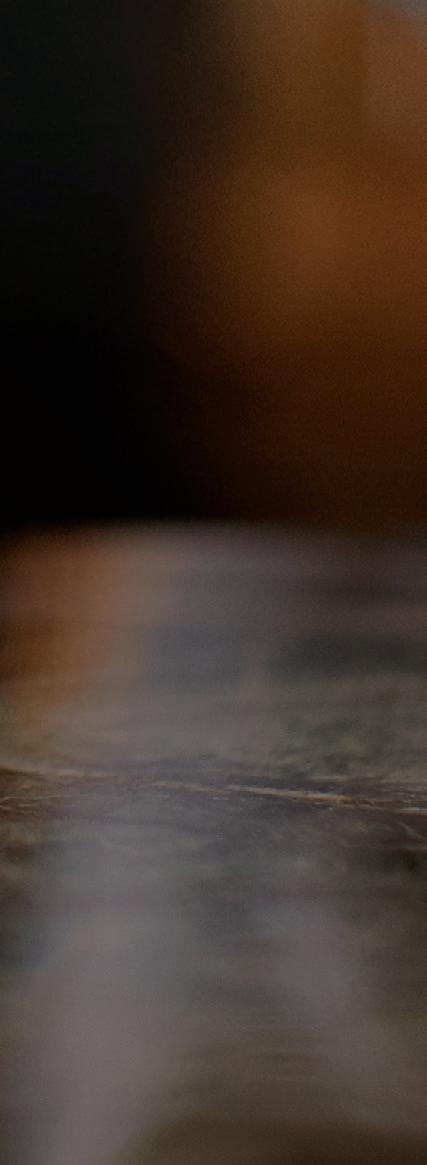
+ JAZZ THURSDAYS
PM TO 9 PM
Alvarado
| 805
5800 | concierge.ele@belmond.com
GIN
6
800
Place, Santa Barbara, CA 93103
845
Belmond.com

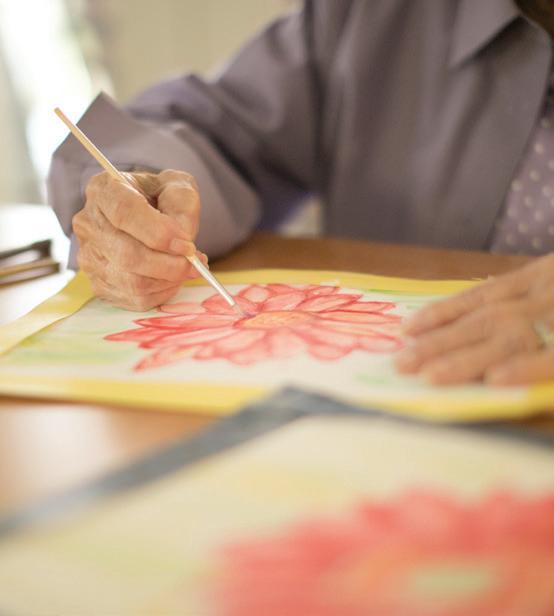



More Community ...Better Retirement Schedule Your Tour Now! 805.687.0793 | vistadelmonte.org 3775 Modoc Road, Santa Barbara, CA 93105 Wellbeing has many sides. I find many of them here, including fitness and aquatics, tai chi, bridge, fine dining, art, music and more. I have cleared the path to find my heart’s desire and enjoy the freedom of a true community. Create Meaningful Connections INDEPENDENT LIVING | ASSISTED LIVING | MEMORY CARE CA License #425800464 COA# 196 We’re an equal opportunity housing provider.
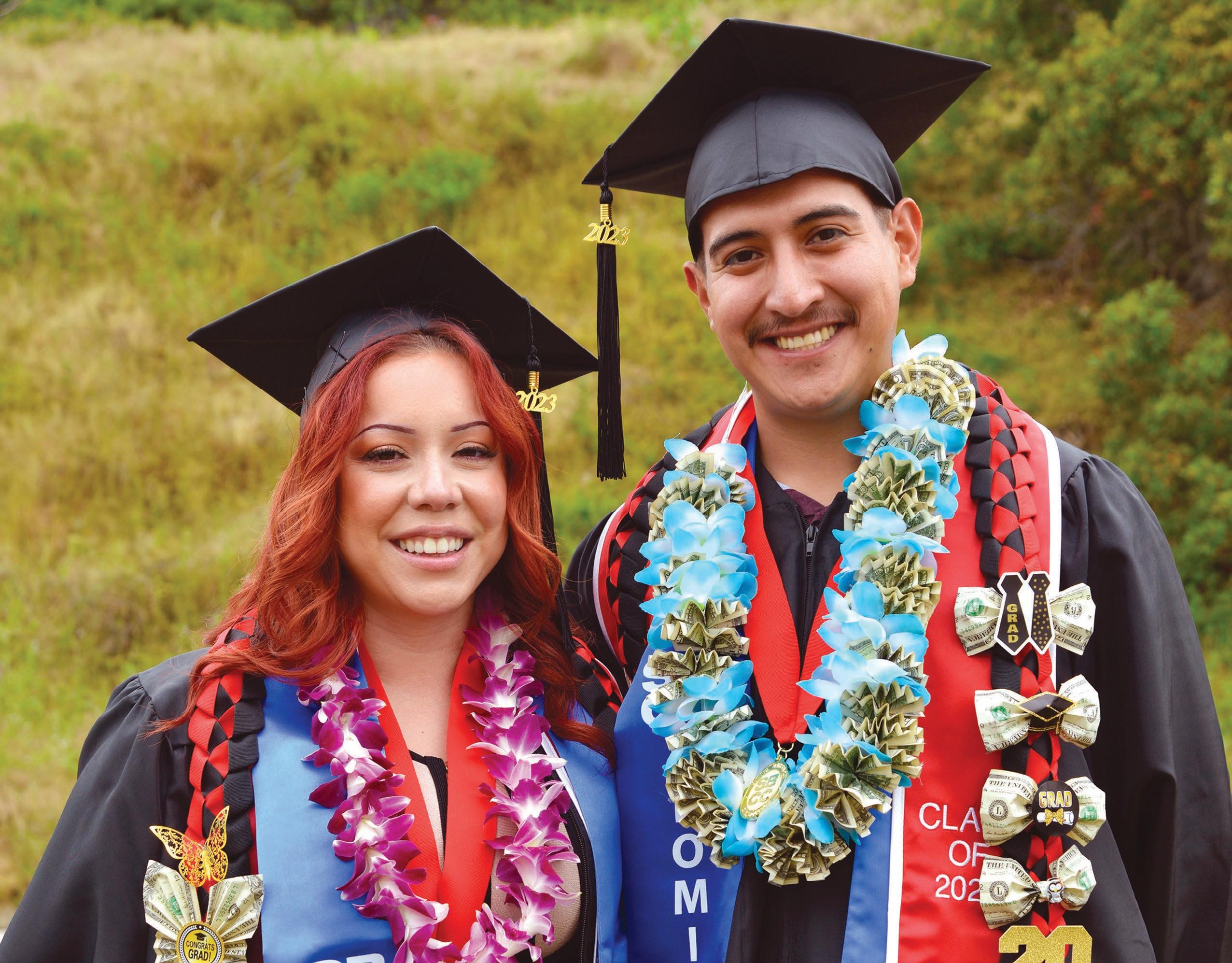

The SBCC Promise
The SBCC Promise provides all recent, local high school graduates with the opportunity to pursue their dreams at Santa Barbara City College, covering all fees, books, and supplies for two years.
The SBCC Foundation partners with generous businesses, individuals, and organizations to invest in our community’s college, supporting the SBCC Promise, student success programs, scholarships, emergency grants, and more.


Your gift makes it possible.
sbccfoundation.org


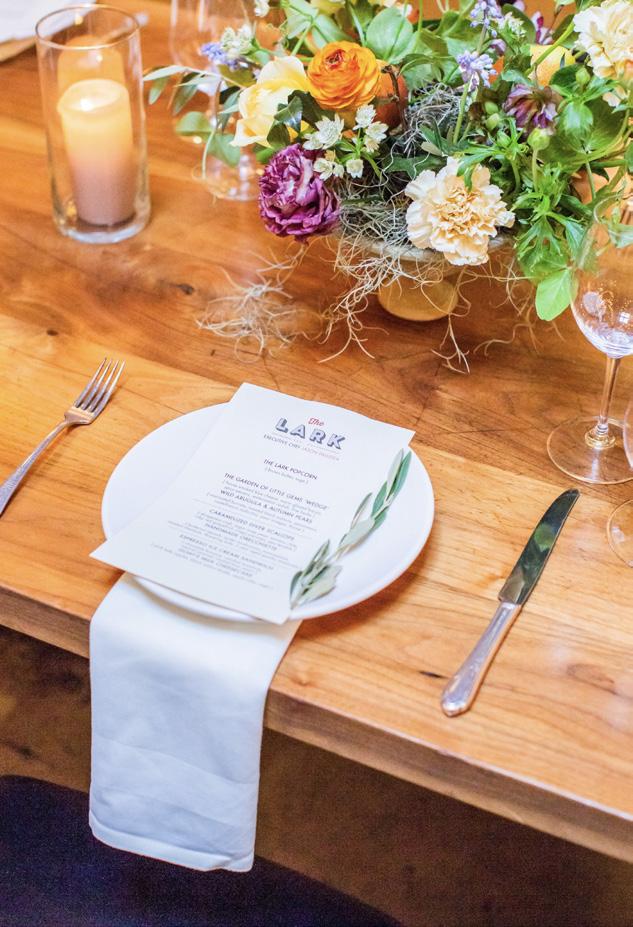



With an emphasis on seasonal, locally sourced ingredients, Acme Hospitality offers inspiring menus - from Spanish tapas and paella at Loquita and scratch-made dishes at The Lark to early California rancheroinfluenced flavors at La Paloma. Enjoy woodfired pizzas from Lucky Penny while sipping local wines at the Santa Barbara Wine Collective and don’t forget to visit Helena Avenue Bakery to pick up pastries to go, or enjoy an afternoon meal on the patio.
And with more than 15 immaculately appointed private event spaces - whether you’re enjoying a dinner for two or 200, Acme offers the perfect backdrop for any special celebration.
ACME HOSPITALITY EVENTS
events@acmehospitality.com
acmehospitailty.com


For general reservations, please contact the restaurant directly. We look forward to hosting you!
La Paloma Cafe
The Lark
Pearl Social Lucky Penny
Santa Barbara Wine Collective
Helena Avenue Bakery Loquita




















































































































 photos: David Bazemore
photos: David Bazemore













 Grandeza Mexicana at Ellwood Elementary School
photos: Isaac Hernández de Lipa
Mariachi Reyna de Los Angeles performs a free concert at The Marjorie Luke Theatre
Grandeza Mexicana at Ellwood Elementary School
photos: Isaac Hernández de Lipa
Mariachi Reyna de Los Angeles performs a free concert at The Marjorie Luke Theatre








 photo: Daniel Williams
photo: Derek Shapton
photo: Daniel Williams
photo: Derek Shapton















 photo: Mayra Castillo
photo: Mayra Castillo
































































